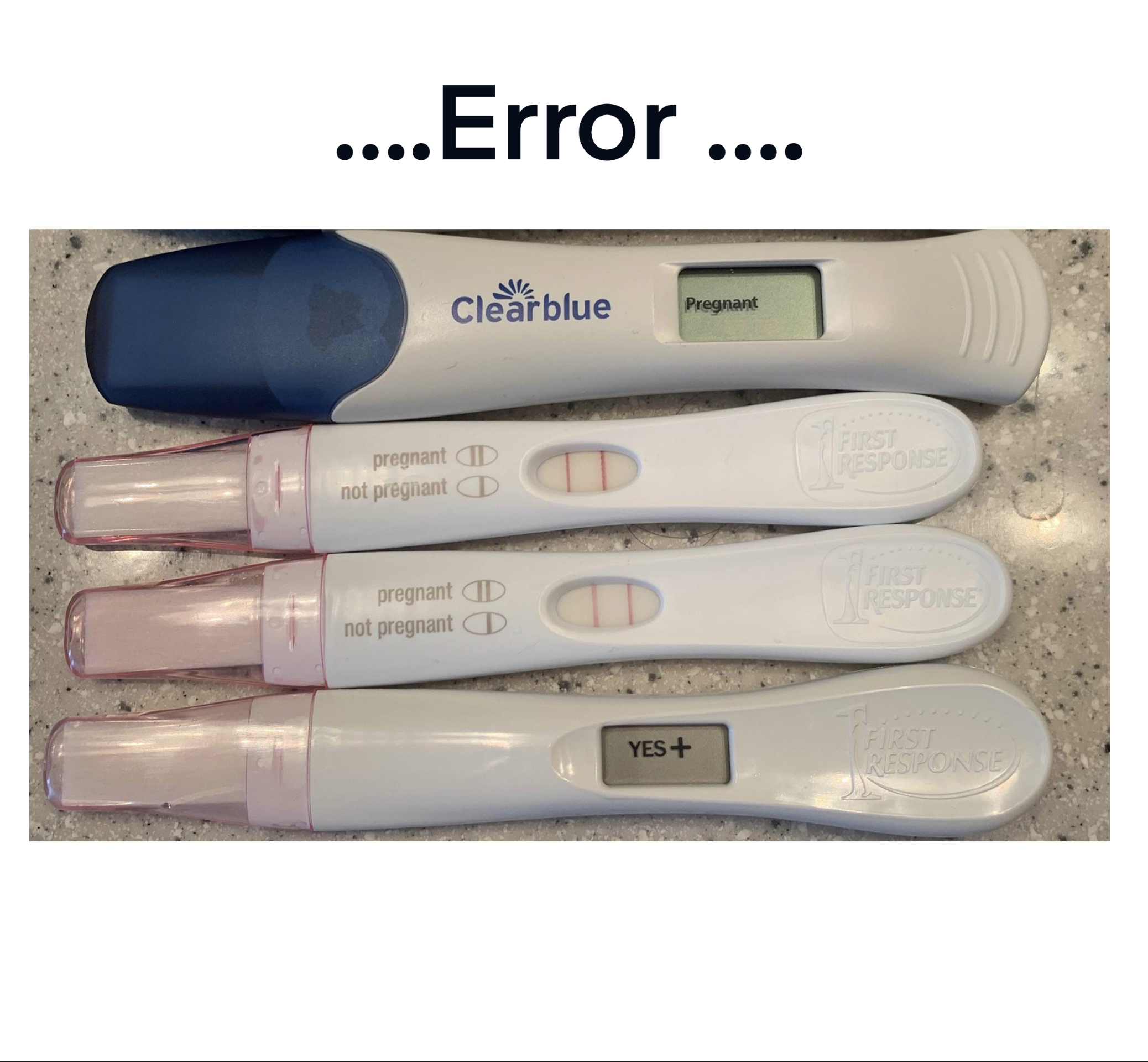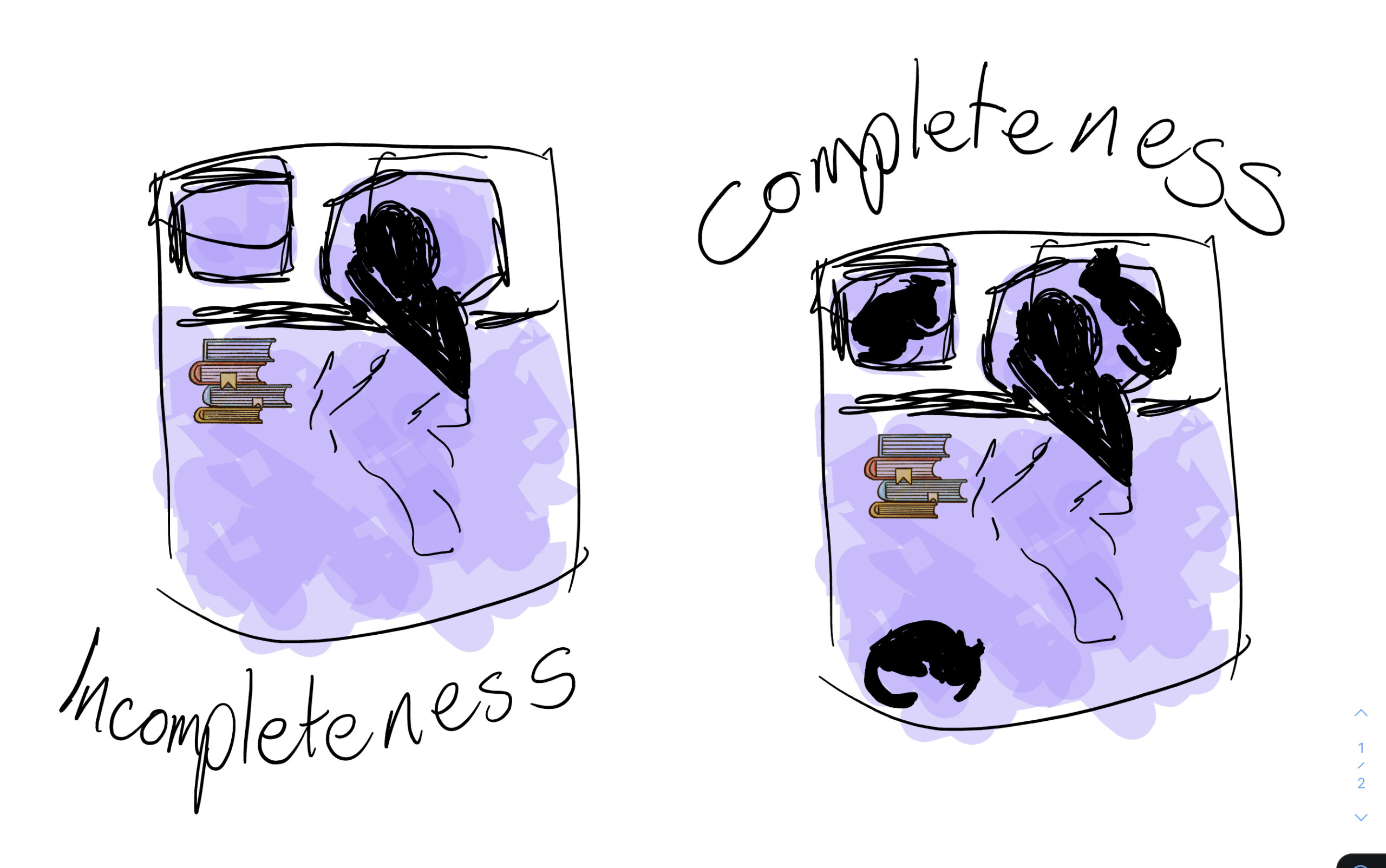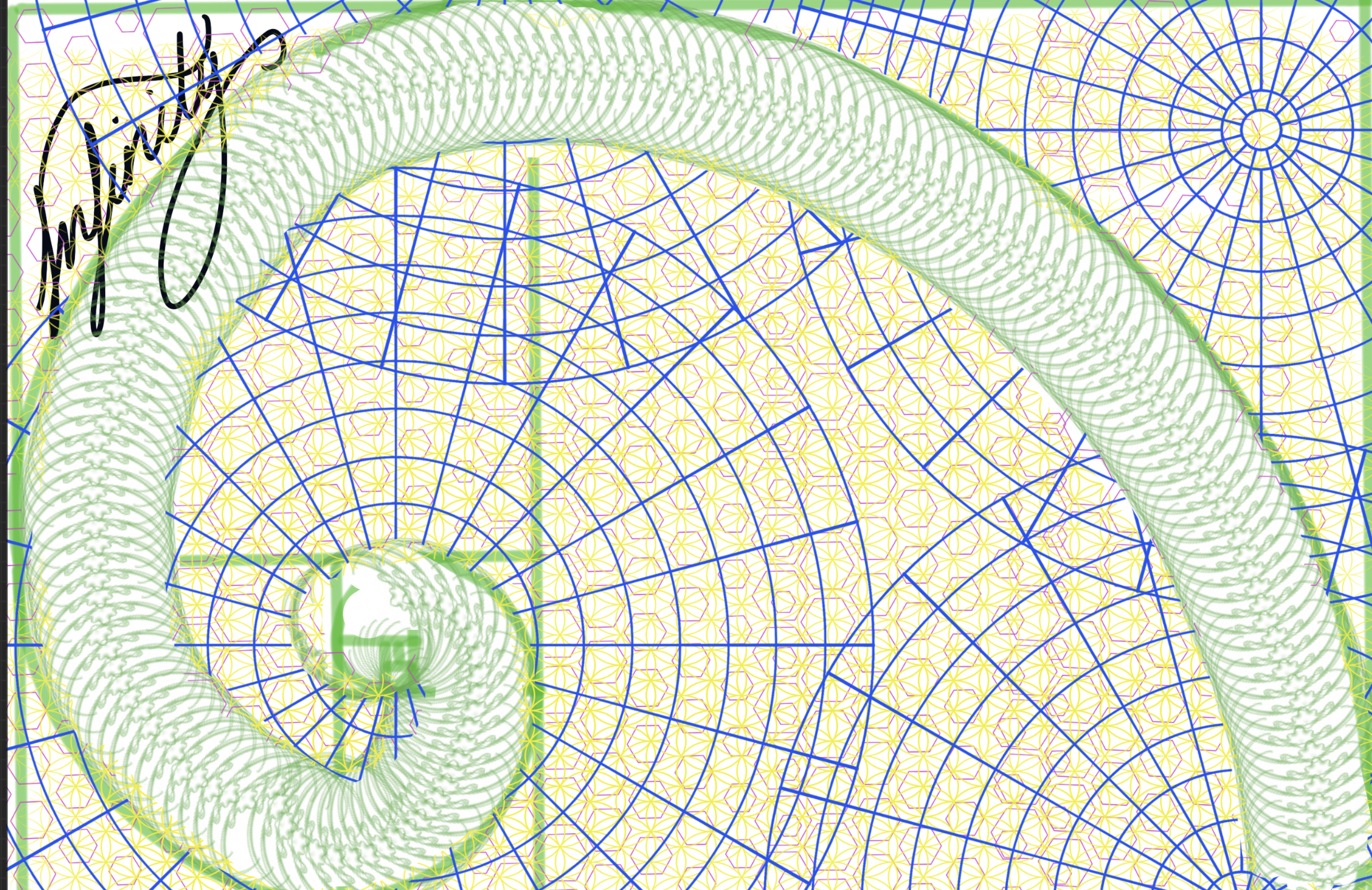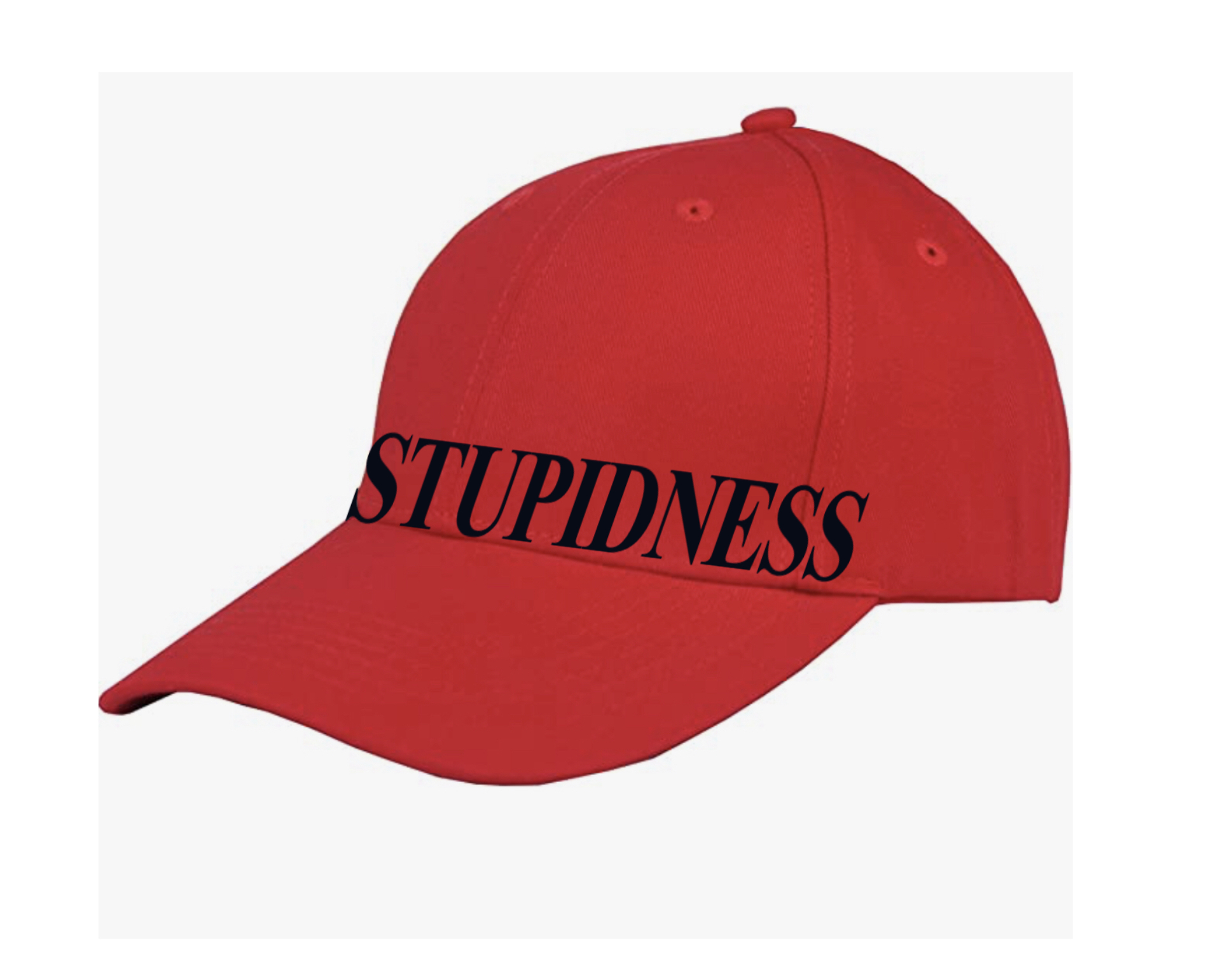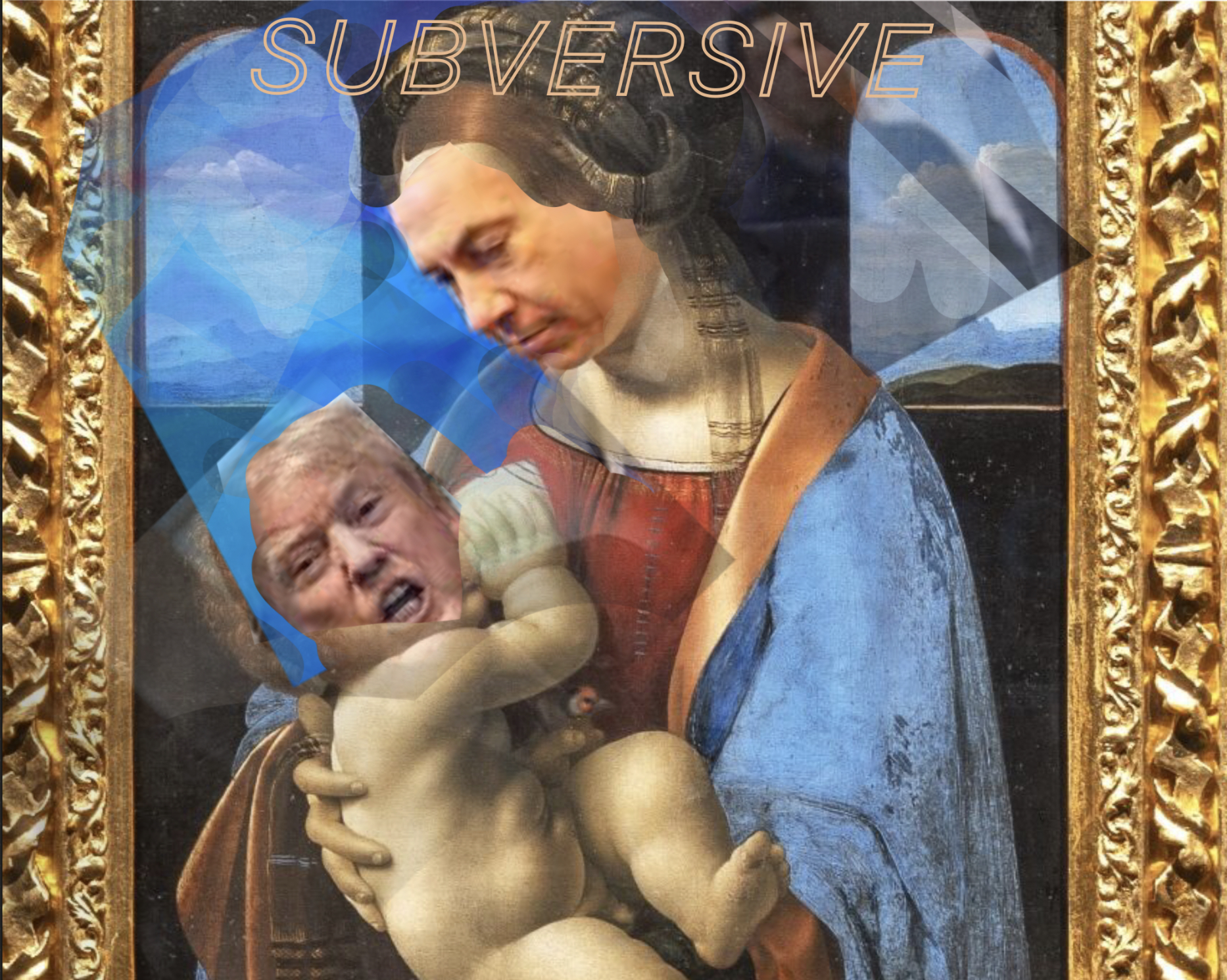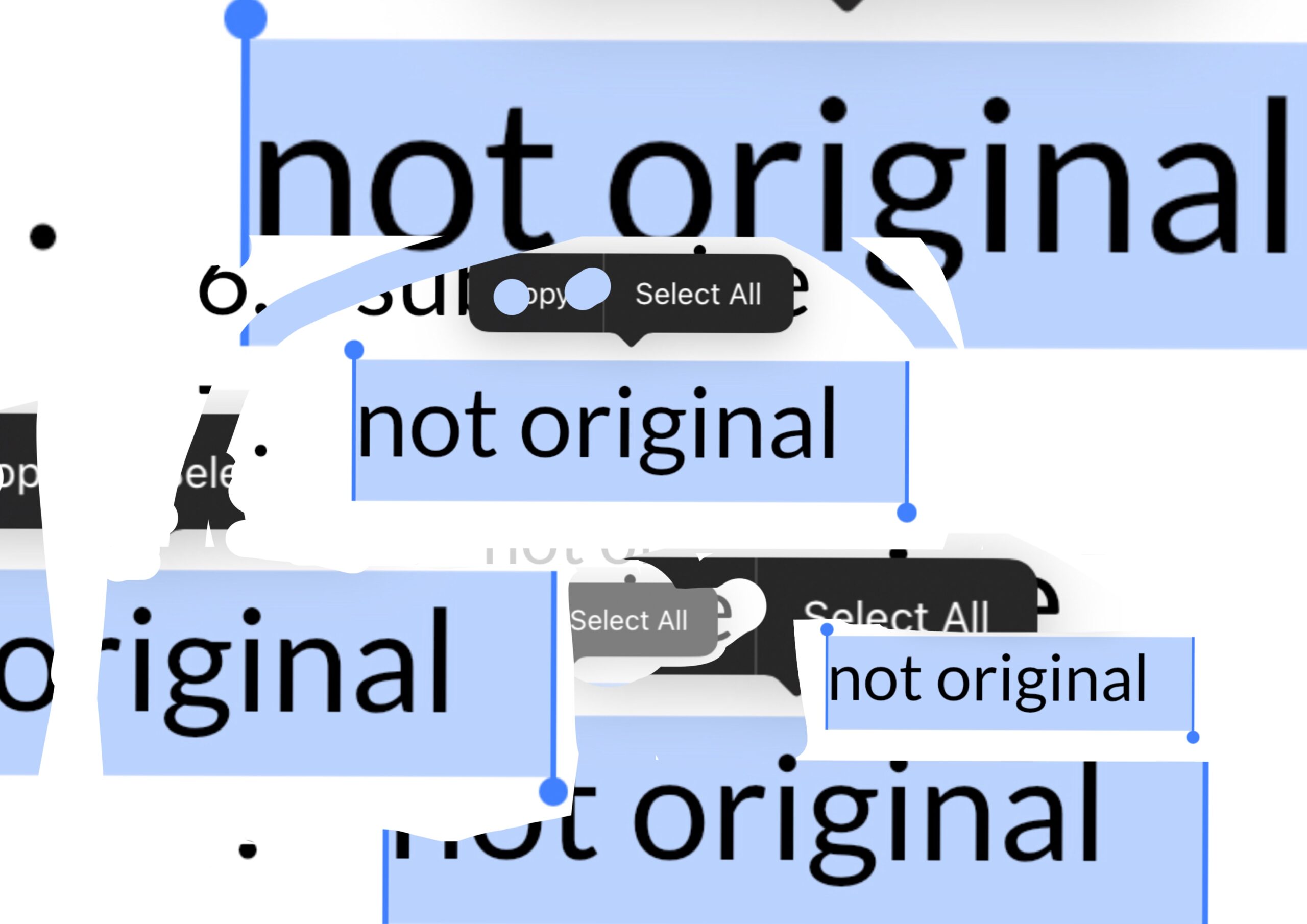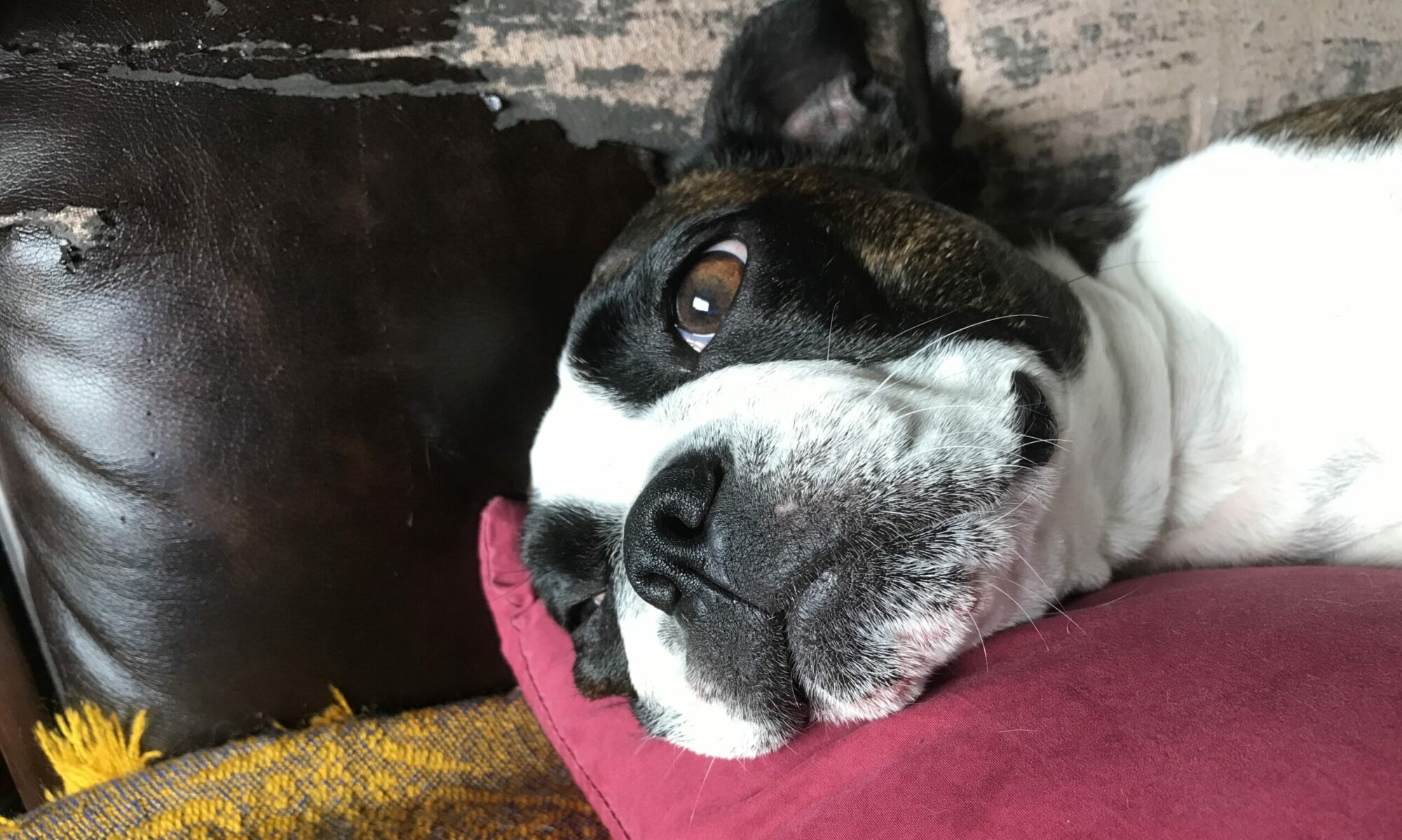FIN 140 Unit 1
Process blog
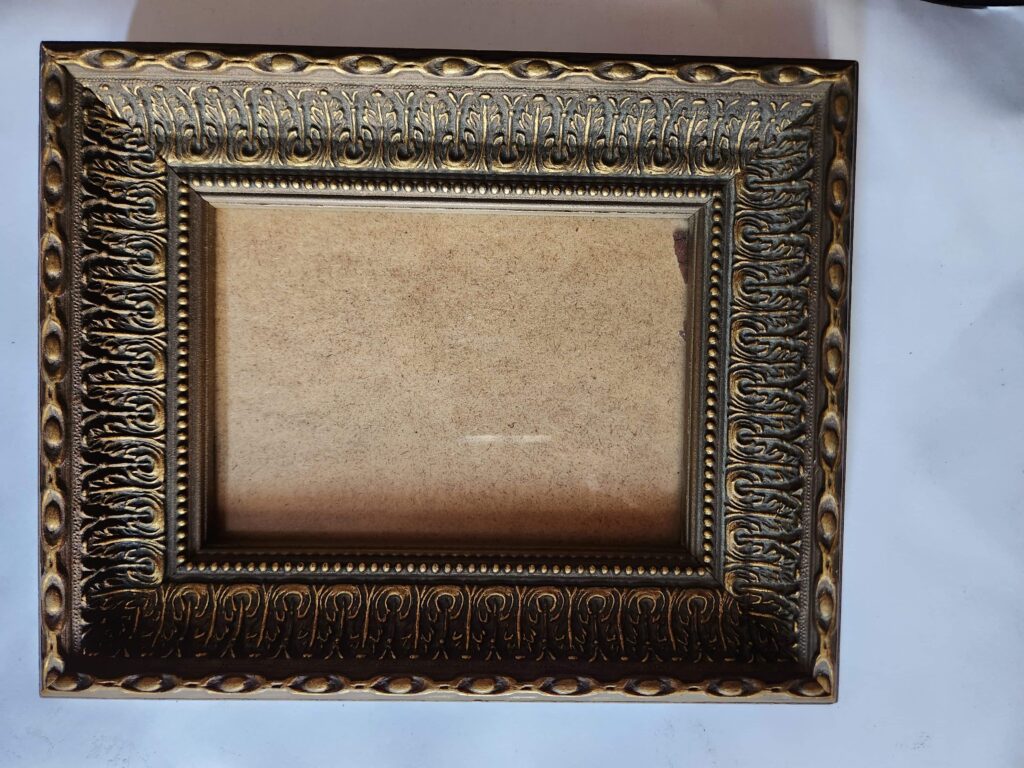
Name the object:
Decorative photo frame
- Describe the object (size, colour, material, handmade, manufactured, etc.):
Object is 8×7 inches , carved ornate light wood with a glass frame inside. Appears to be manufactured but could be handmade.
- What is the intended function(s) of the object:
Intended function is to display and protect photos, memorabilia, art etc. Also used to make individual art stand out.
- What is the cultural context of the object?
(What era was it made? Is there a geographical connection? Is there a connection to gender, class, or race? Is the object taboo, a banal everyday item, or sacred, etc?)
Frames have been used in art for centuries. They were extremely ornate and huge panels were made during the renaissance with extremely ornate frames. They are normally associated with rich , expensive things like Art pieces, portraits etc.
- Do you have a personal connection to the object?
(Does the object conjure a memory, symbol, or reaction for you on a personal level?)
The frame was bought in a thrift store and I loved that it was small and yet so decorative. I haven’t put anything into it because photos looks strange juxtapose to the large ornate detail and layers, so I just enjoy it as is.
- Name the ways the object can be manipulated? (Broken, wrapped, filled, burned, stitched, etc.)
- Burnt
- Taken apart
- Molded
- Object placed in it
- Objects placed around it
- Glued
- Painted
- Stripped
- Glass can be broken
- Mental Associations 1: Name three (3) things/elements that have a commonality or similarity to this object.
- Mirrors
- Doors
- Windows
- Mental Associations 2: Name three (3) things/elements that are opposite or in contrast to this object.
- Ovals
- Plastic covers
- Tupperware
- Name the object:
Decorative pinecone
- Describe the object (size, colour, material, handmade, manufactured, etc.):
Object is a pine cone, wood structure with layered “leaves” . It is brown and fawn and dry to the touch. It is a natural occurring object but smells like cinnamon as it was used for Christmas decorations.
- What is the intended function(s) of the object:
The intended function of this object was to create a visual and nasal display for Christmas. It is supposed to be put in a tree, wreath or left in the home as a decoration to create a cinnamon smell .
- What is the cultural context of the object?
(What era was it made? Is there a geographical connection? Is there a connection to gender, class, or race? Is the object taboo, a banal everyday item, or sacred, etc?)
- Pine cones are symbols of fertility in many cultures
- It’s a sacred symbol and many geometric patterns are based off of its natural design.
- Cones heat up and open in heat , thus regenerating forests after fires.
- Many animals depend on them as a food source thus making them integral to many ecocultures
- Cones were used in Mesopotamia for purifying and warding away evil and are depicted in many areas of their art.
- Do you have a personal connection to the object?
(Does the object conjure a memory, symbol, or reaction for you on a personal level?)
I bought a bunch of these our first Christmas in Canada and they remind me of love and family, this is the only remaining one lol
It has a cinnamon scent on it so I had them on the table to create an amazing holiday smell. Scent had as much to do with Christmas as visual decorations I think as the smell of certain things brings it to mind instantly.
- Name the ways the object can be manipulated? (Broken, wrapped, filled, burned, stitched, etc.)
- Broken apart
- Used as a stamp
- Rolled in materials such as gold or paint.
- Burnt
- Holes can be put in the leaves and hung individually
- Mental Associations 1: Name three (3) things/elements that have a commonality or similarity to this object.
- Acorns
- Wreaths
- Gnomes
- Mental Associations 2: Name three (3) things/elements that are opposite or in contrast to this object.
- Soap
- Ribbon
- Plastic Xmas decorations
- Name the object:
Coil Tattoo machine
- Describe the object (size, colour, material, handmade, manufactured, etc.):
The tattoo machine is 3×3 inches . It’s a black metal frame, with copper accessories, an electric capacitor, steel springs and wrapped copper coils. It was originally bought in the early 2000s in Poland but has been adapted and modified since.
- What is the intended function(s) of the object:
It’s function is to permanently place ink into skin by process electromagnetic coils to power it.
- What is the cultural context of the object?
(What era was it made? Is there a geographical connection? Is there a connection to gender, class, or race? Is the object taboo, a banal everyday item, or sacred, etc?)
- The electric tattoo machine was patented by Samuel O’ Reilly in New York in 1891.
- This changed the way tattooing was done and created a new style and era of tattooing .
- Seen as lower class, working men often in the services or incarcerated had tattoos.
- Women with tattoos were often seen as carny type as it was highly unusual for women to be tattooed, due to their societal role at the time.
- It has created a rapid growth and acceptance into society these days and opened tattooing to more realism.
- Seen as old world these days , coil machines aren’t used much and when they are it’s seen as a status symbol in the tattoo world.
- Tattooing has been banned in many countries and traditional tattooing and its methods were wiped out mainly by colonial oppressive governments.
- While the machine itself is rarely seen as sacred , the application and process should still be seen as what it originally meant.
- Do you have a personal connection to the object?
(Does the object conjure a memory, symbol, or reaction for you on a personal level?)
This machine was gifted to me by one of my teachers- in pieces . I had to put it together with pieces from other machines and adapt it to suit the type of tattooing I wanted . This machine is set up to be a colour packer.
Now it sits in a cabinet in work with all my other old frankenmachines lol
- Name the ways the object can be manipulated? (Broken, wrapped, filled, burned, stitched, etc.)
- Taken apart
- Burnt
- electrical wiring can be stripped
- Make a cast from it
- Mental Associations 1: Name three (3) things/elements that have a commonality or similarity to this object.
- Wood burnishing pen
- Pen
- Paintbrush
- Mental Associations 2: Name three (3) things/elements that are opposite or in contrast to this object.
- Feather
- Pencil
- Jelly
- Name the object:
Handmade Beaded necklace
- Describe the object (size, colour, material, handmade, manufactured, etc.):
Object consists of 3 interlocked pieces with stones ,embellishments , beads and chain link. The larger piece is 2inches and the smaller two roughly an inch.
It’s made of metal of which I am unsure and a silver chain. The stones inside are amber and obsidian . Not sure where it was made as it was a gift.
- What is the intended function(s) of the object:
Is is intended to be worn around the neck, or added to a bag, or a belt.
- What is the cultural context of the object?
(What era was it made? Is there a geographical connection? Is there a connection to gender, class, or race? Is the object taboo, a banal everyday item, or sacred, etc?)
Necklaces have been worn by both genders since time immemorial. The stones embellished in it have significance in their own right. Obsidian for protection , and amber for health. Amber has been worn since Neolithic times and is prized in some cultures.
- Do you have a personal connection to the object?
(Does the object conjure a memory, symbol, or reaction for you on a personal level?)
It was given to me as a gift from a friend. I wore it a few times but it didn’t feel right so I actually put it as a head dress on a moose rack in my studio. It has a certain look of adornment and richness and is a stand out piece when worn. The necklace reminds me of searching for amber when we were in Lithuania as the Baltic Sea is where most of the good stuff comes from.
- Name the ways the object can be manipulated? (Broken, wrapped, filled, burned, stitched, etc.)
- Split up
- Melted
- Broken apart
- Wrapped or used to wrap something
- Pieces can be stitched or glued
- A mold can be made
- Mental Associations 1: Name three (3) things/elements that have a commonality or similarity to this object.
- Beaded lampshades
- Beaded curtains
- Headdresses
- Mental Associations 2: Name three (3) things/elements that are opposite or in contrast to this object.
- Plastic
- Cloth
- Dullness
LAB O2 MASH UP
Artists research —01 Assemblage
Betye (Betty) Saars – Legends in Blue
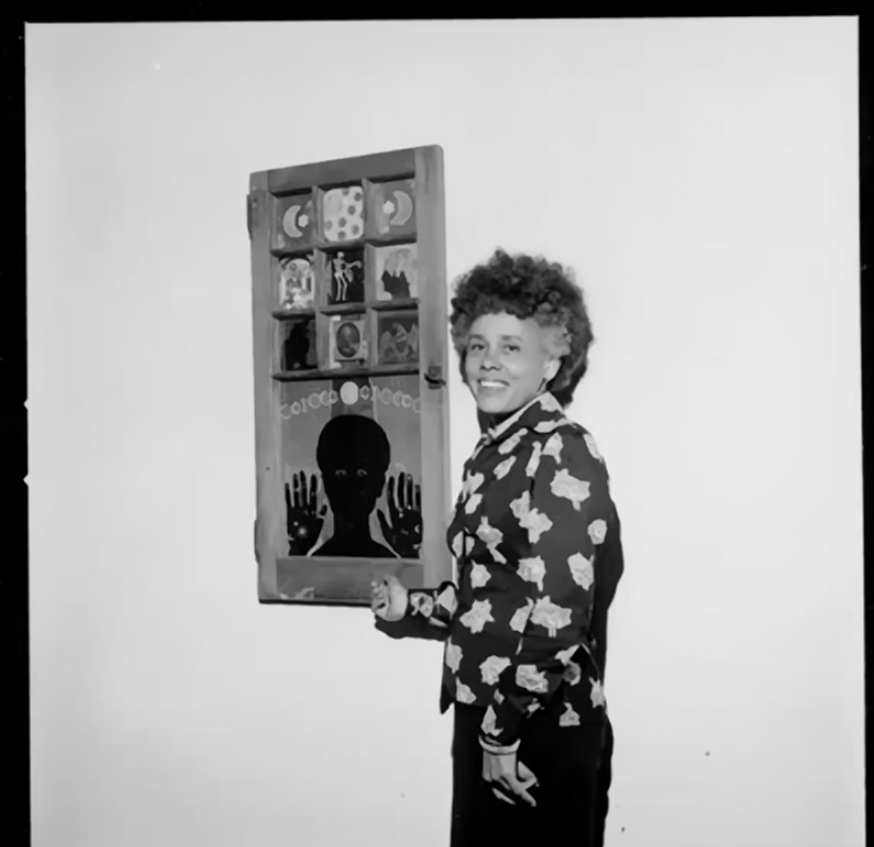
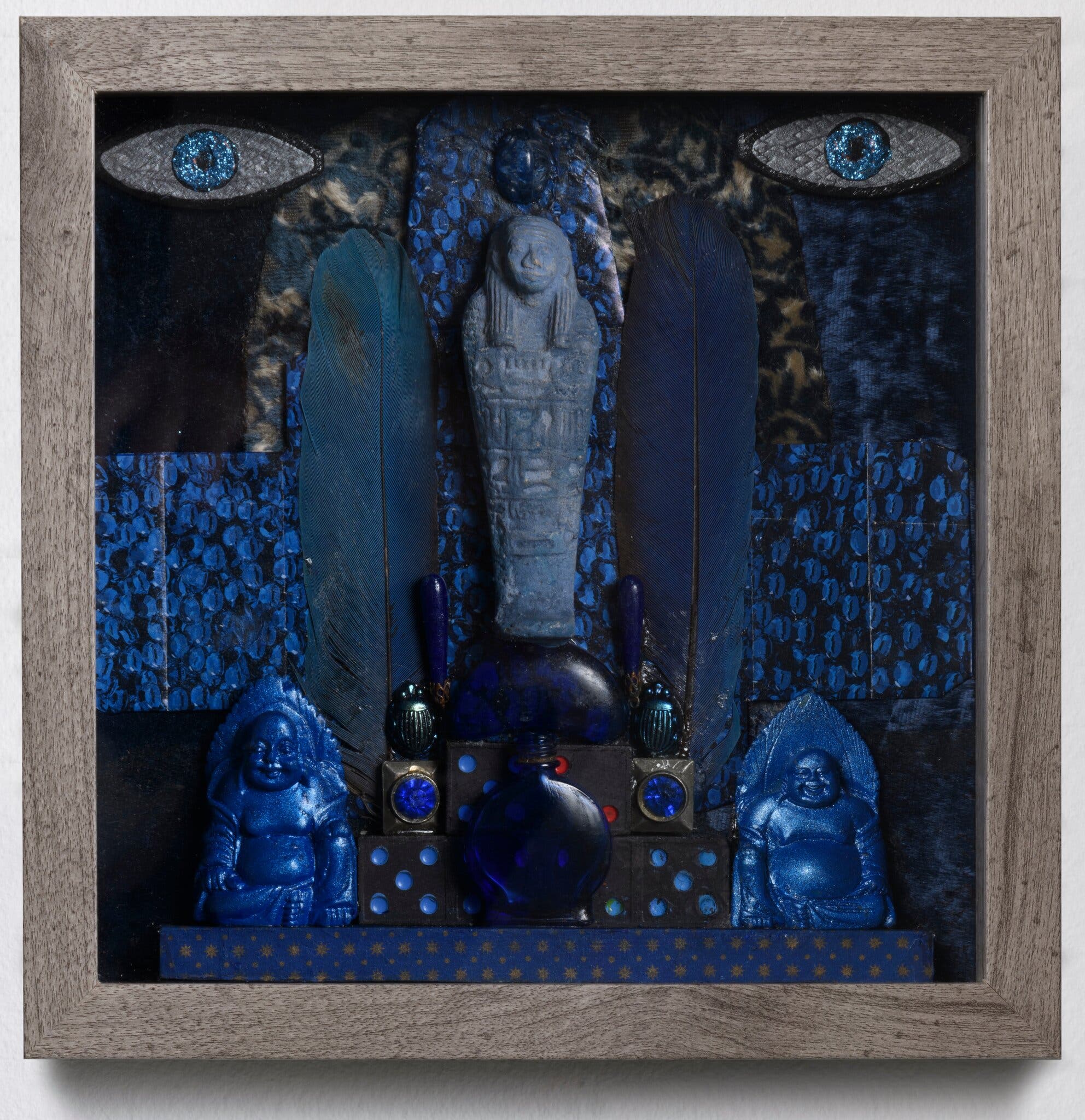
Betye Saar was born in 1926 in Los Angeles , California
- Where did they grow up? Saars spent her childhood in Los Angeles but moved to Pasadena , California after her father died.
- Where do they live now . She still lives and works in Laurel Canyon, Los Angeles.
- Where did they study art? Saars grew up collecting brikabrak and regularly created and repaired objects. She began her education with the original path of teaching design but after taking a printmaking elective her artistic direction changed. She described printmaking as her “segue from design into fine arts.””The Ordinary Becomes Mystical: A Conversation with Betye Saar”. The Getty Iris. 2012-01-04. Retrieved 2018-02-17. She attended Art classes at Pasadena City College before moving to the University of California, Los Angeles.She received a BA in design in 1947 and went on to graduate studies at California State University , Long beach, University of Southern California, California State University, Northridge, and American Film Institute.
- What kind of art do they make? Saars is an assemblage Artist and proficient print maker. She makes prints, collages and assemblage sculptures . She uses found objects- often of a political, gender specific and racial stereotype that are found embedded in American consumer culture. She uses marketing material, knickknacks, toys and advertisements that display these racial stereotypes . She explores ritual through African- American folk items and spiritual and religious found objects. Using family memorabilia she creates her own “memento Mori “ and explores her personal life and her own cultural connections and background.
- Looking at the selected assemblage artwork:
- What are the formal aspects of her work (size, colour, materials, texture, value, composition, genre, style, etc)? This is a mixed media piece. it is 10×10 inches . It is made up of various religious symbols – all blue. It is framed within a plain wooden frame. Central to the piece is a sarcophagus made of clay or stone . There is two blue feathers either side of it. Beneath it are two scarabs flanking a blue perfume bottle. In each top corner there is a pair of all seeing eyes made of painted wood . The background is made of collages pieces . It appears to be of a religious homage and was made in 2020.
- How do these formal aspects affect how you “read” the artwork? Seeing the blue religious pieces remind me a lot of my Catholic upbringing as blue is a dominant colour associated with it.
- What materials and methods might she be using to make these works? She uses found objects and has in her studio many objects separated into colour. She likes to work with themes of spirituality and religion , from all cultures and walks of life. What is the context for this work (when this work was produced, what is going on politically, theoretically/philosophically, in the art world, in their personal life)? Betye wanted to make a piece that represents mystical and spiritual objects in an altar type form in blue. She wanted to incorporate objects from many of the religions around the world.
- What emotions does the work elicit for you? The piece really draws me in visually as it has so much depth and darkness . The richness of the blue really pulls you in . It definitely has a Spiritual element but the eyes are quite unnerving
- What ideas does the work cultivate, or questions does the work ask you to consider? The power of colours and their innate connection with spirituality and religion. I immediately thought of Catholic imagery because of the blue colour.
- What does the artist say about their own work?” I wanted to make an altar-like ritualistic work in multiple shades of blue that communicated a mystical and spiritual quality through the use of sacred objects from other cultures. “Legends in Blue” also incorporates elements from other ancient religions and societies, such as the scarabs and the mystic eye.”
- …… What other questions about this artist or their work do you have? Where does she put blue or red clocks lol , in their colour categories or in the clock category in her studio lol
- Is there anything about this artist’s work that interests you? I love how she represents the feminine and confronts the acceptable stereotypes . These mundane objects that were used for advertisements are now reclaimed and repurposed. How to sees new images and pieces – she names her pieces instead of titles.
- Is there anything about this artist’s work that you can carry over into your own art practice? What in particular? I was thinking of using certain pieces and rummage for them but I like her style of collecting and how she saves things and categorizes them. She said she uses a 4 part process – 1. Hunting and gathering the objects, 2- sorting the objects- combining them and their individual stories to open up dialogue and other narratives, 3- transformation and fabrication, and lastly displaying of the work to complete and open a new narrative written by those who experience the work . I really like this understanding and process as it helps me separate the pieces and see them individual to me. It’s up to me to find them and their story and to put them together to form a new narrative.
- Include the links to the websites you attained your research from.
https://en.wikipedia.org/wiki/Betye_Saar
https://www.nytimes.com/2020/09/11/t-magazine/betye-saar
Brainstorming sessions Creative Prompt 1
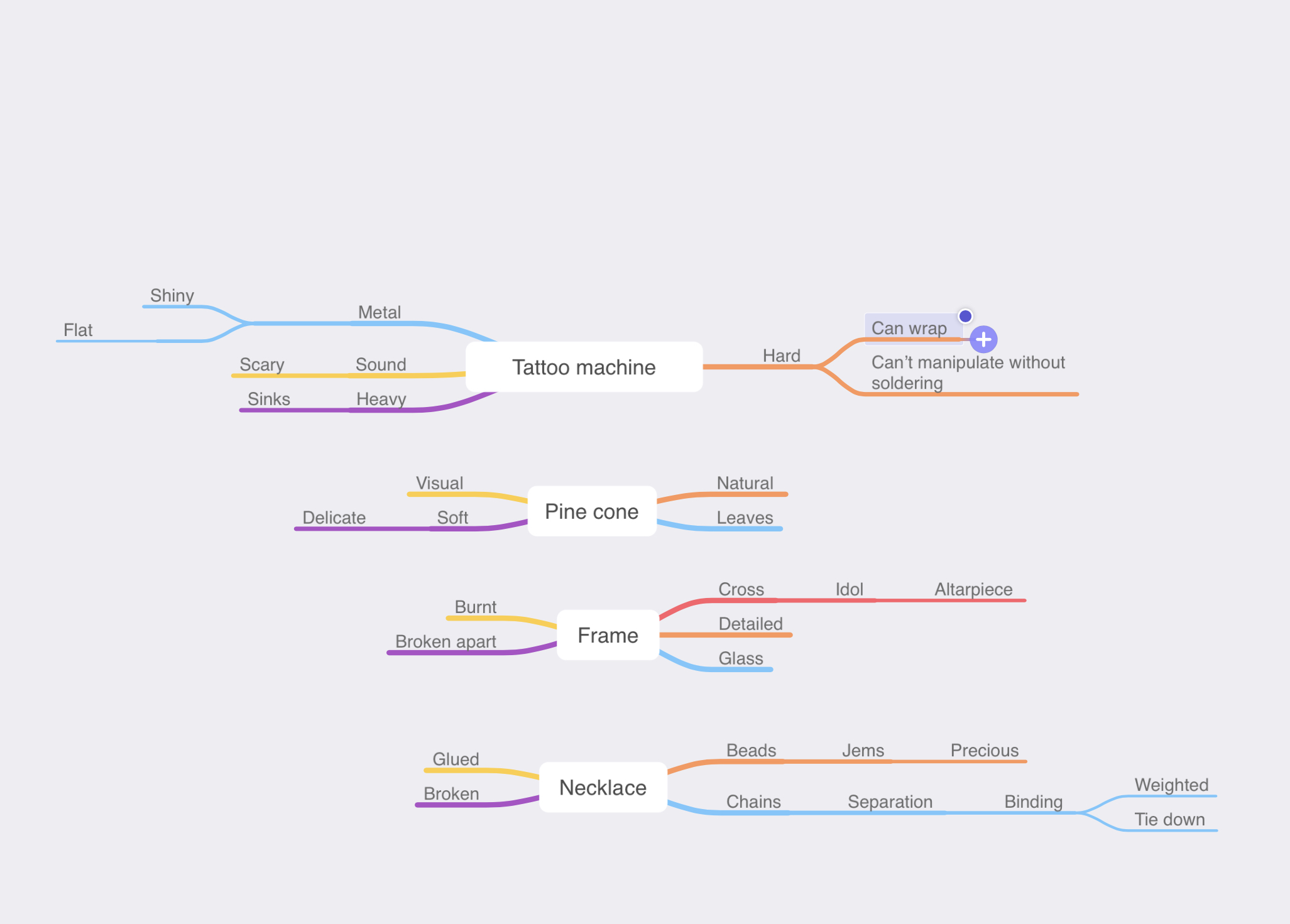
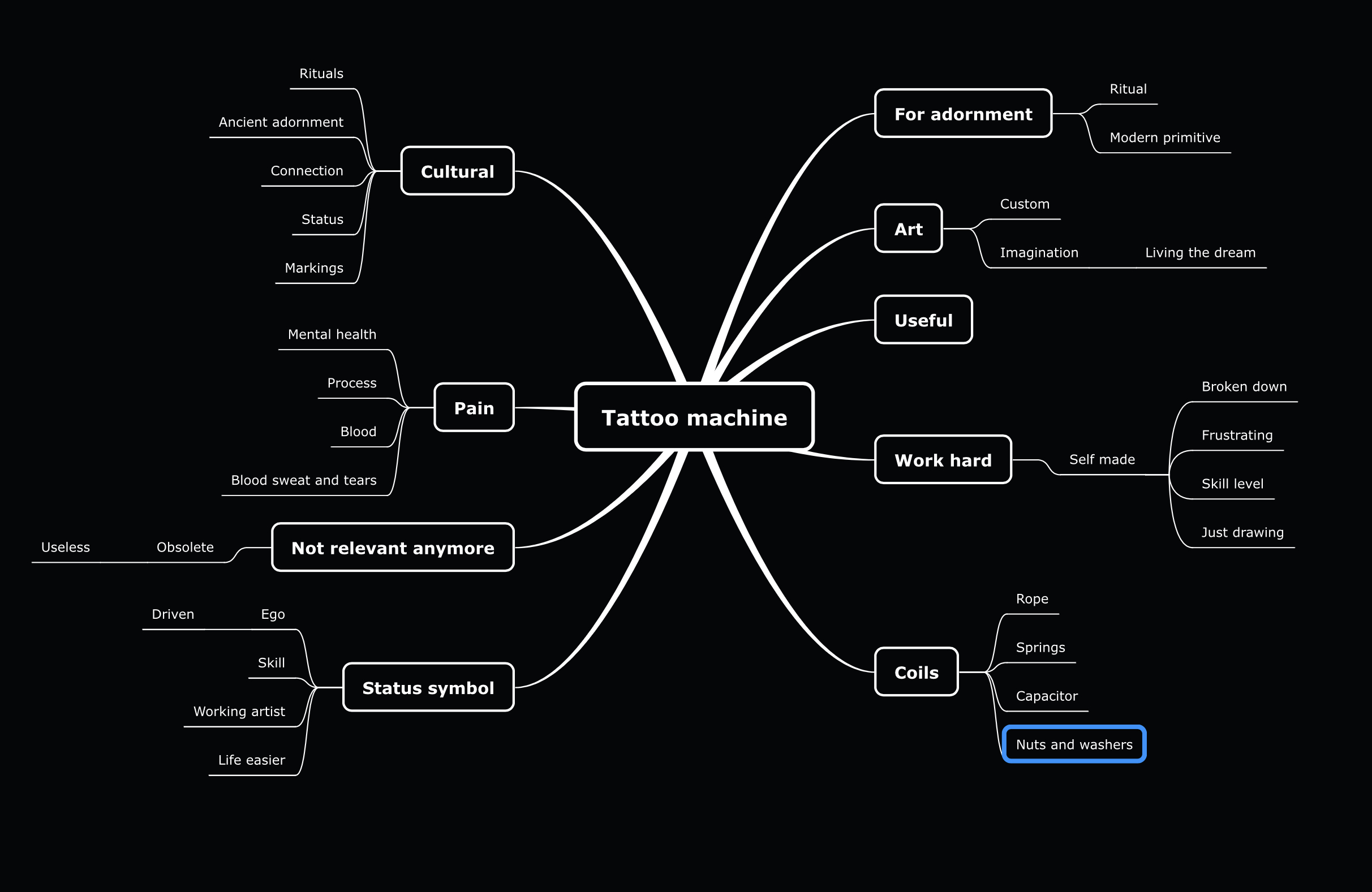
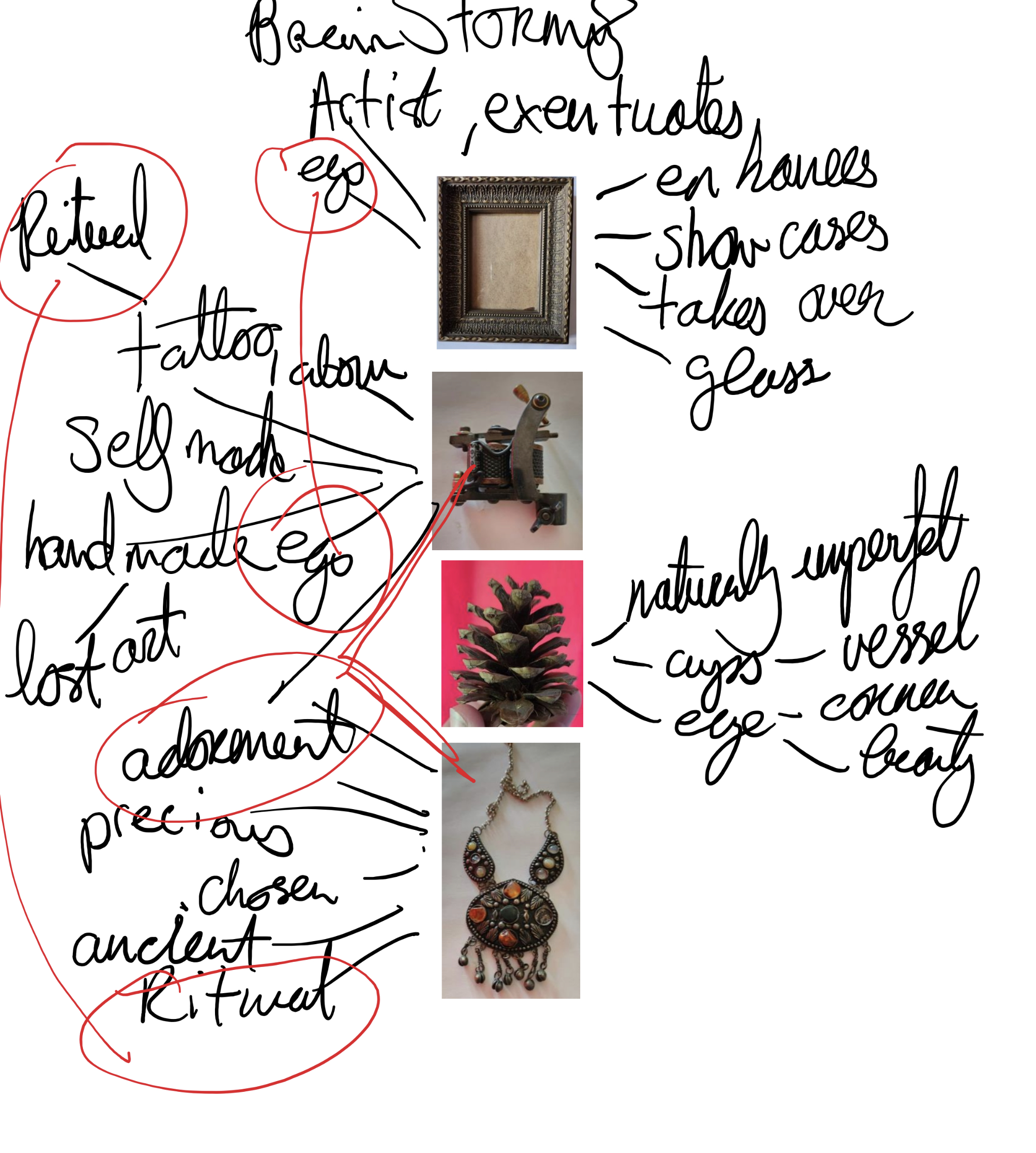
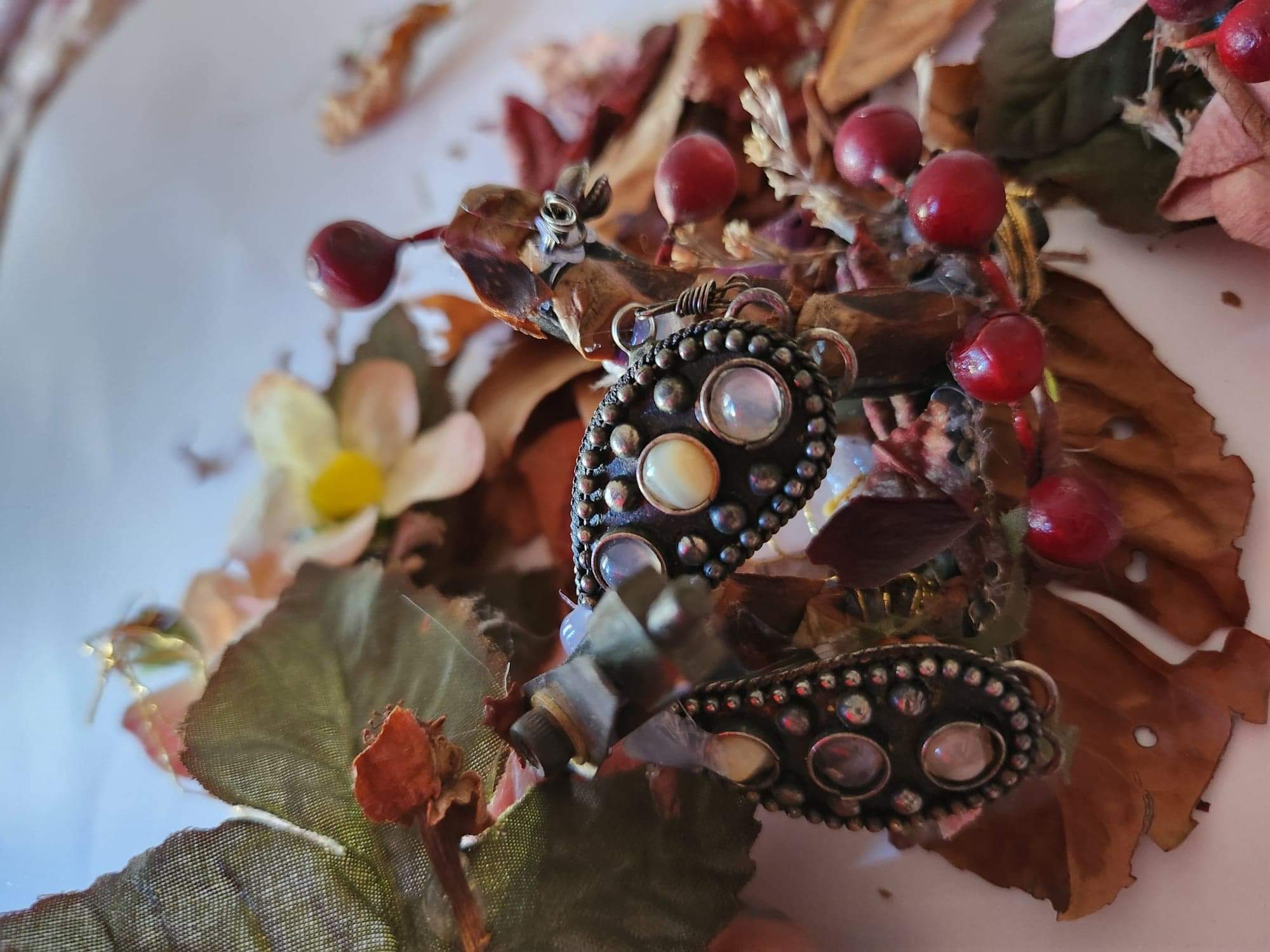
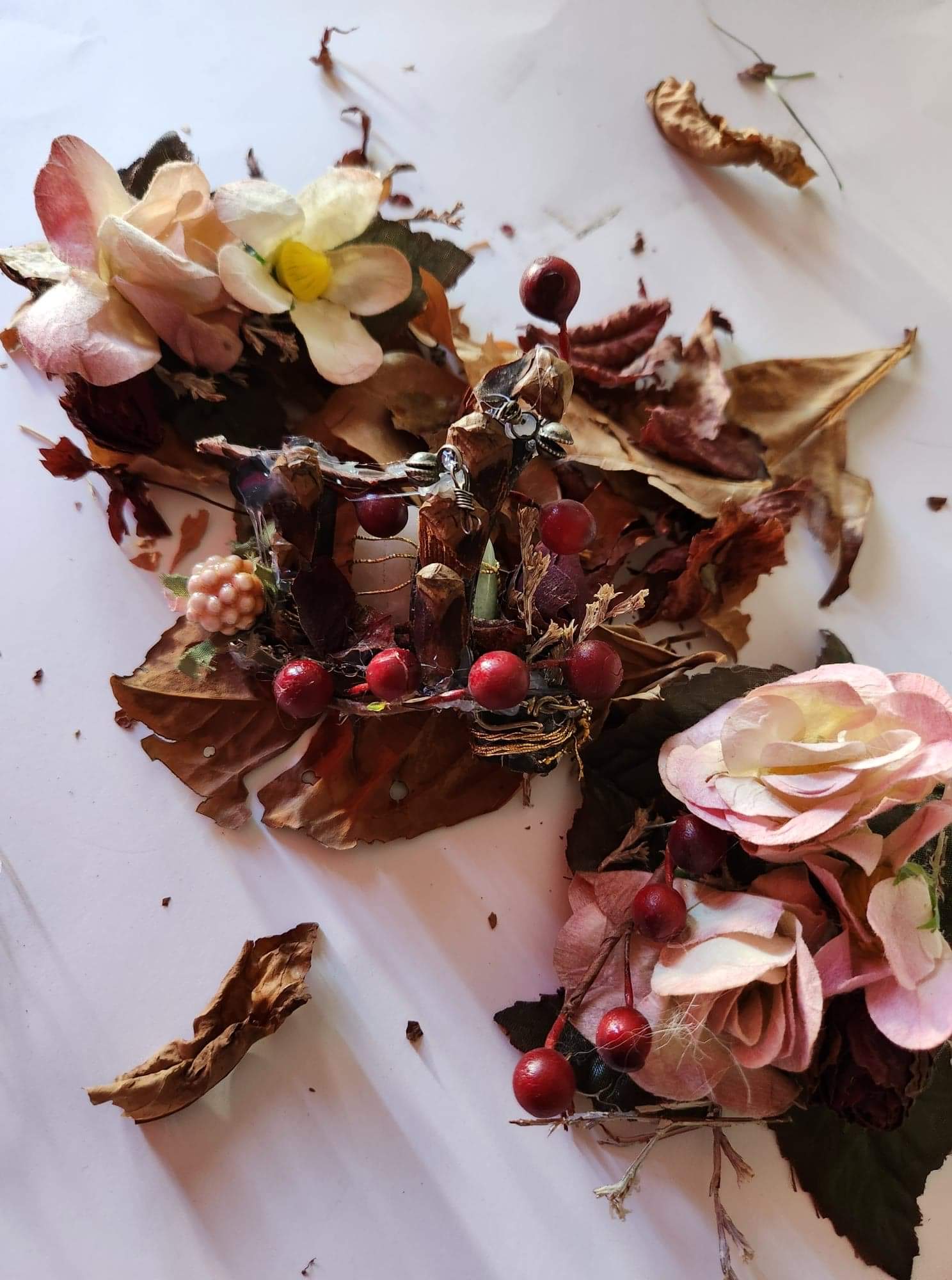
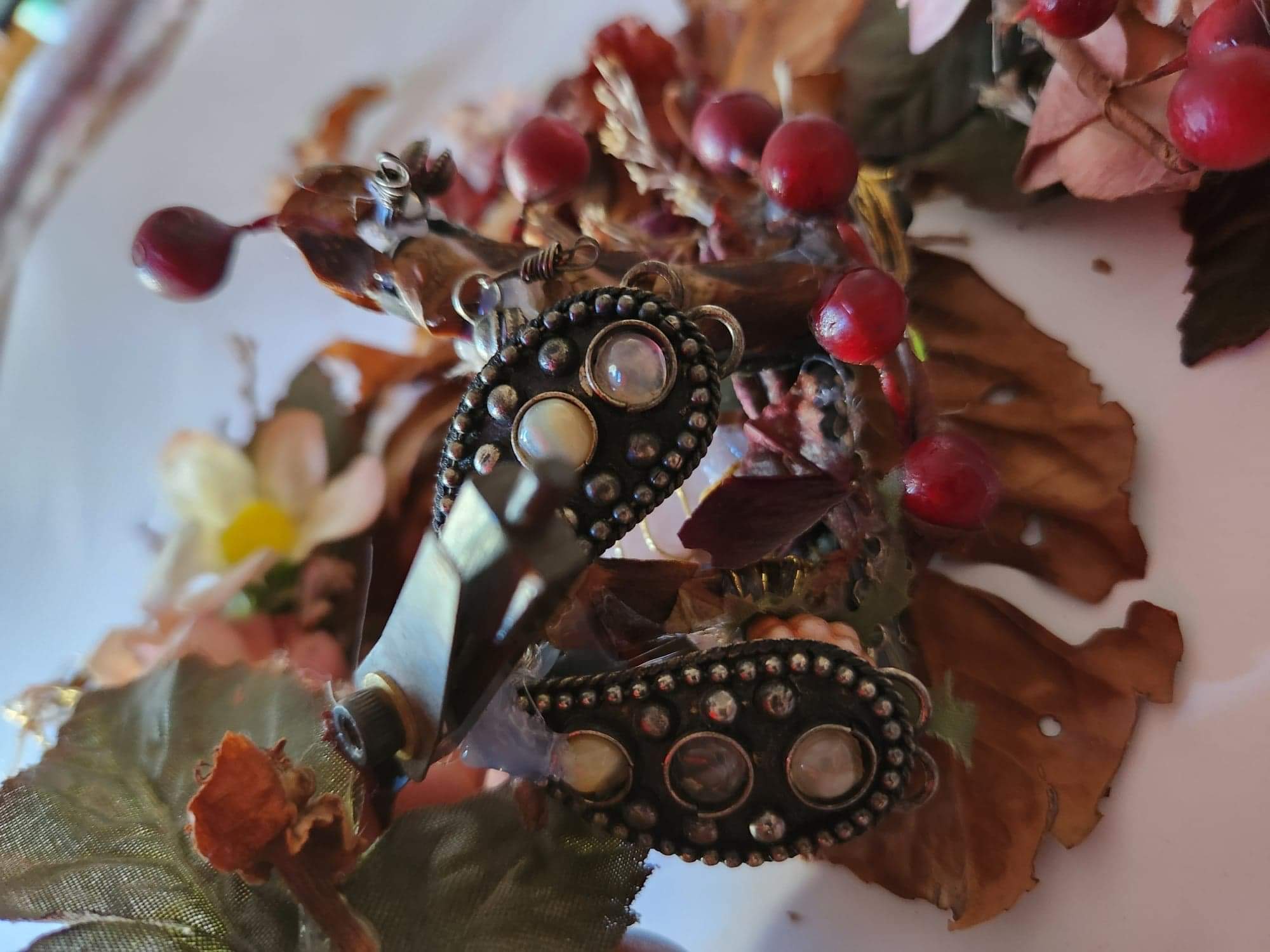
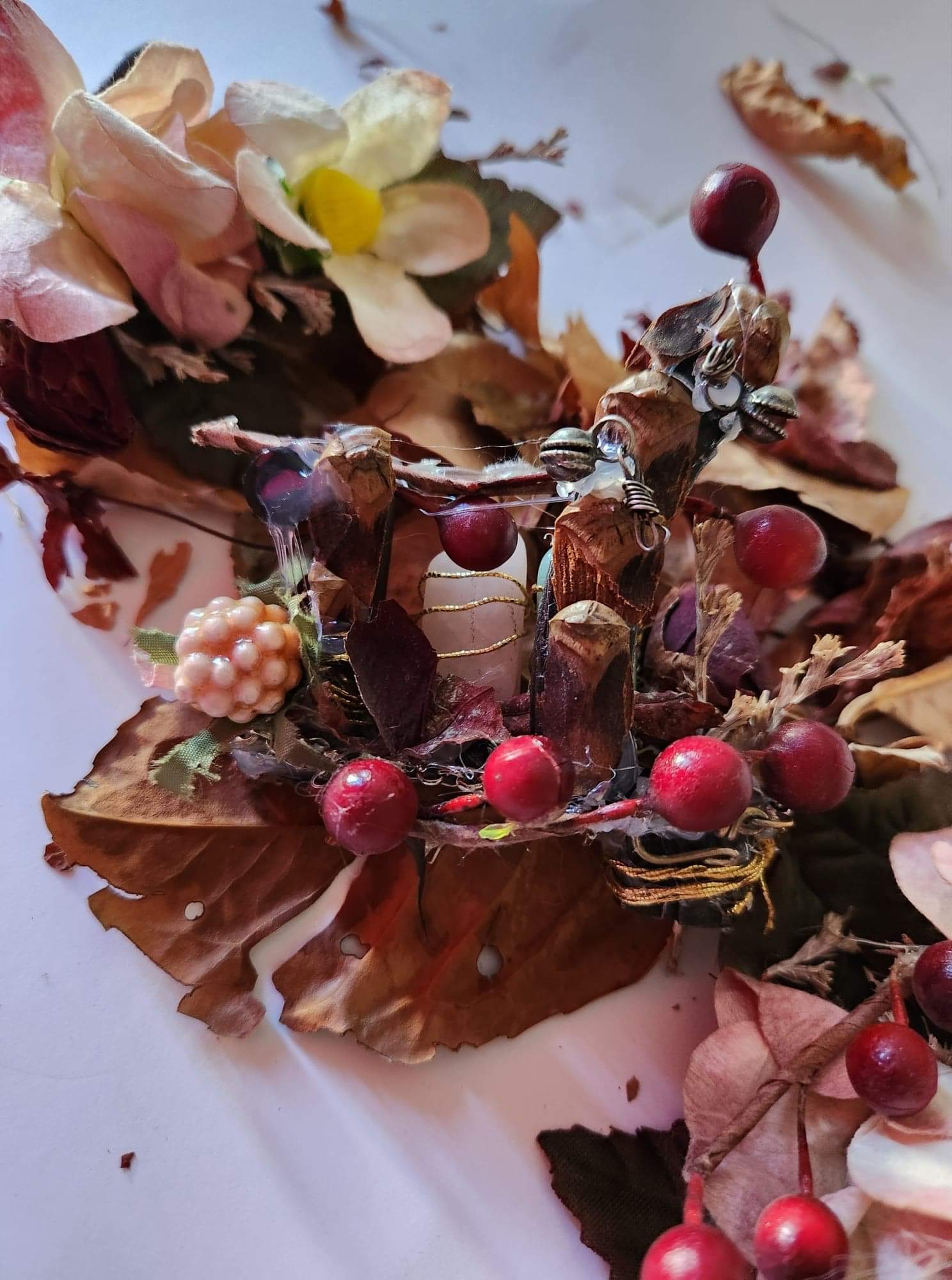
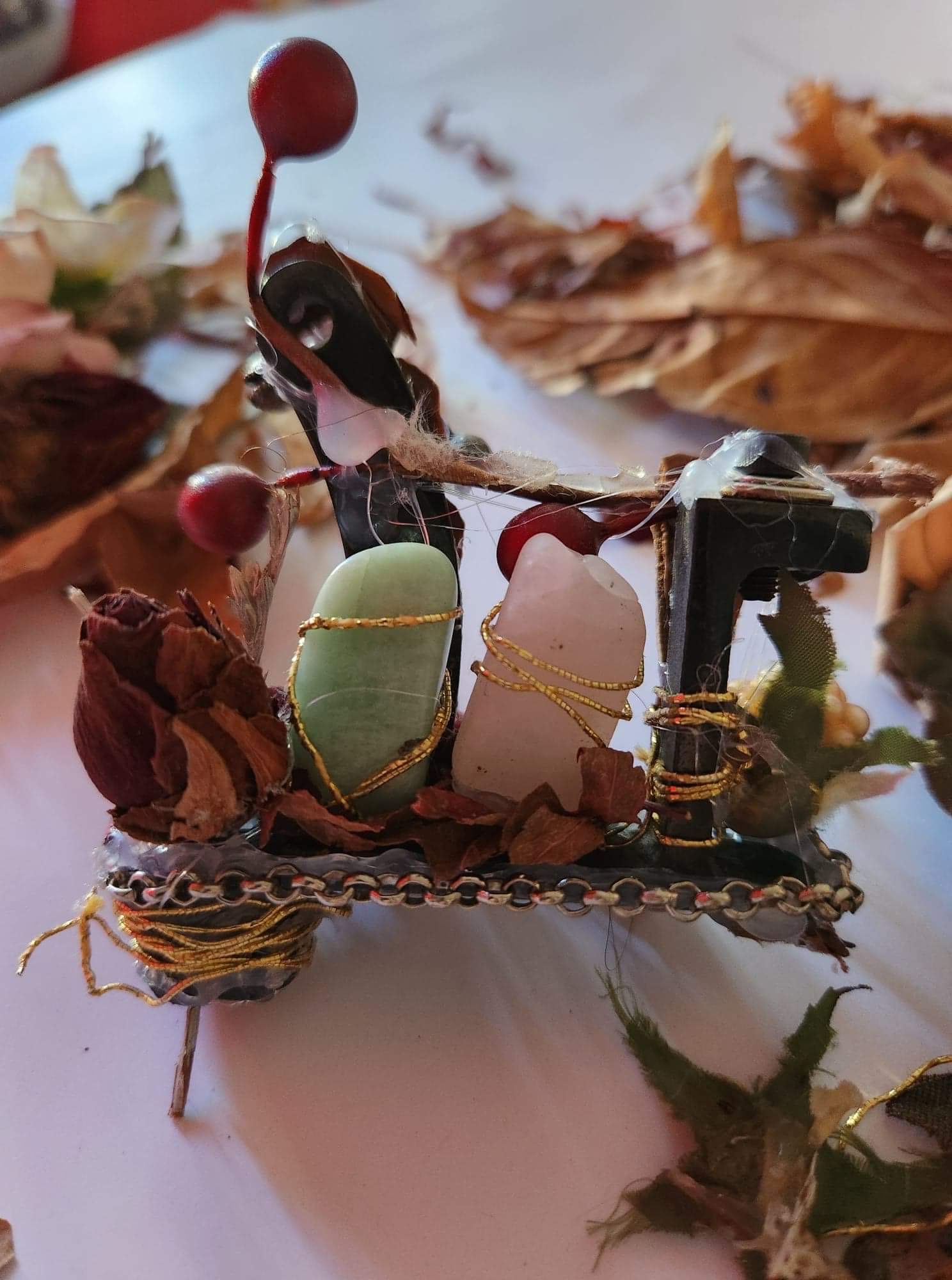
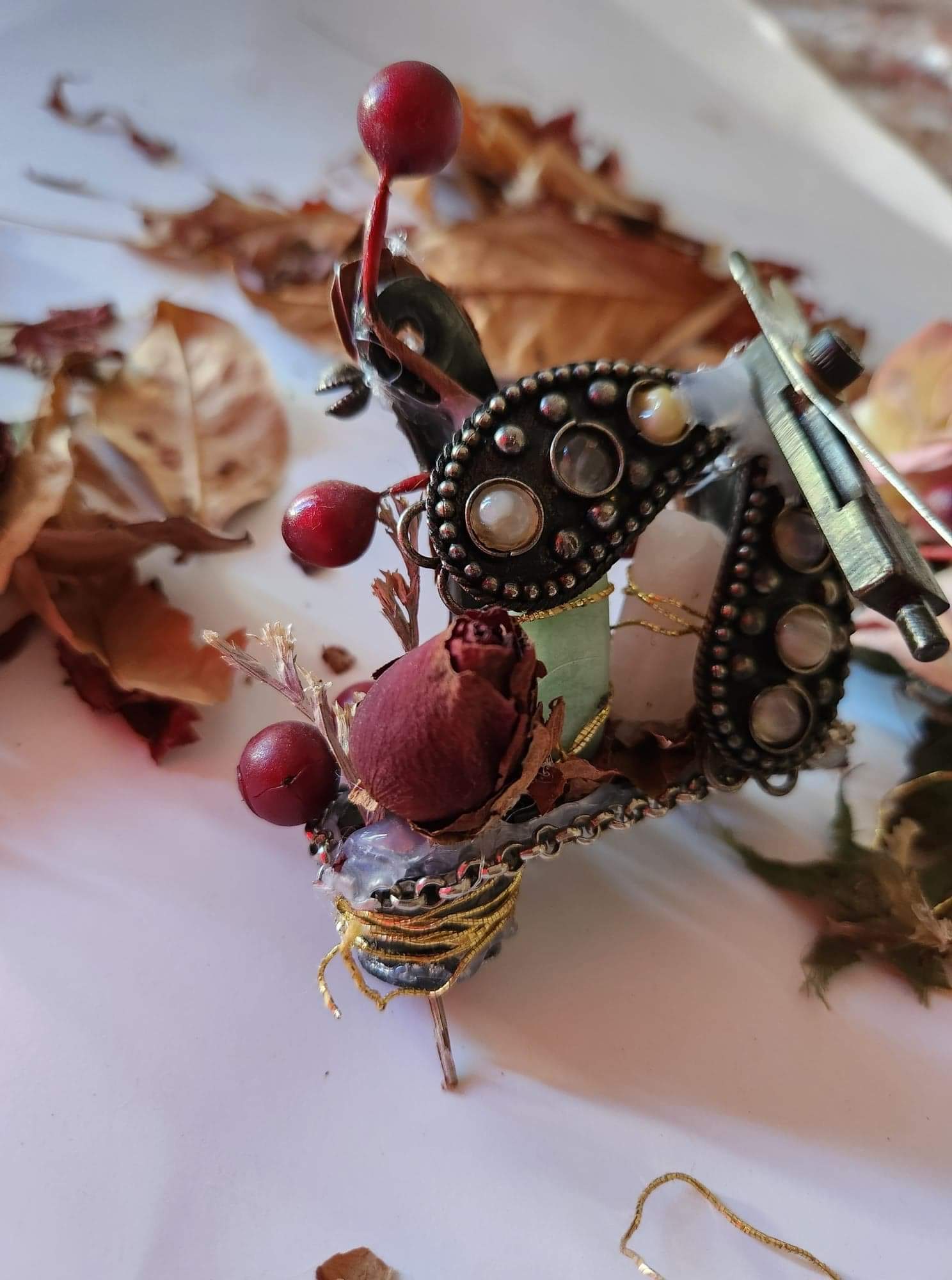
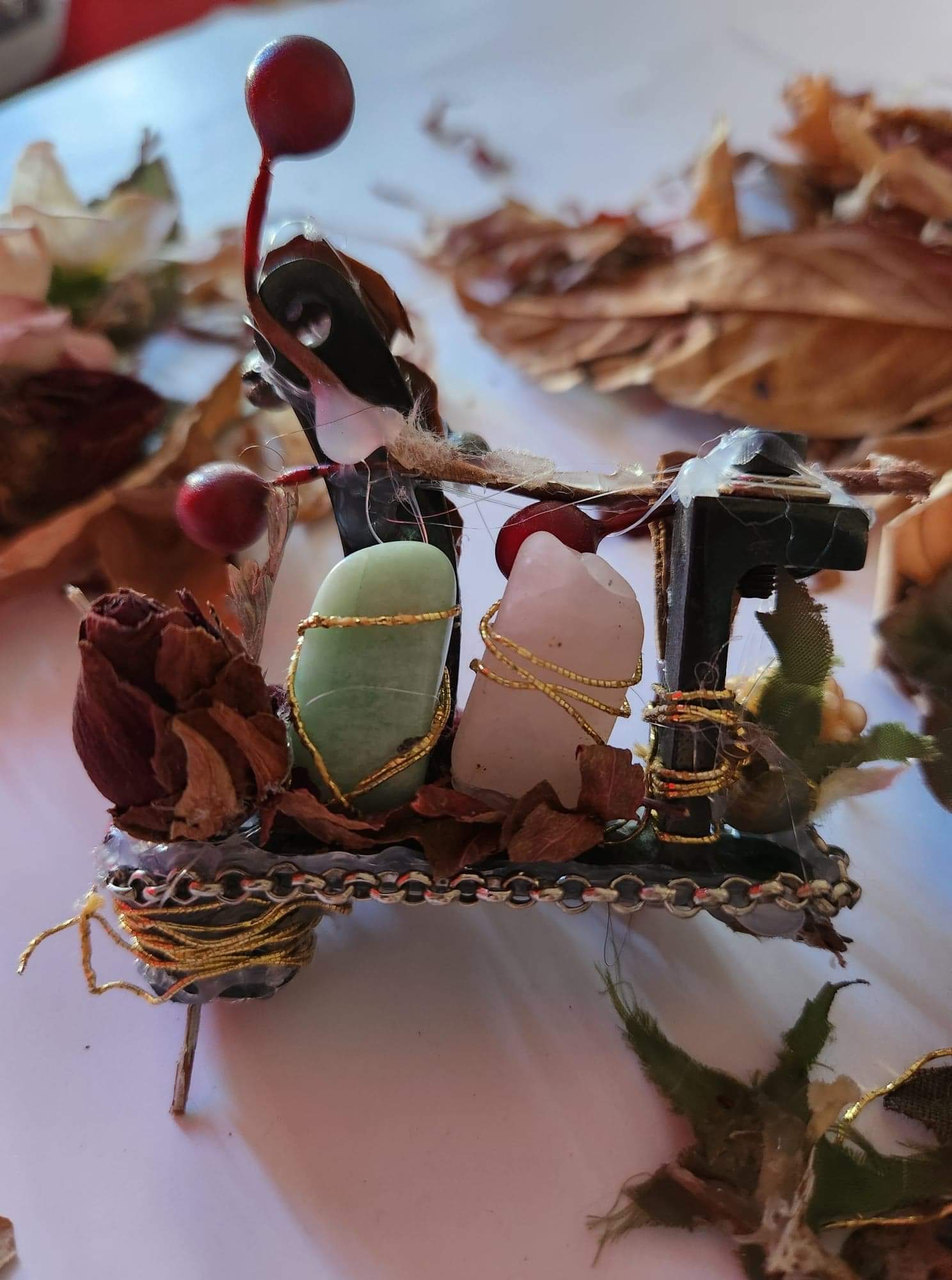
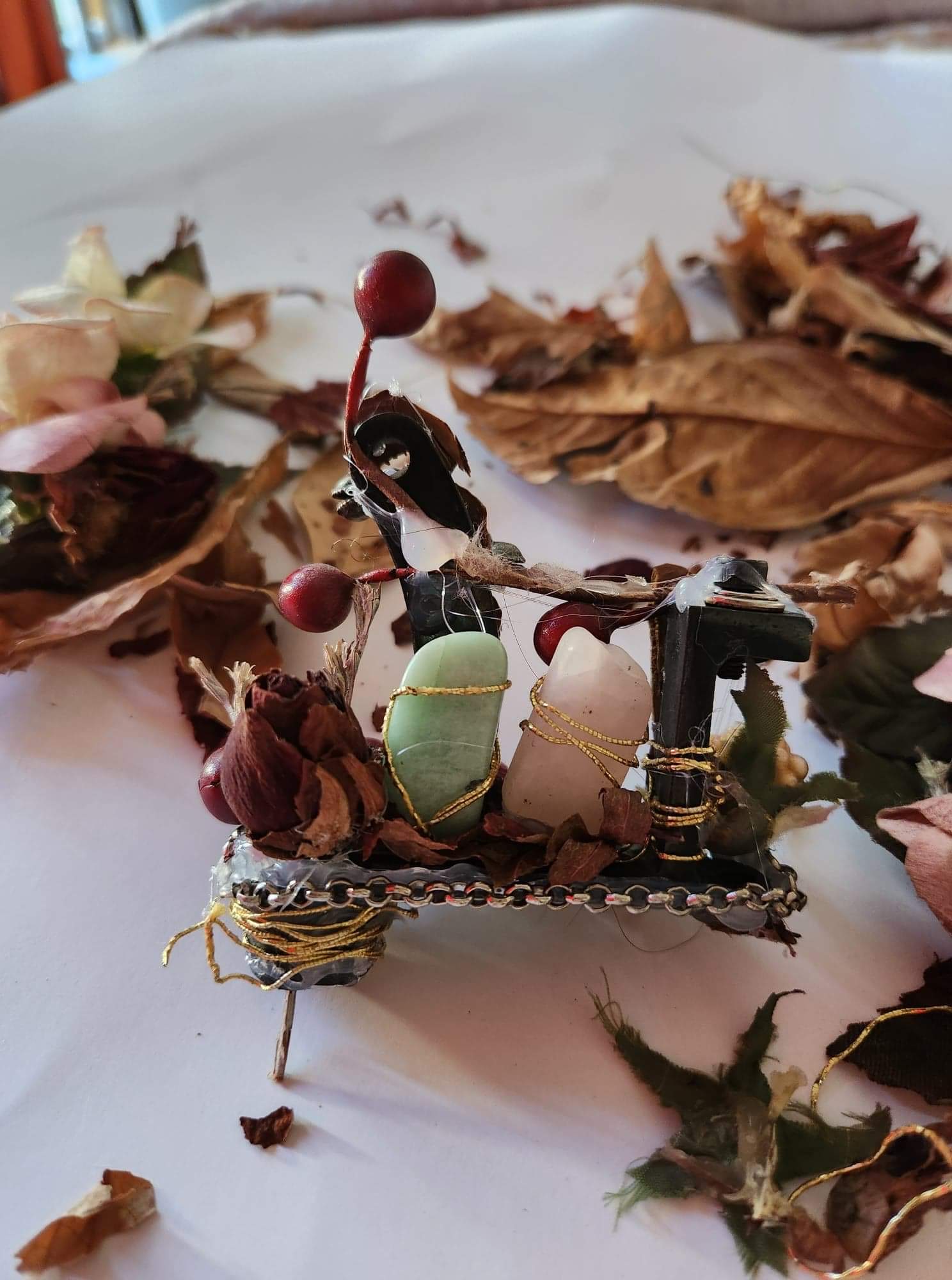
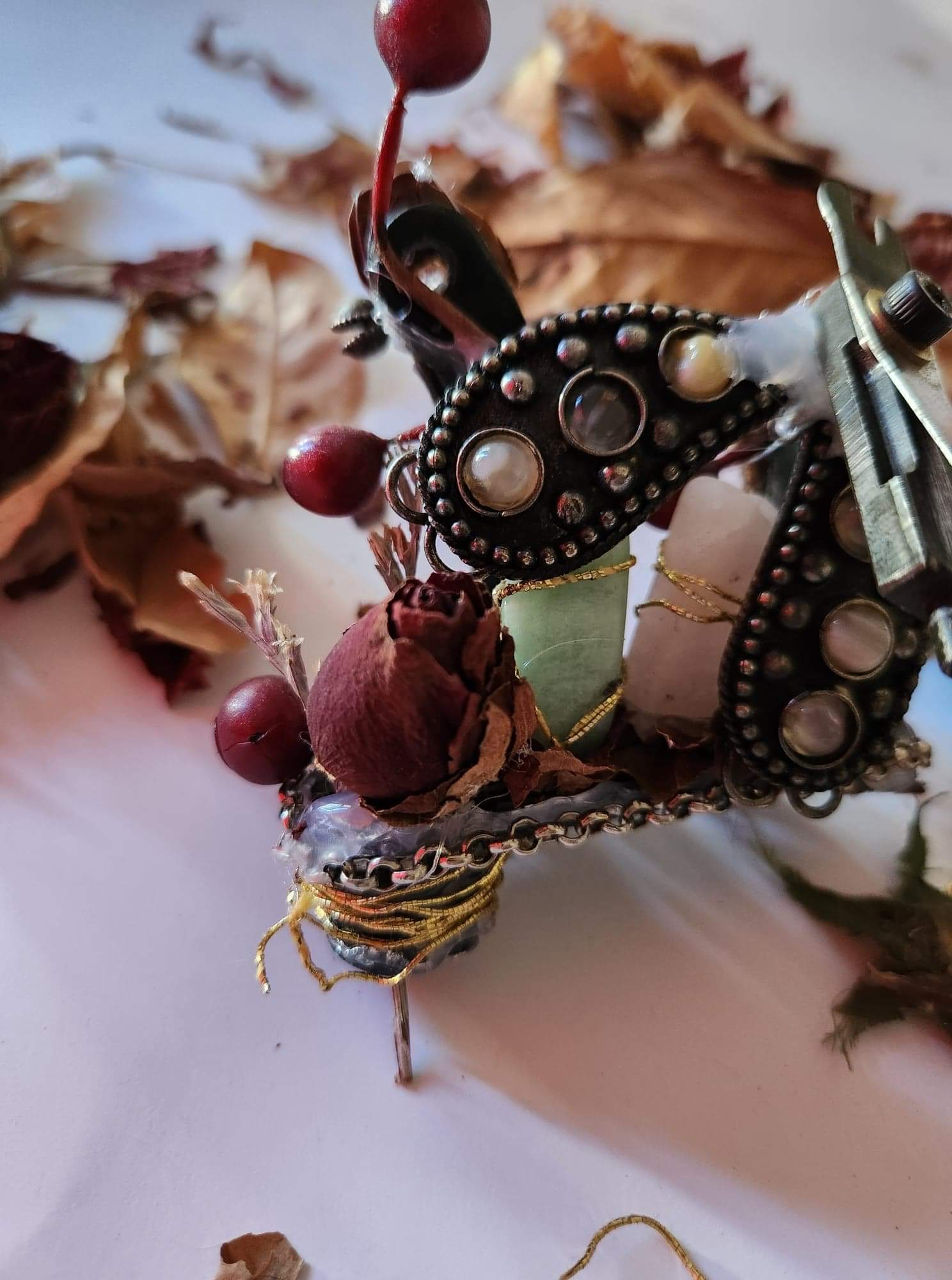
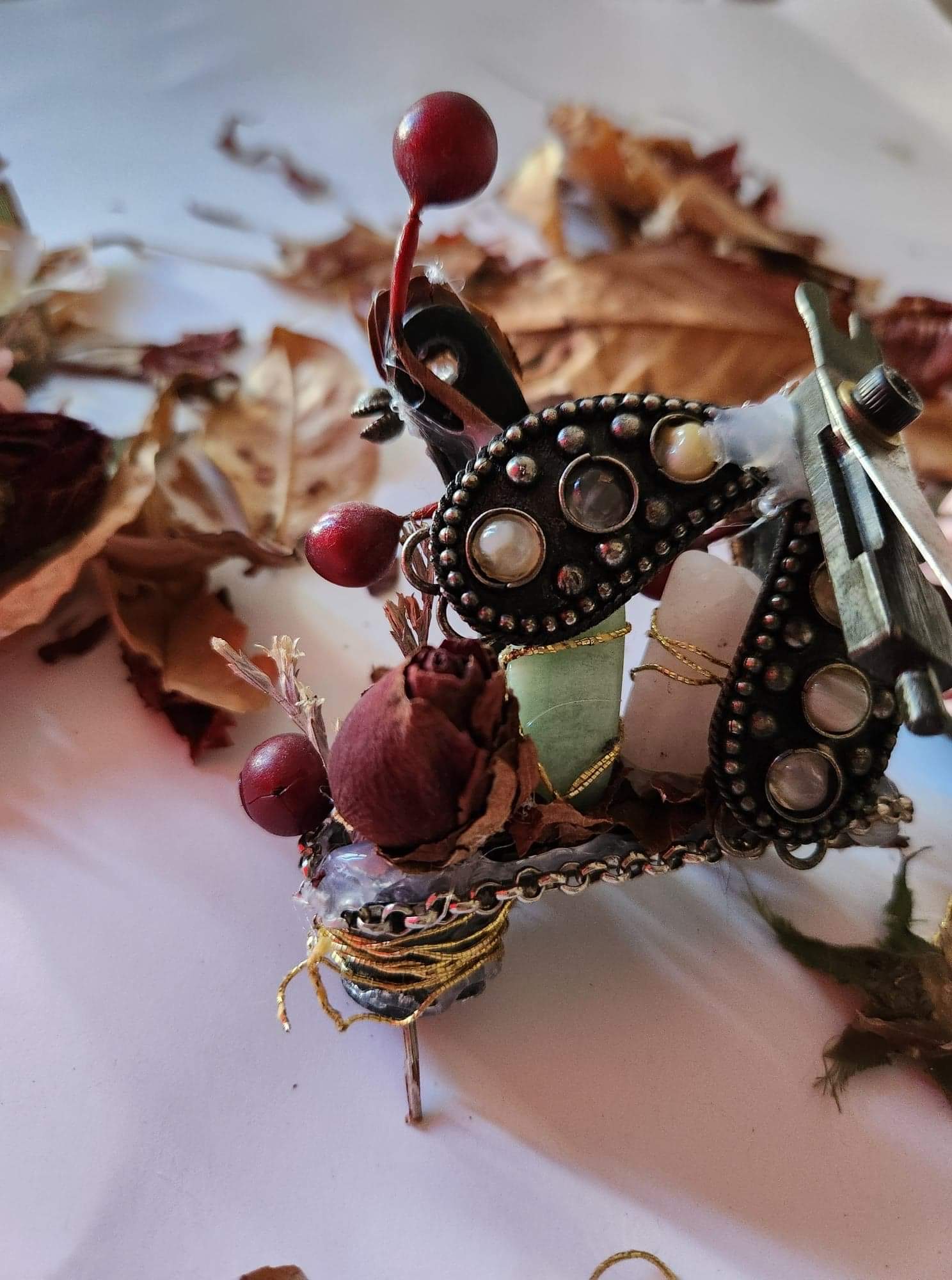
Brainstorming session for Assemblage project
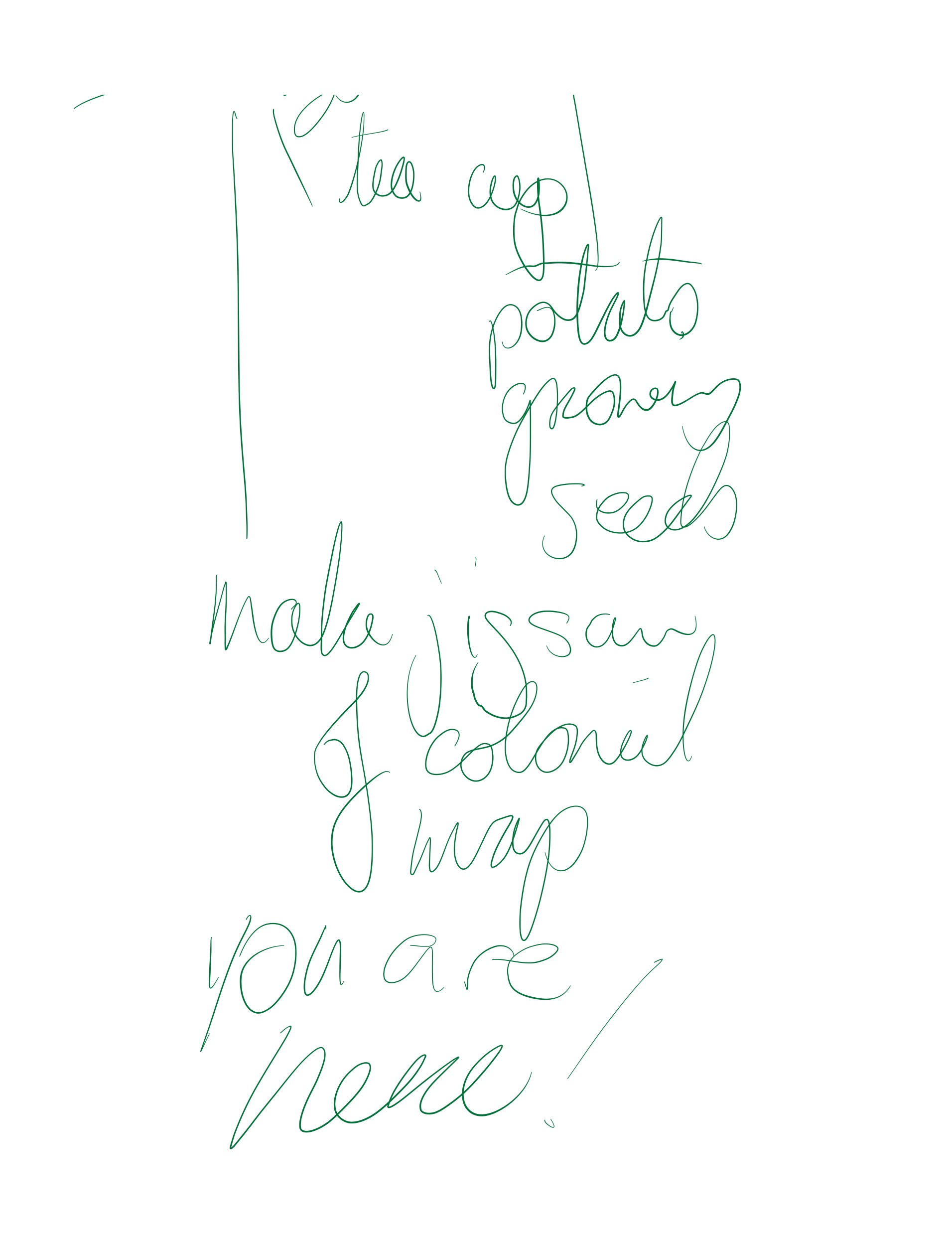
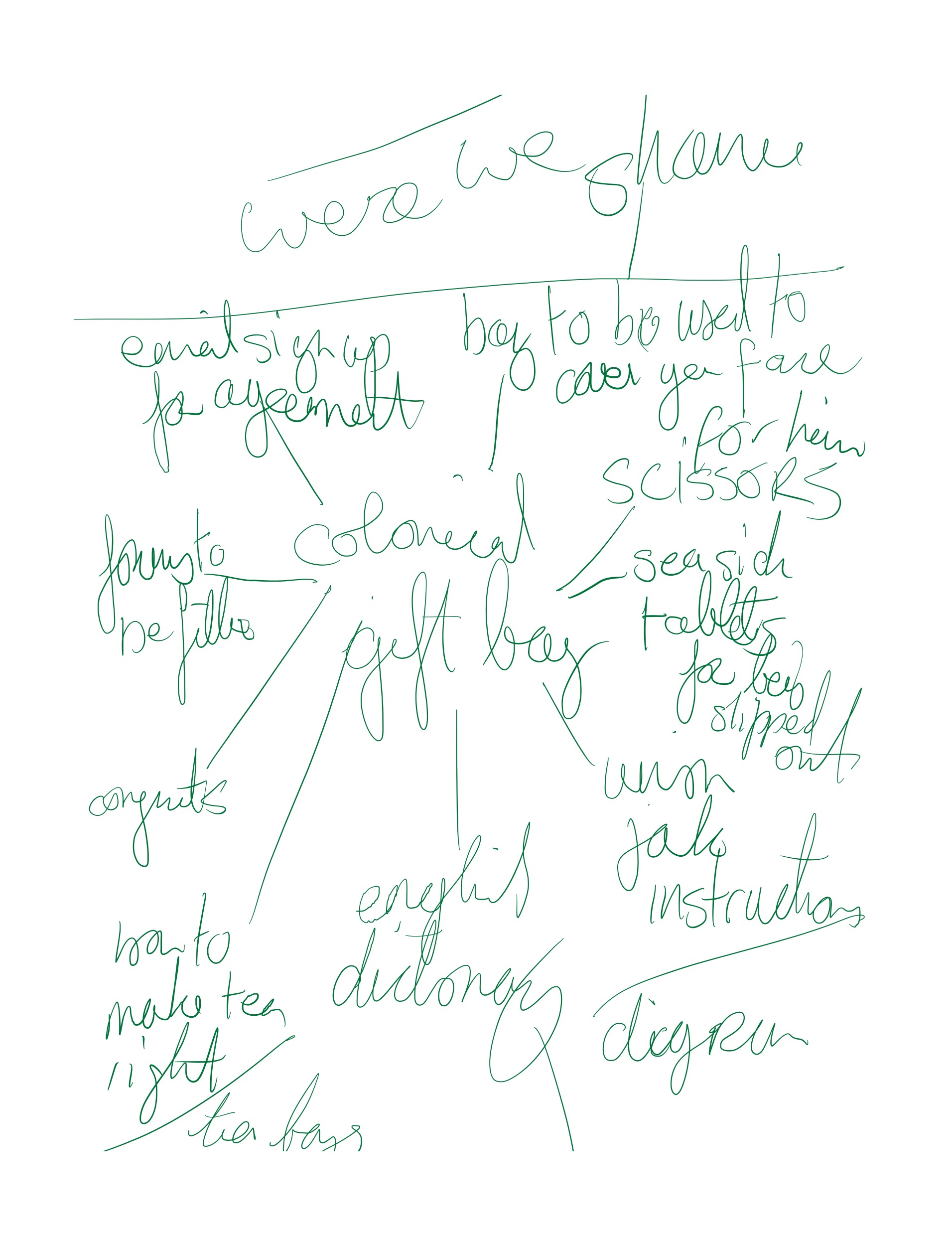
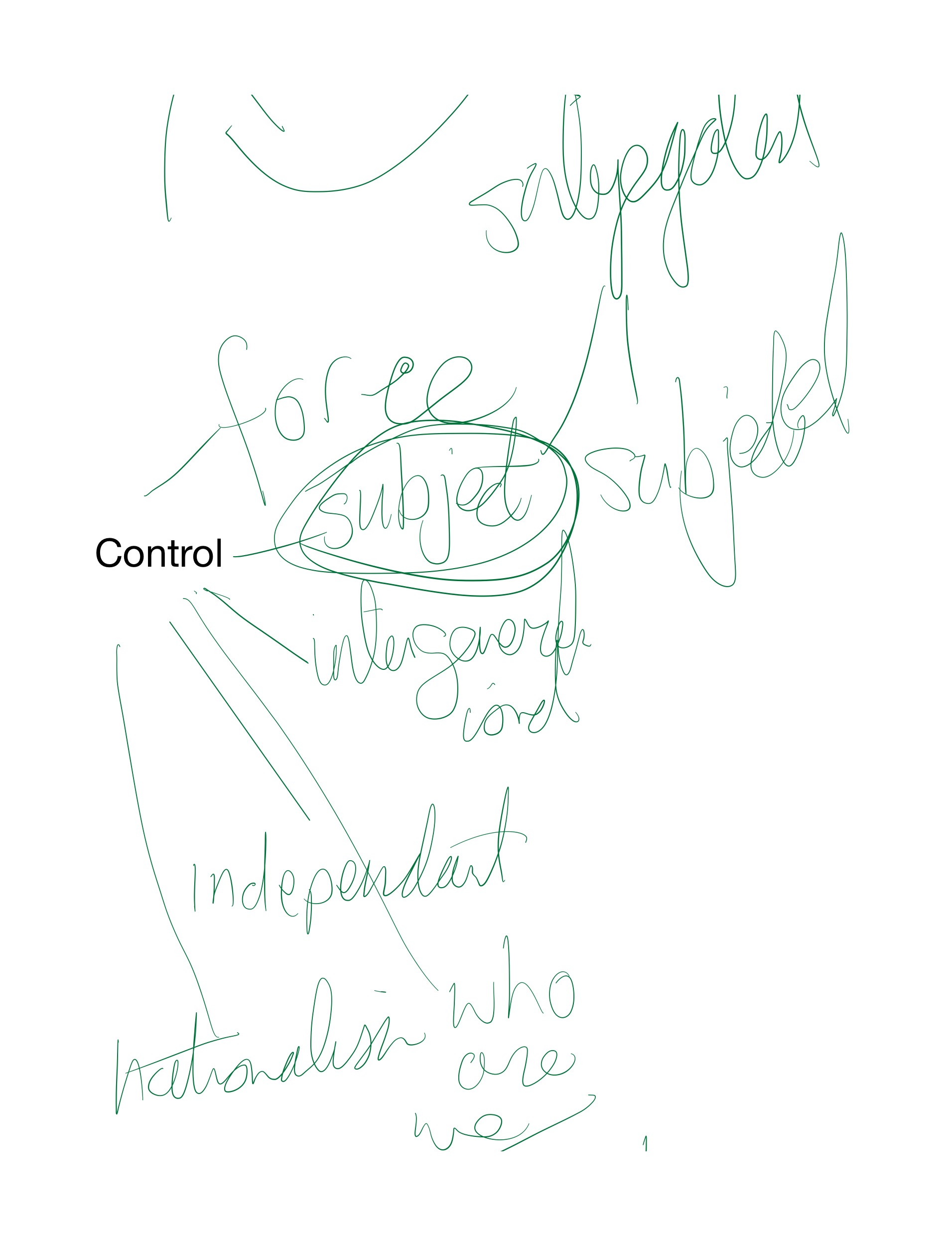
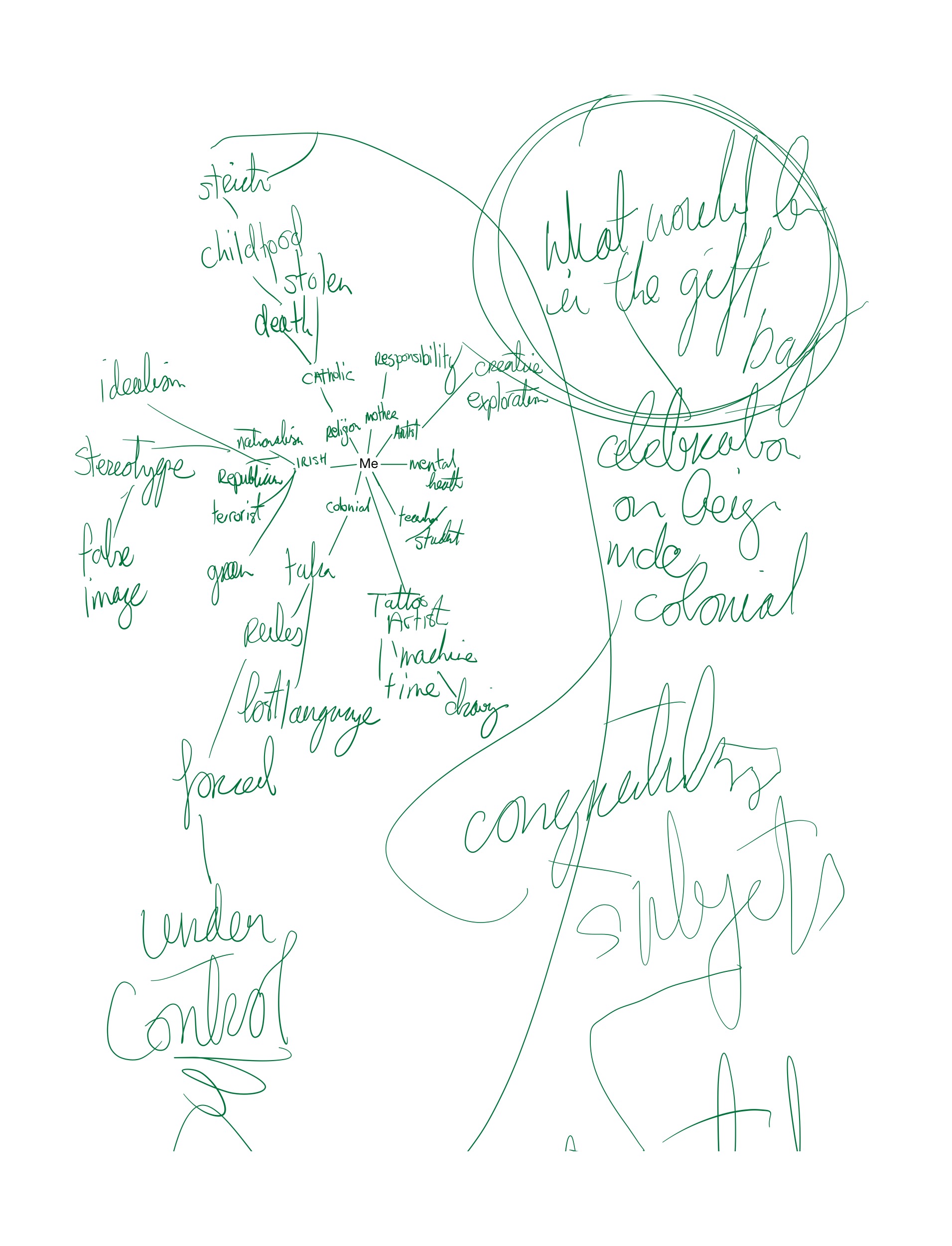
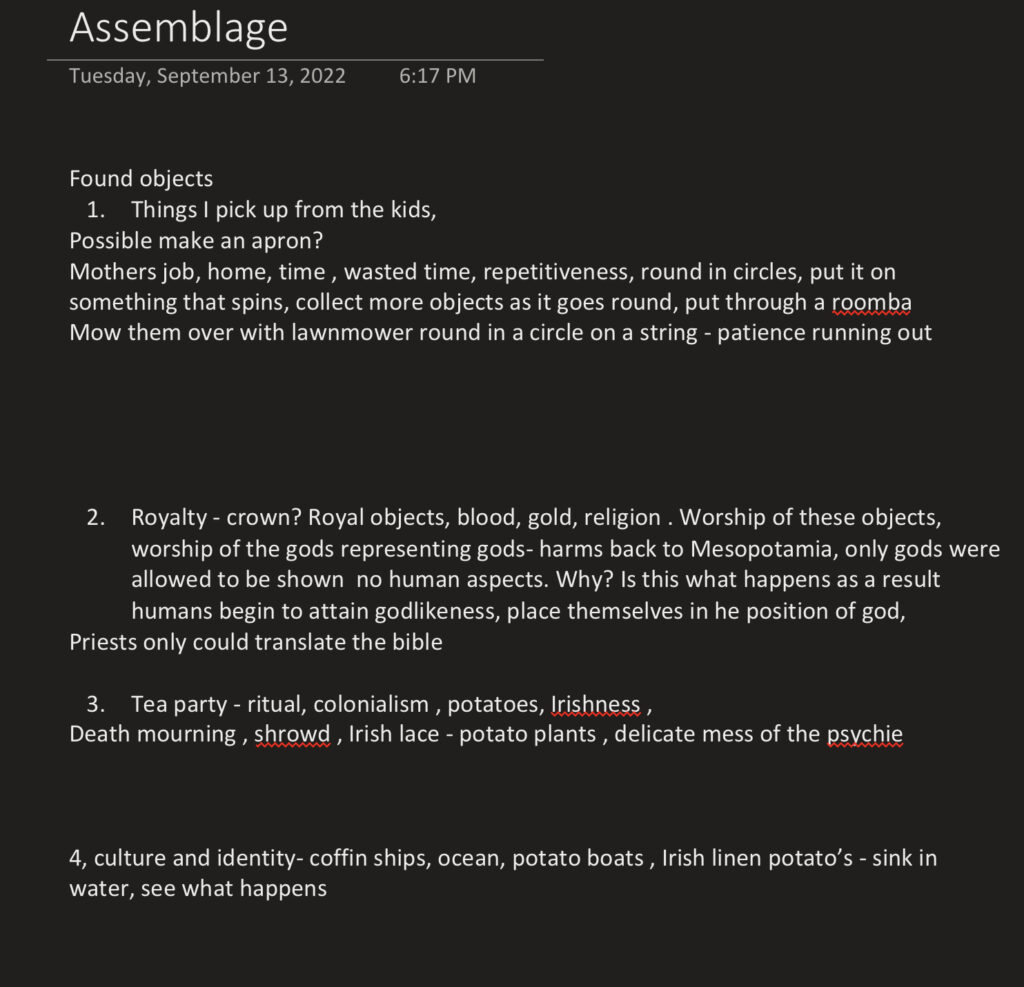
Project 1
Brainstorming session
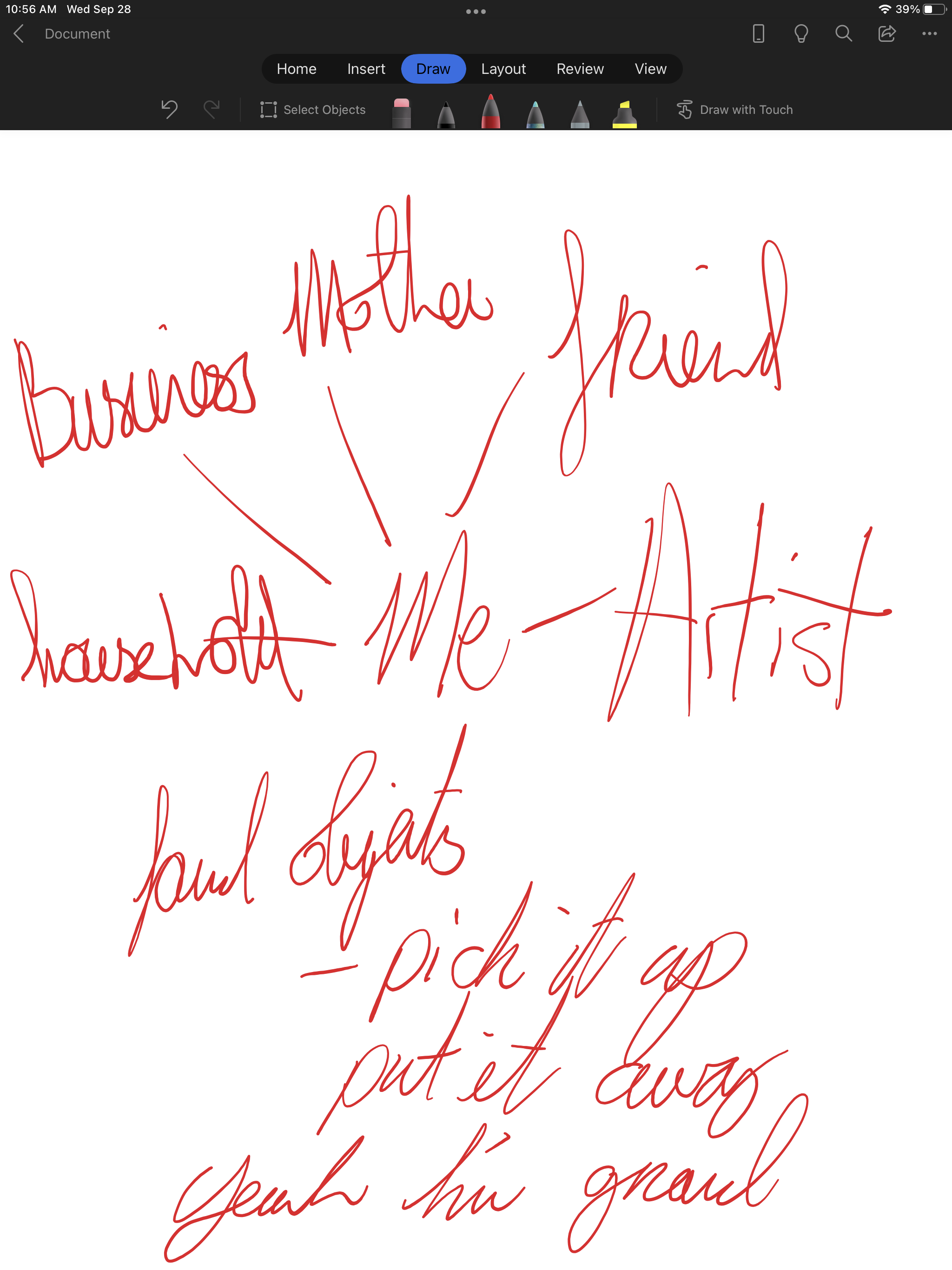
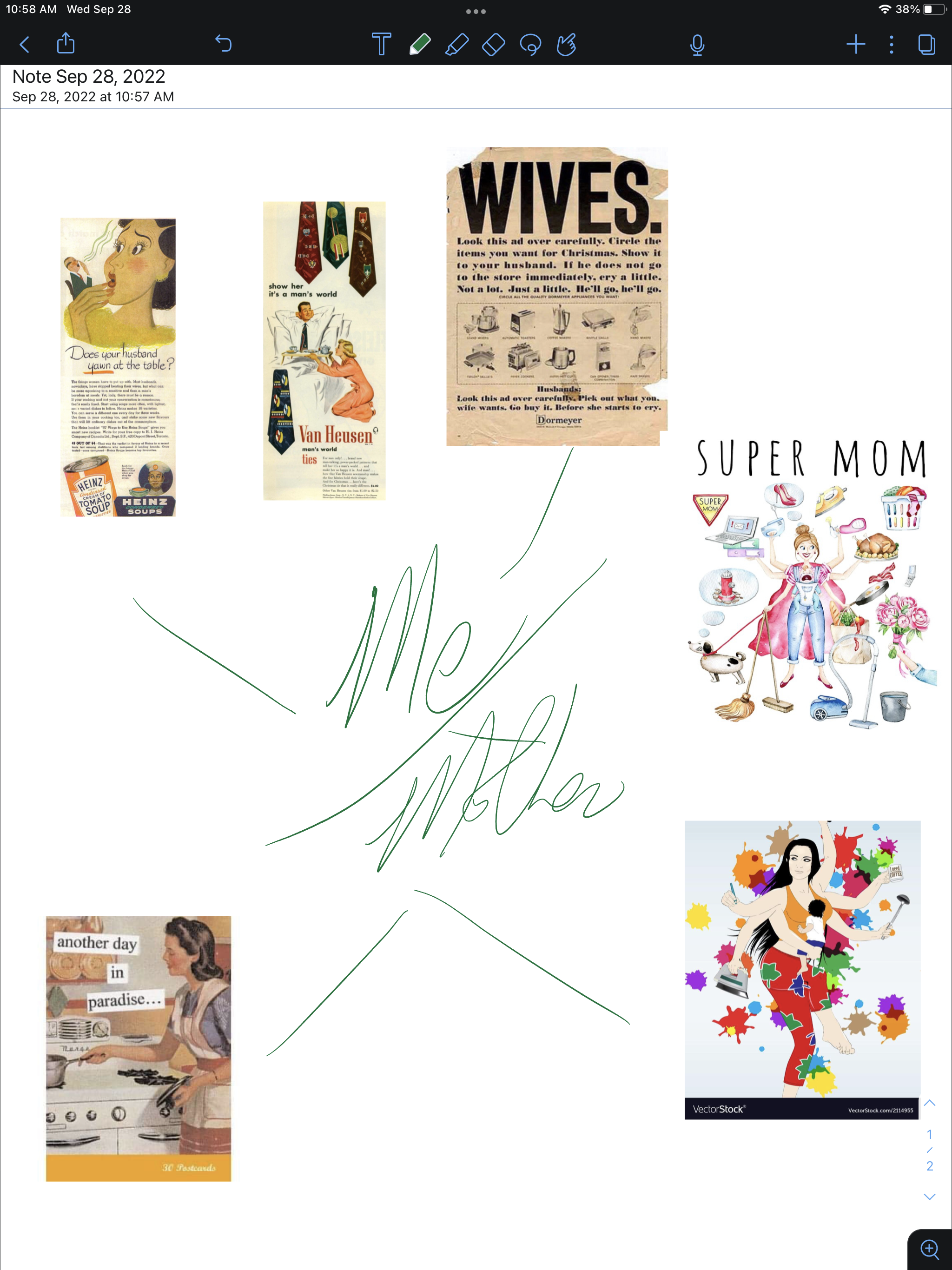
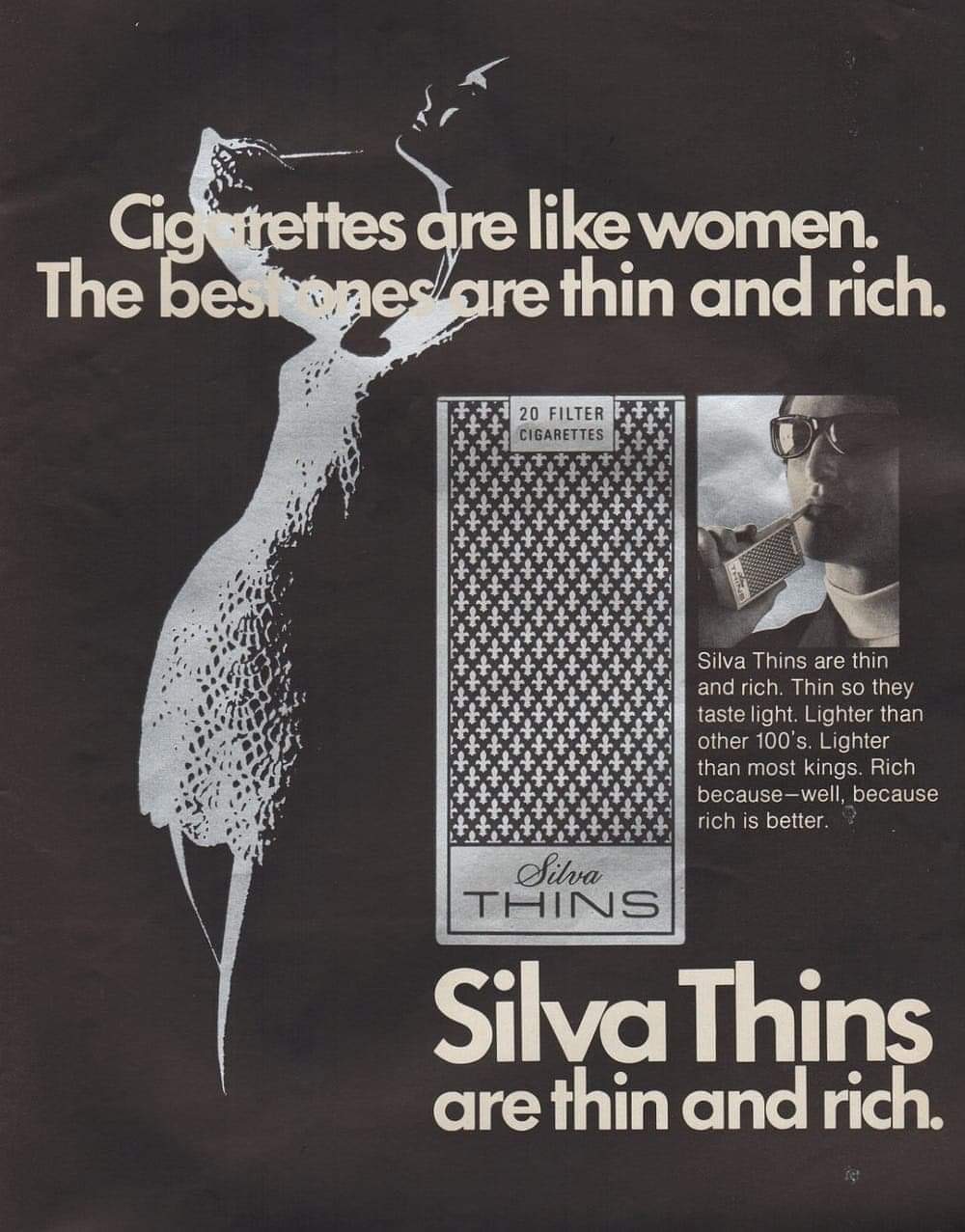
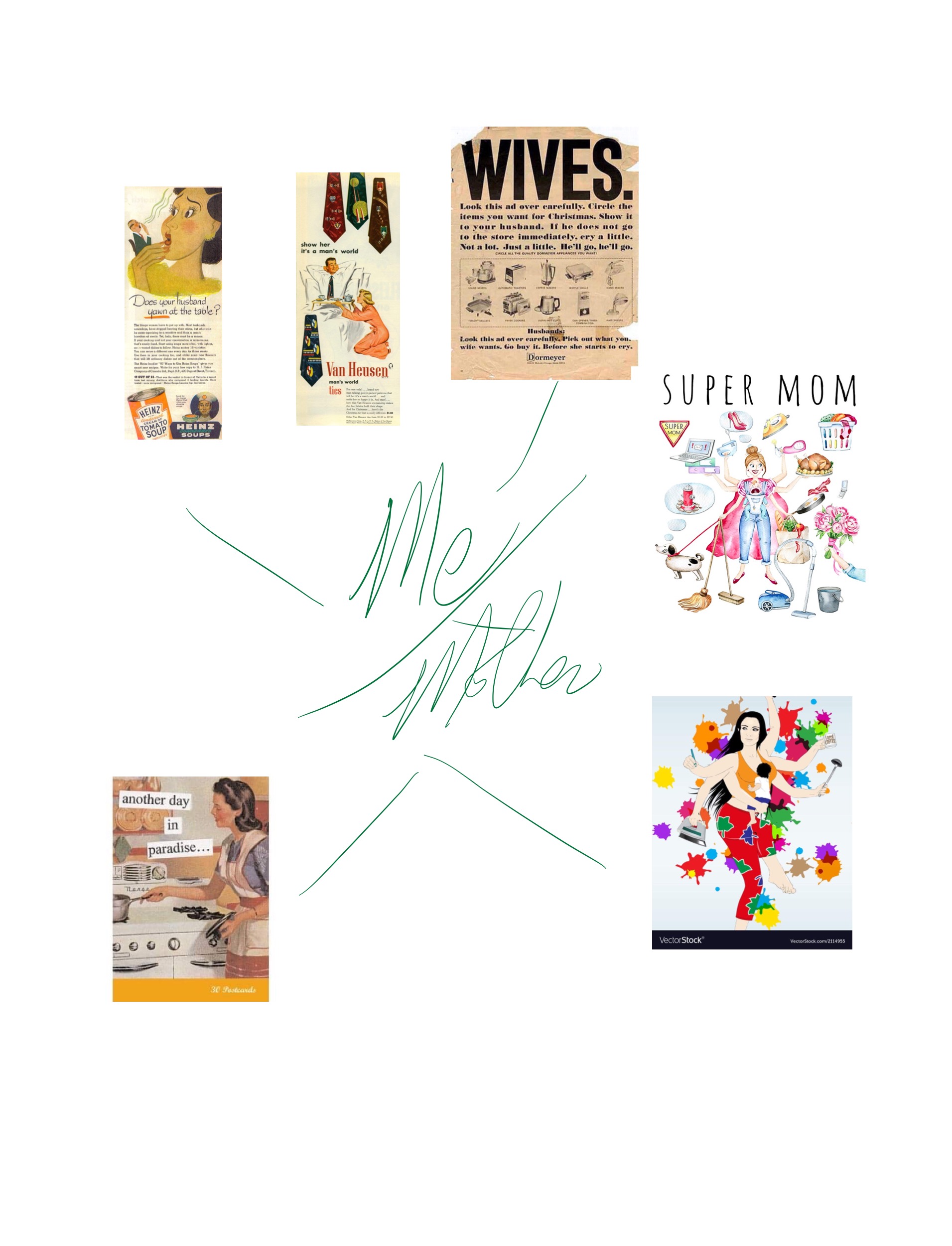
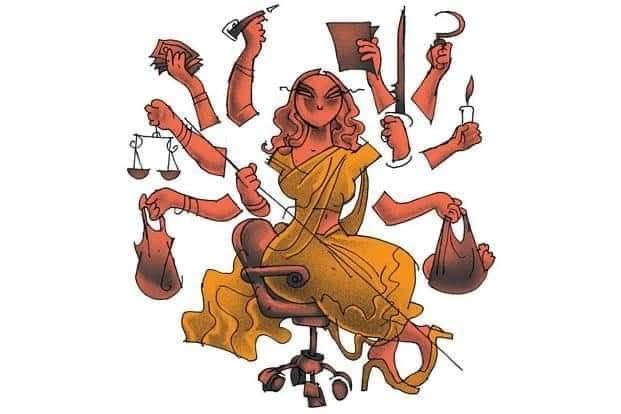
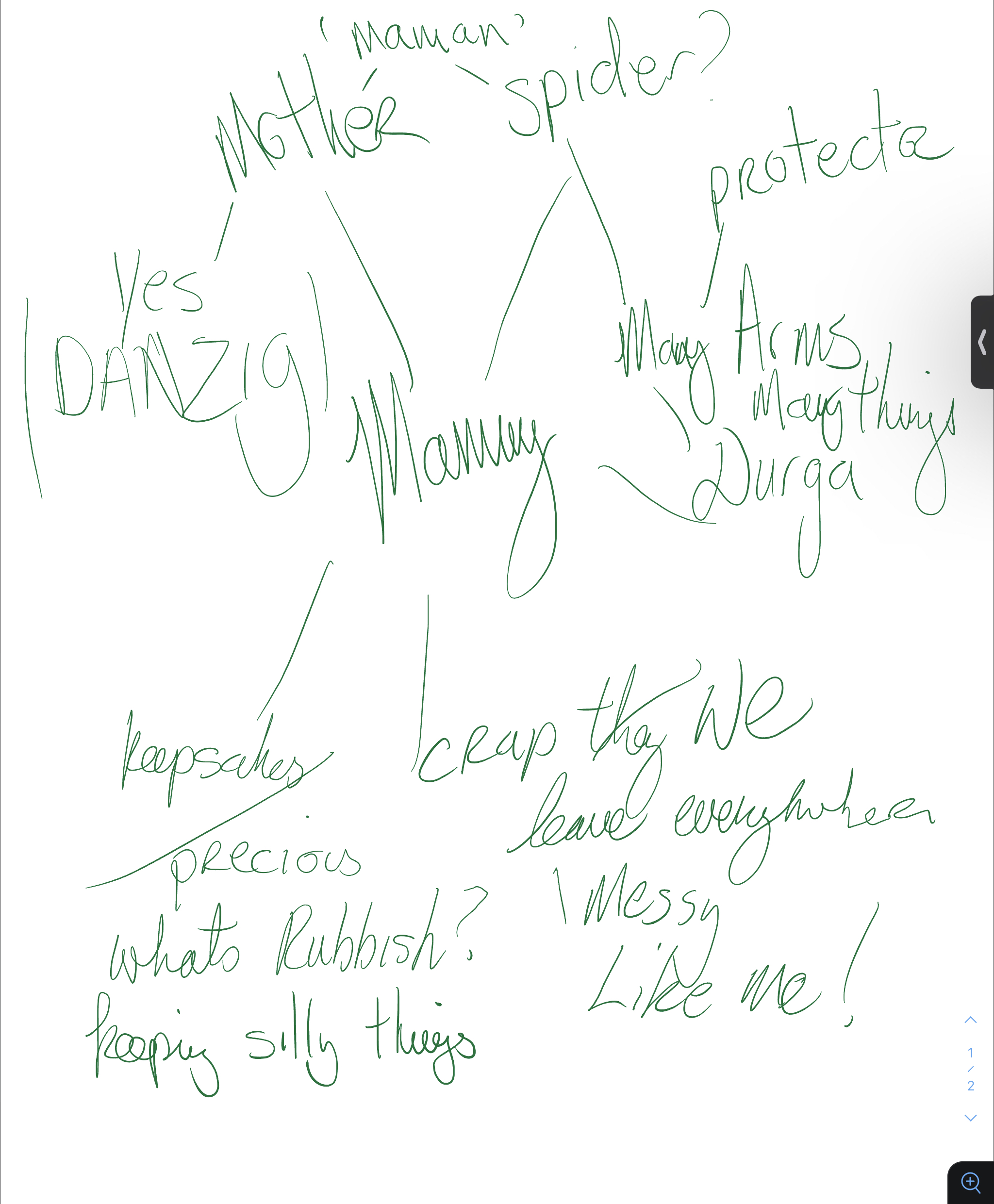
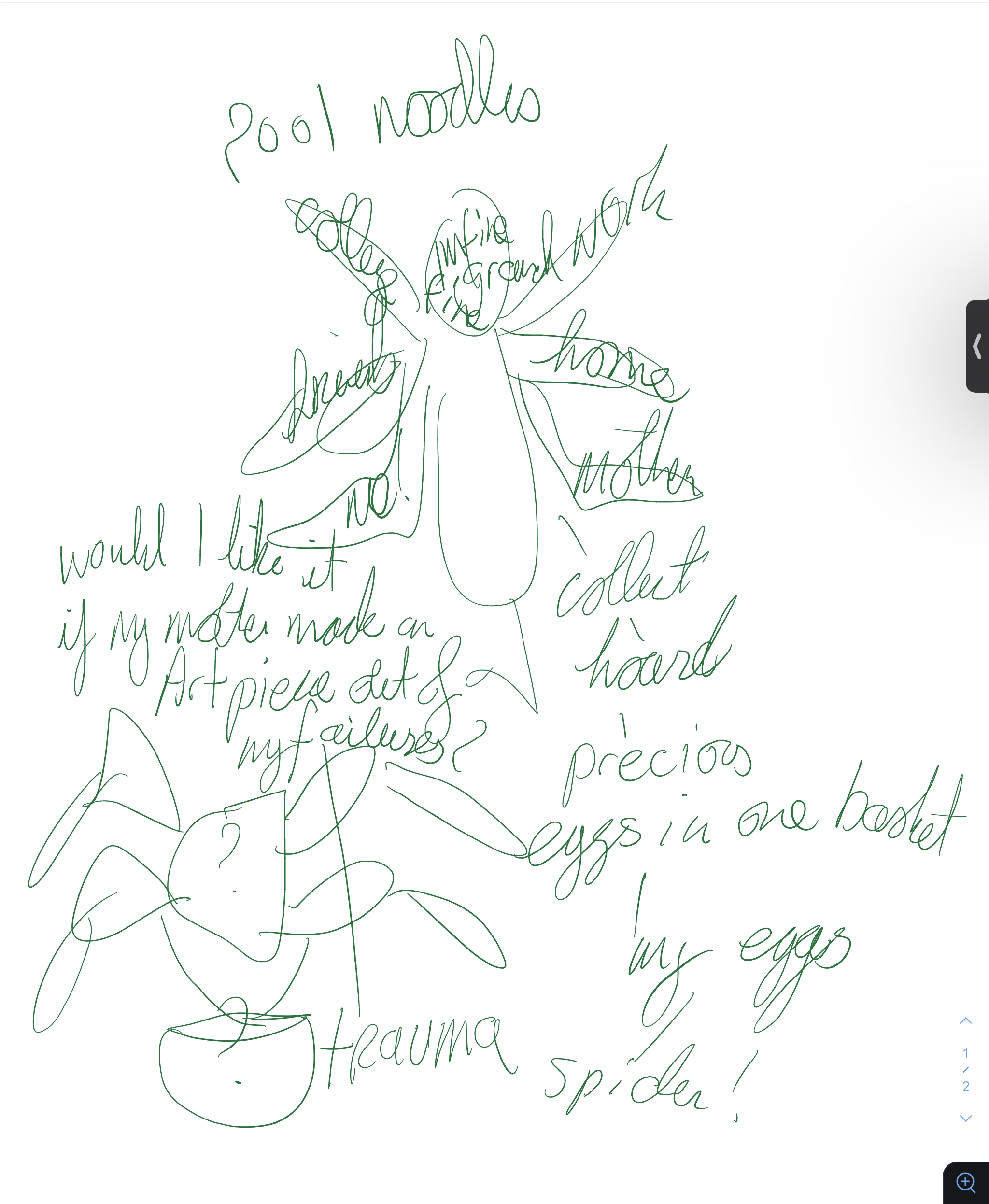
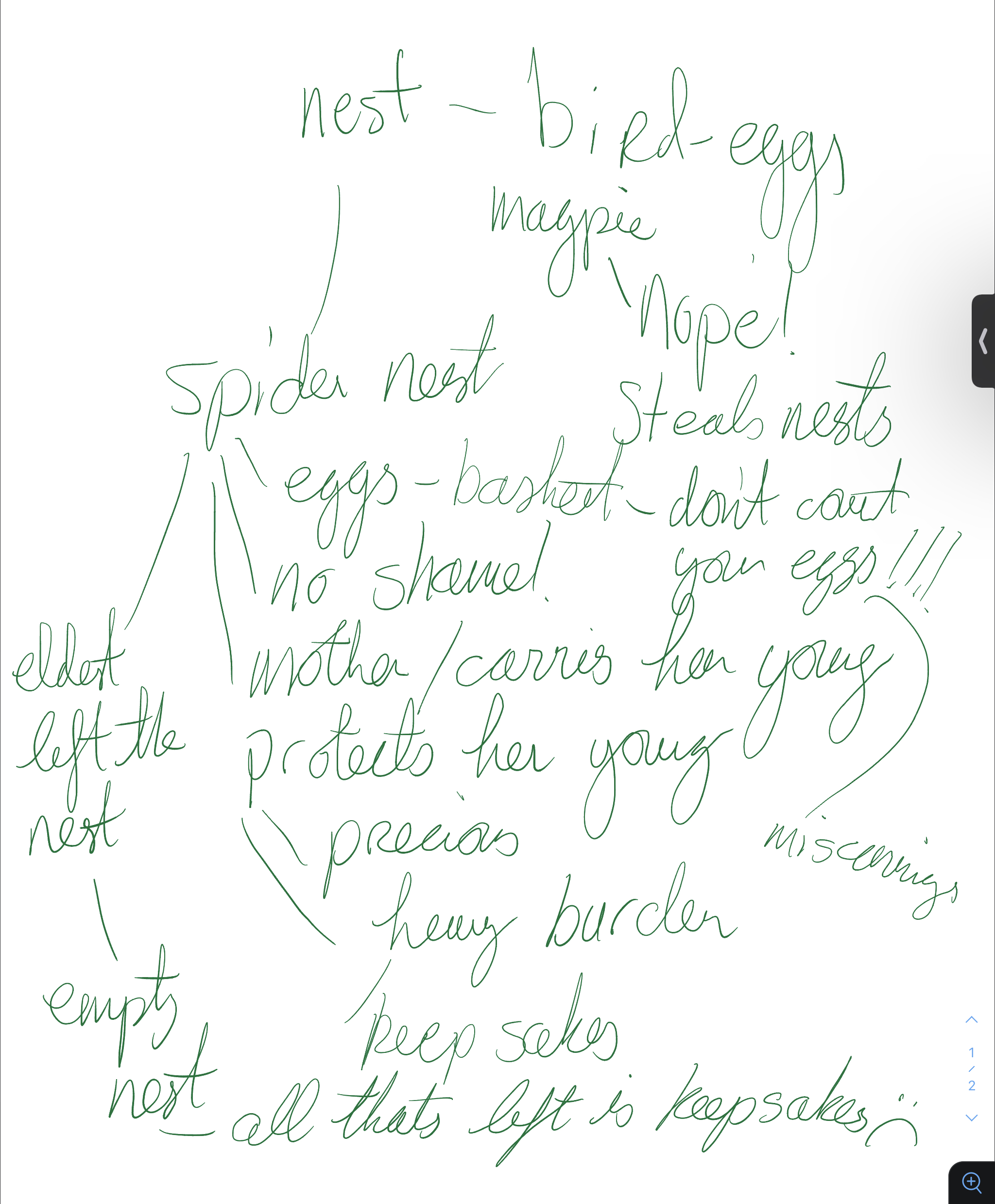
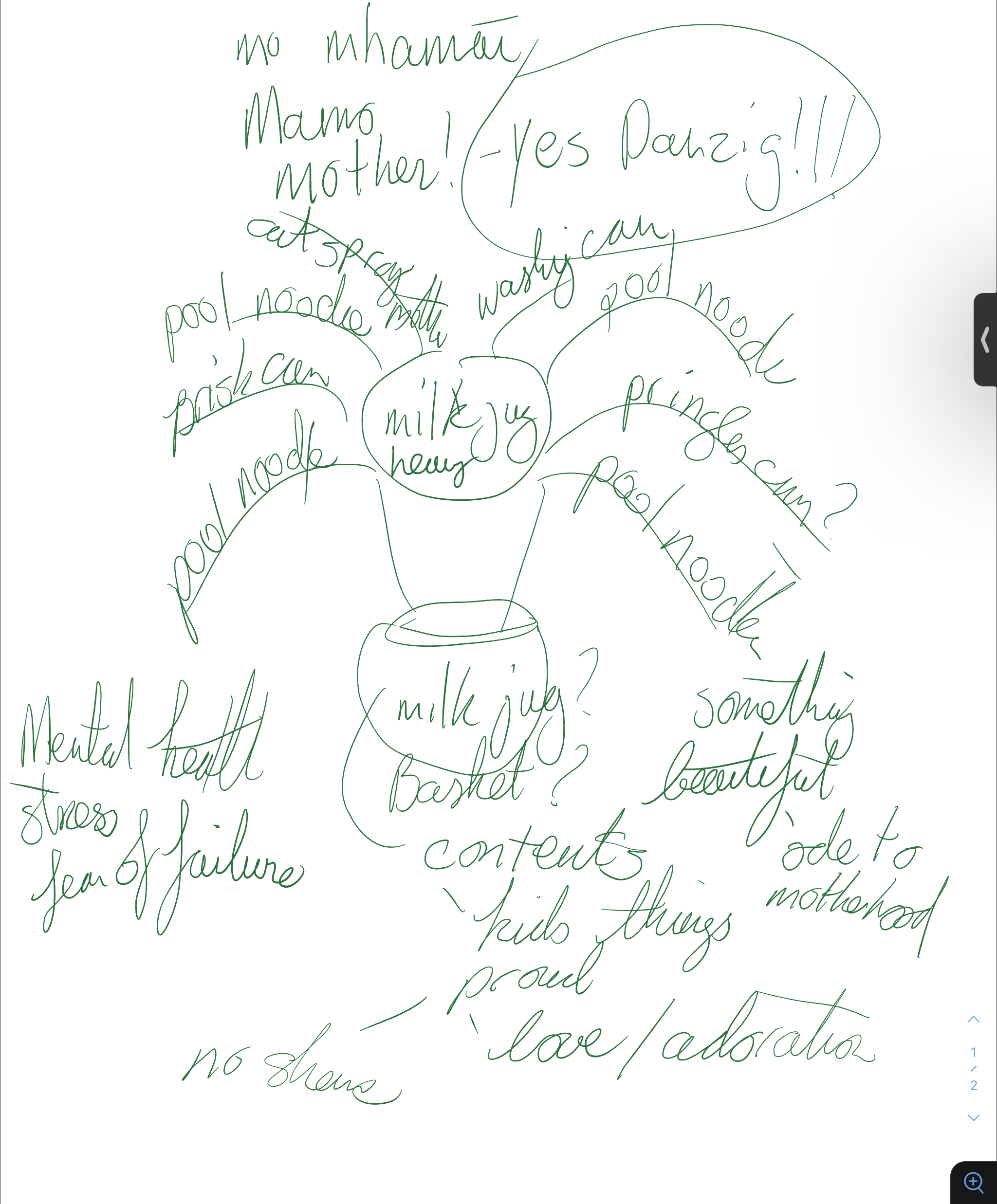
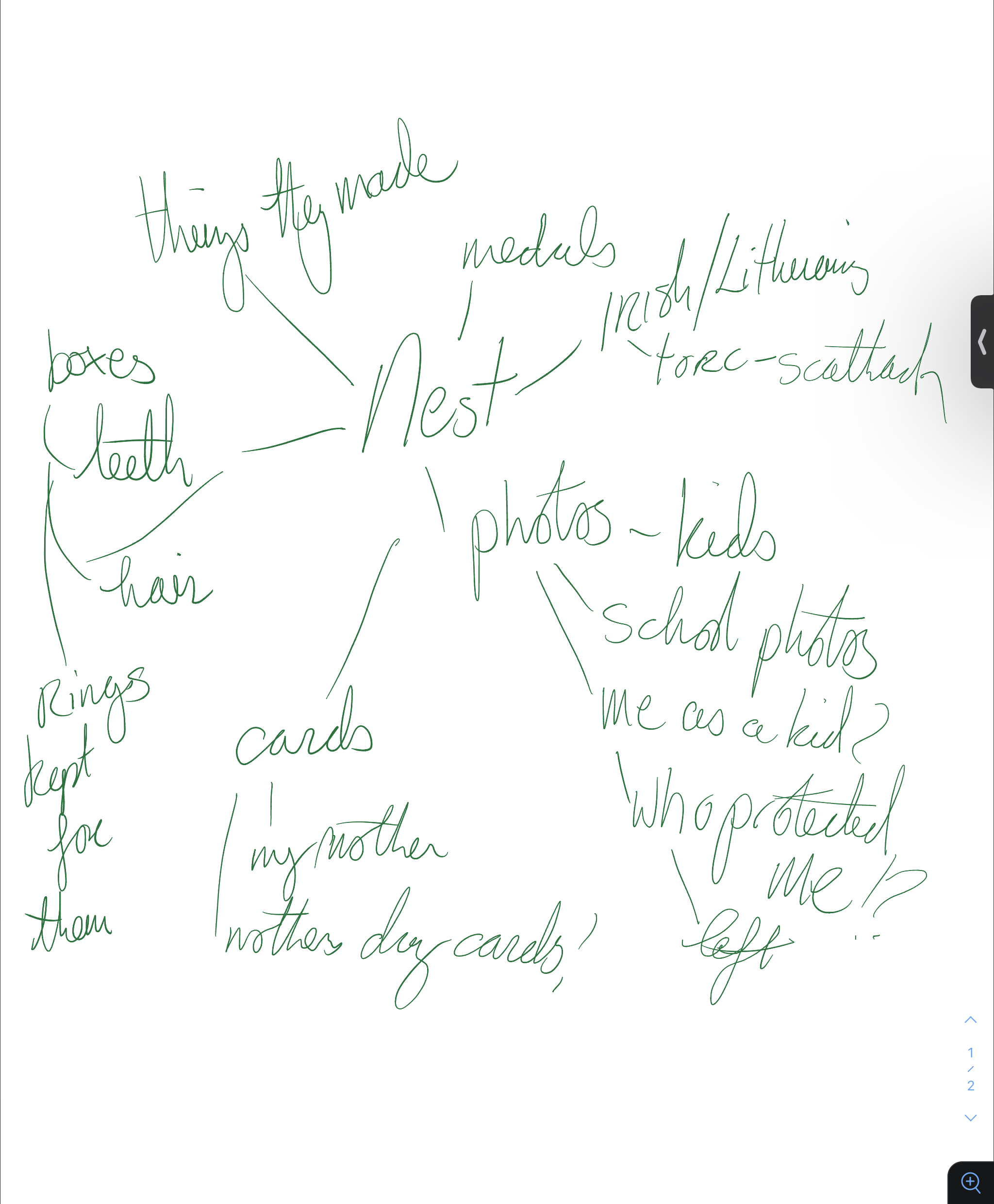

Material search and assemble
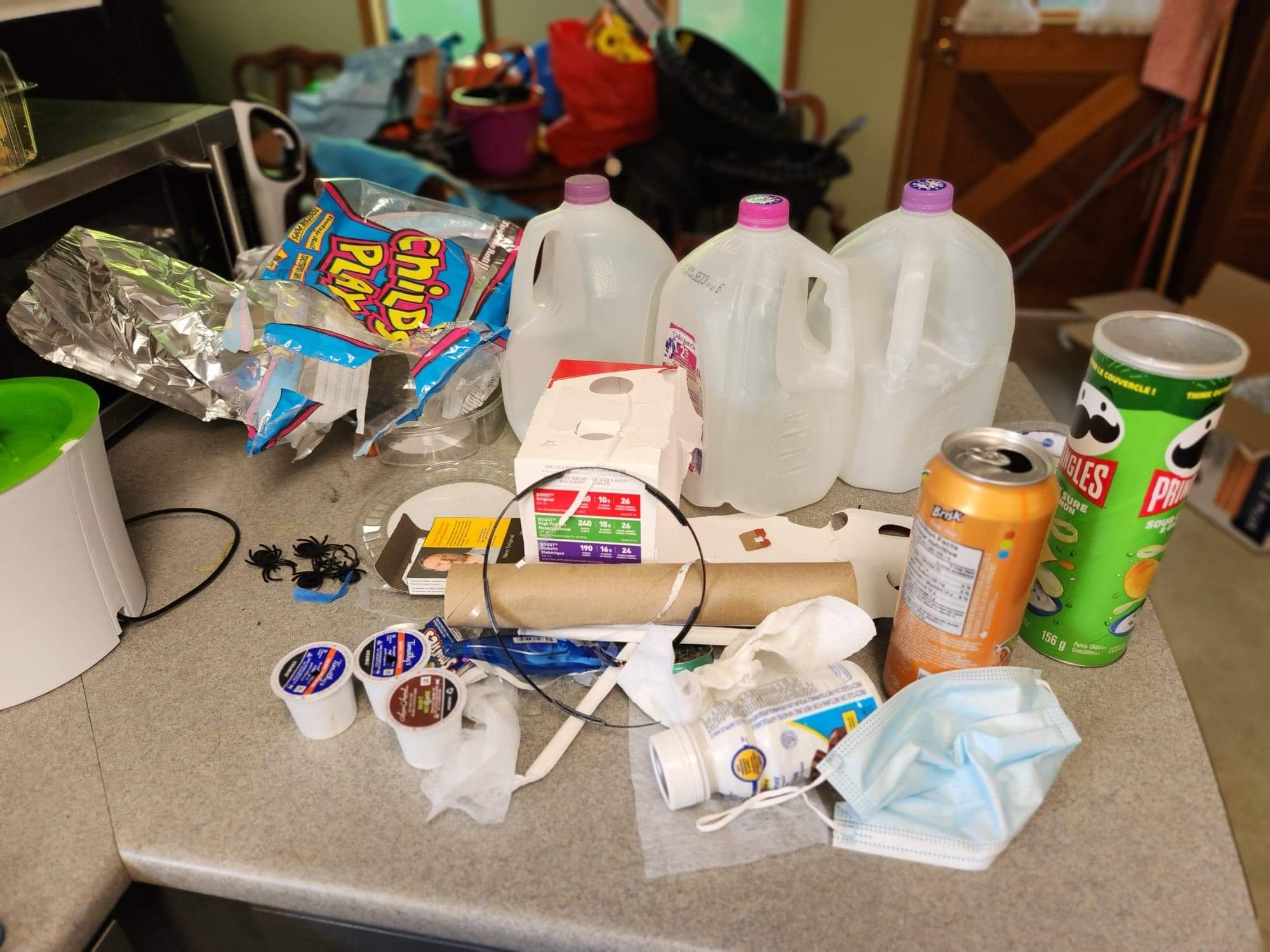
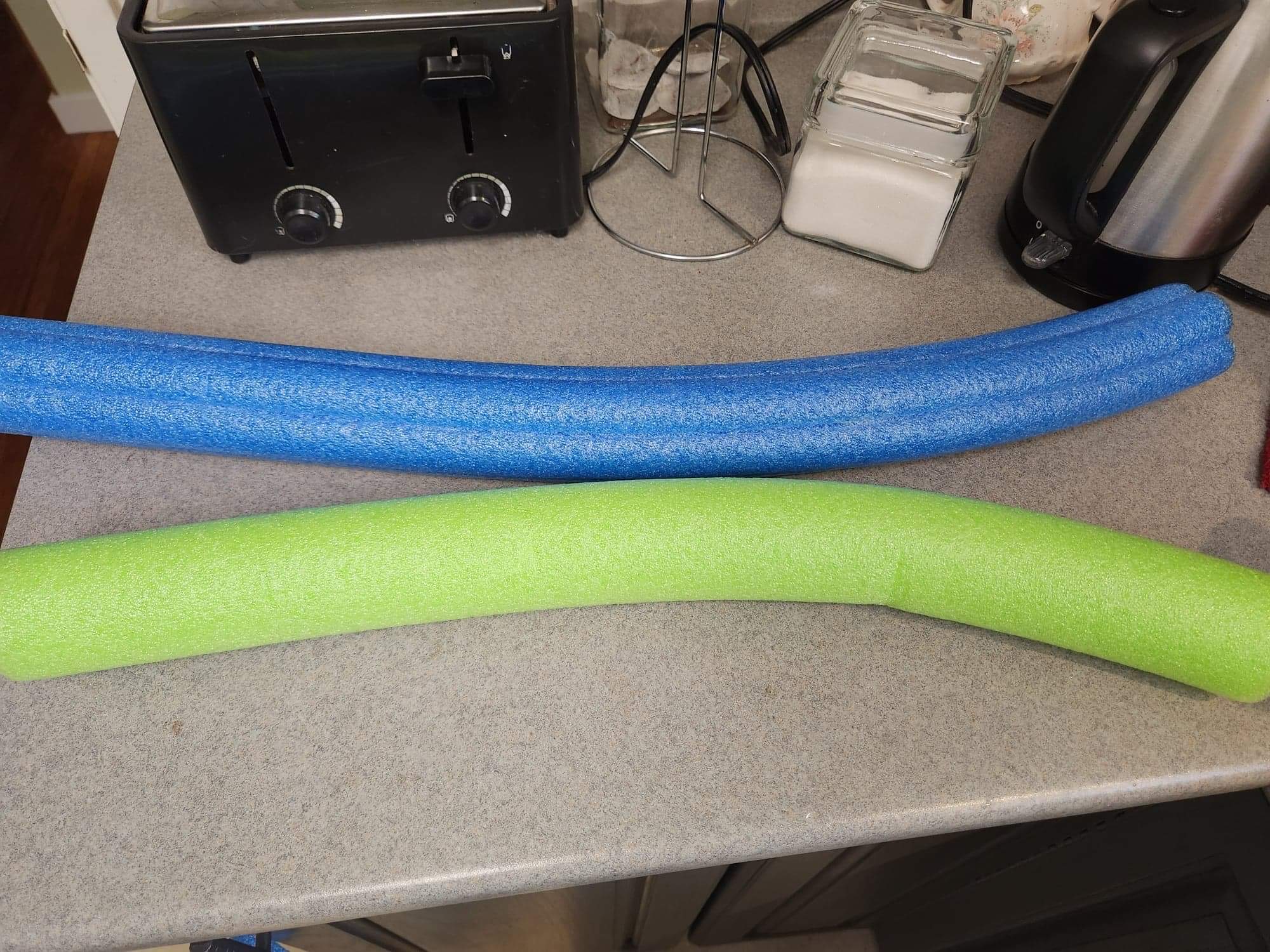
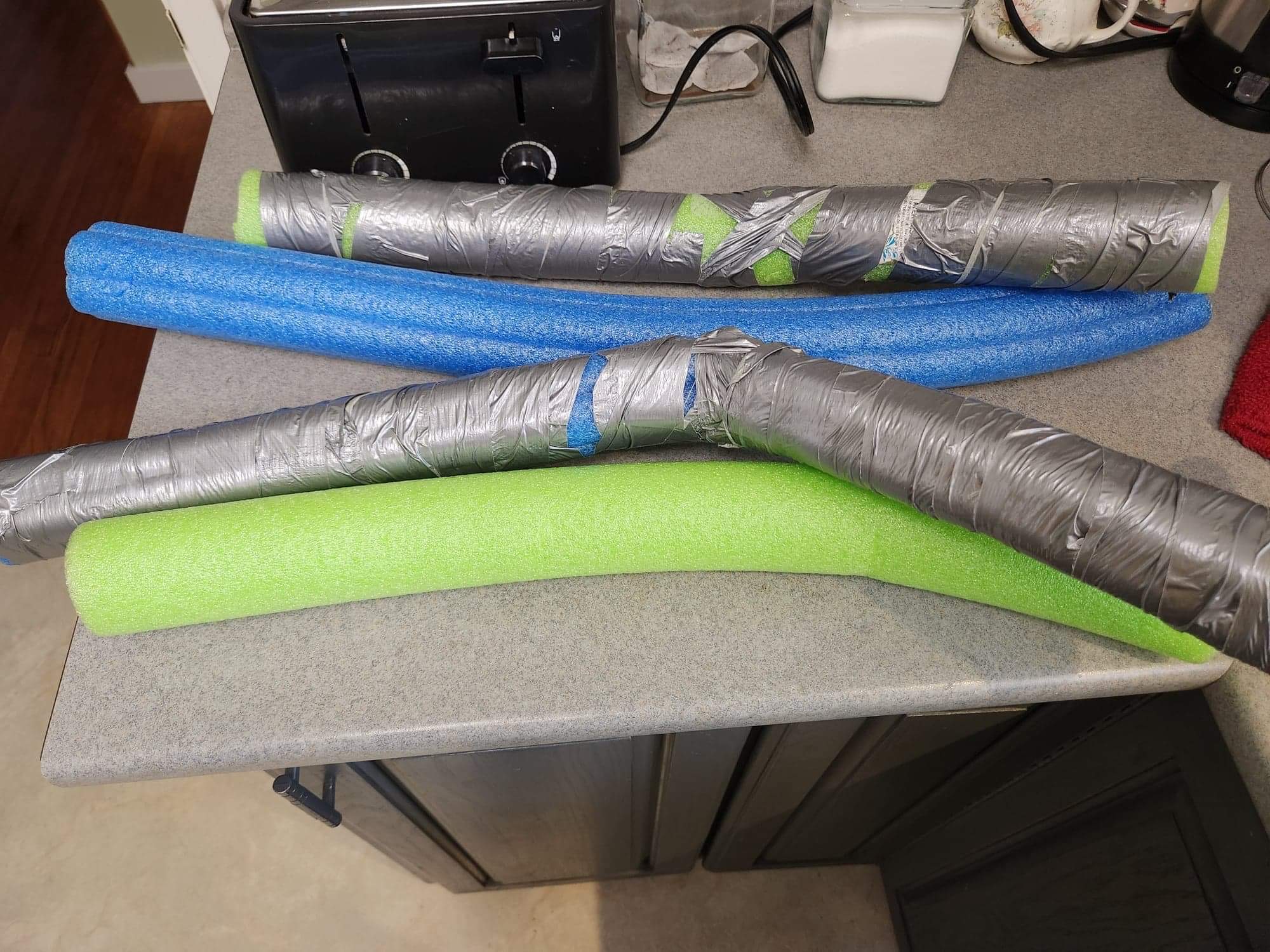
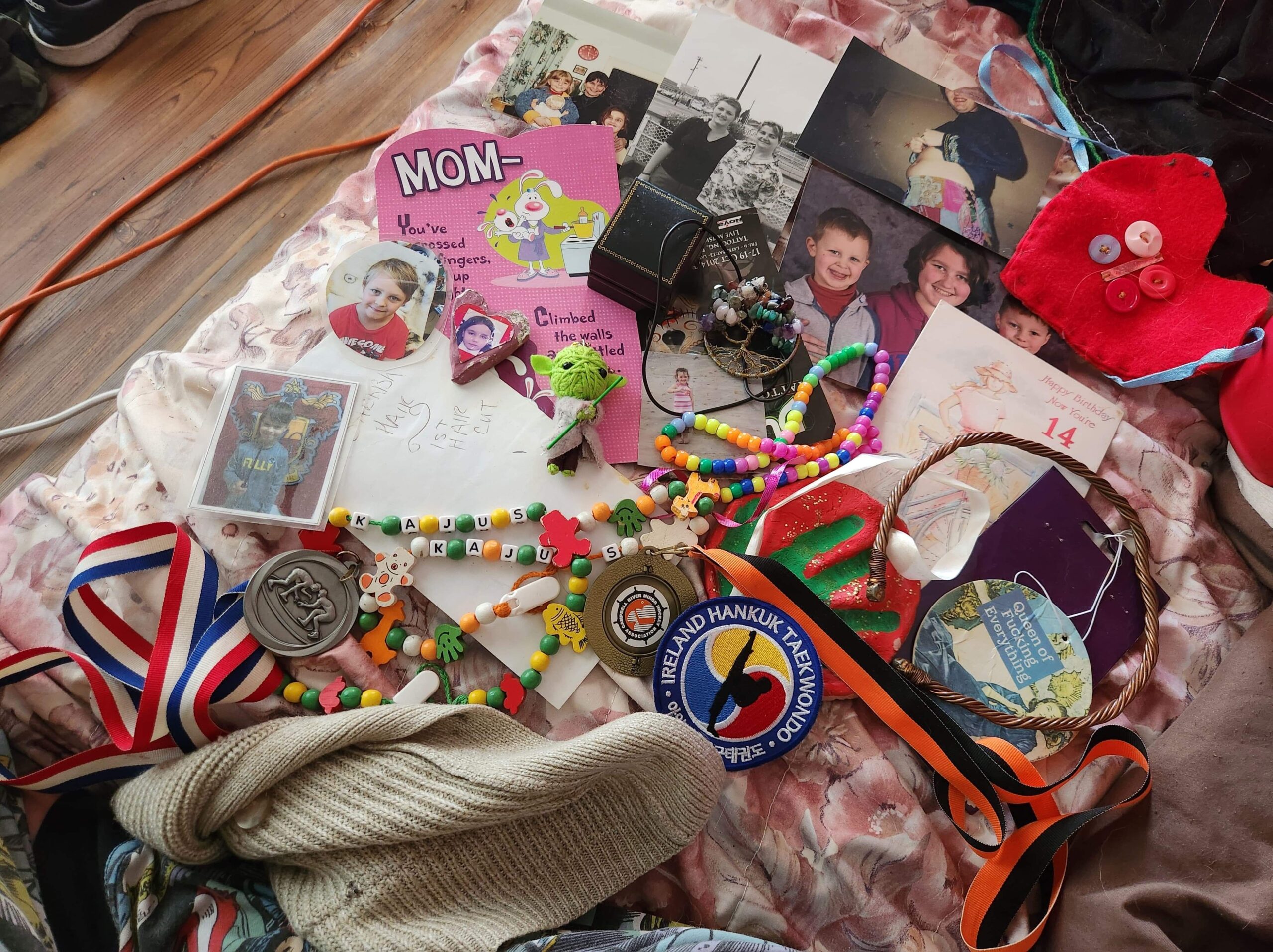
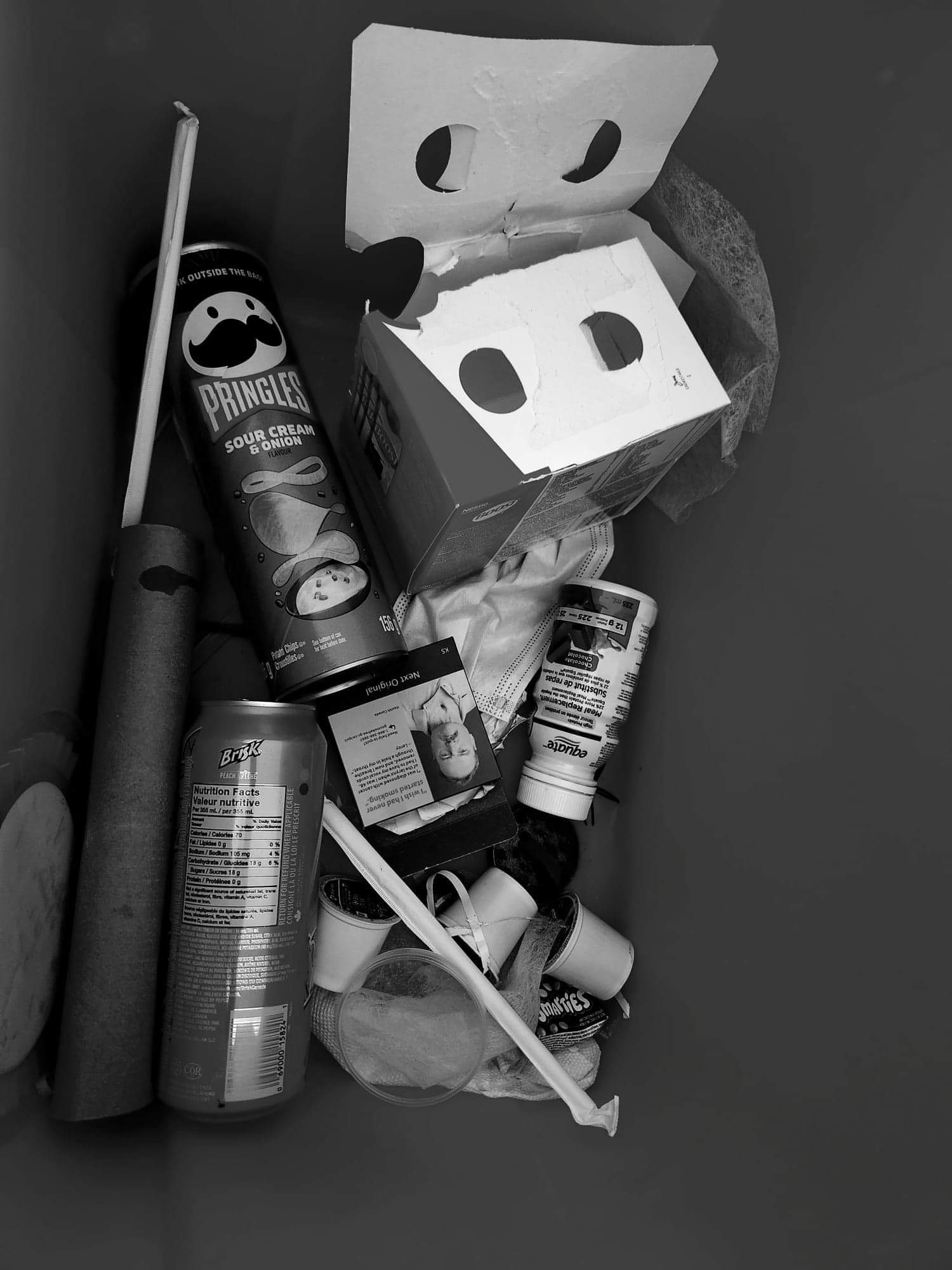
Assembling
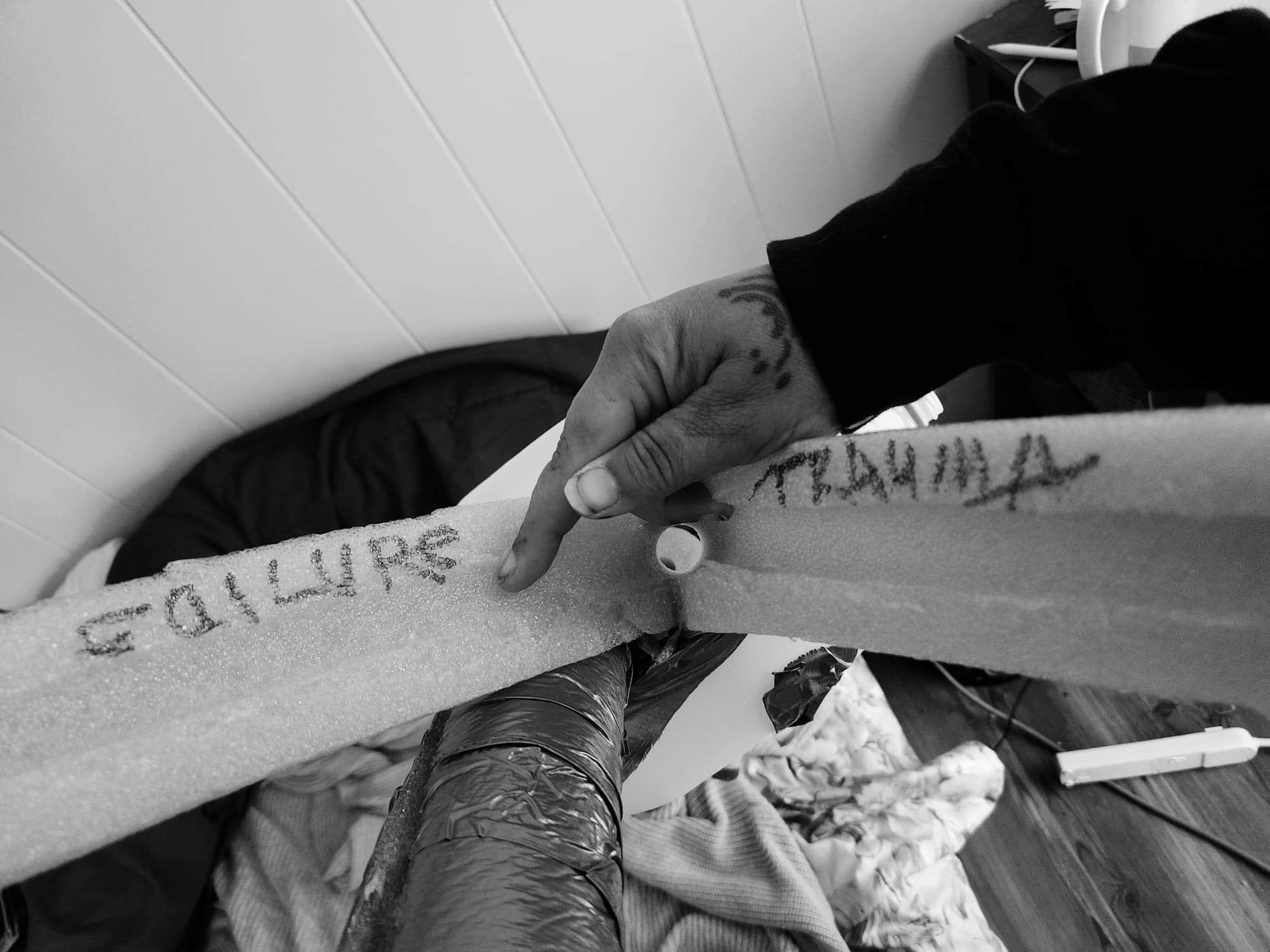
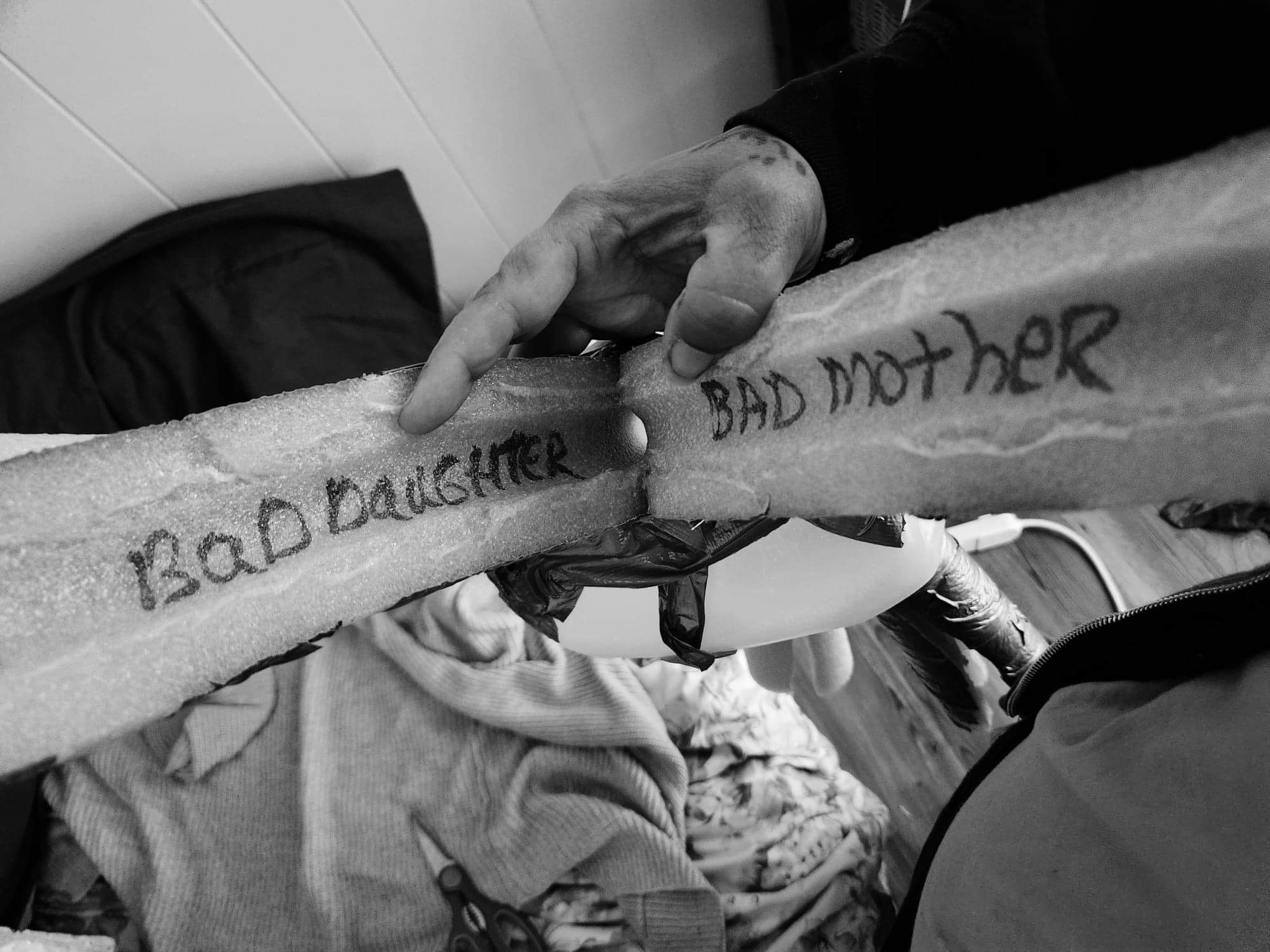
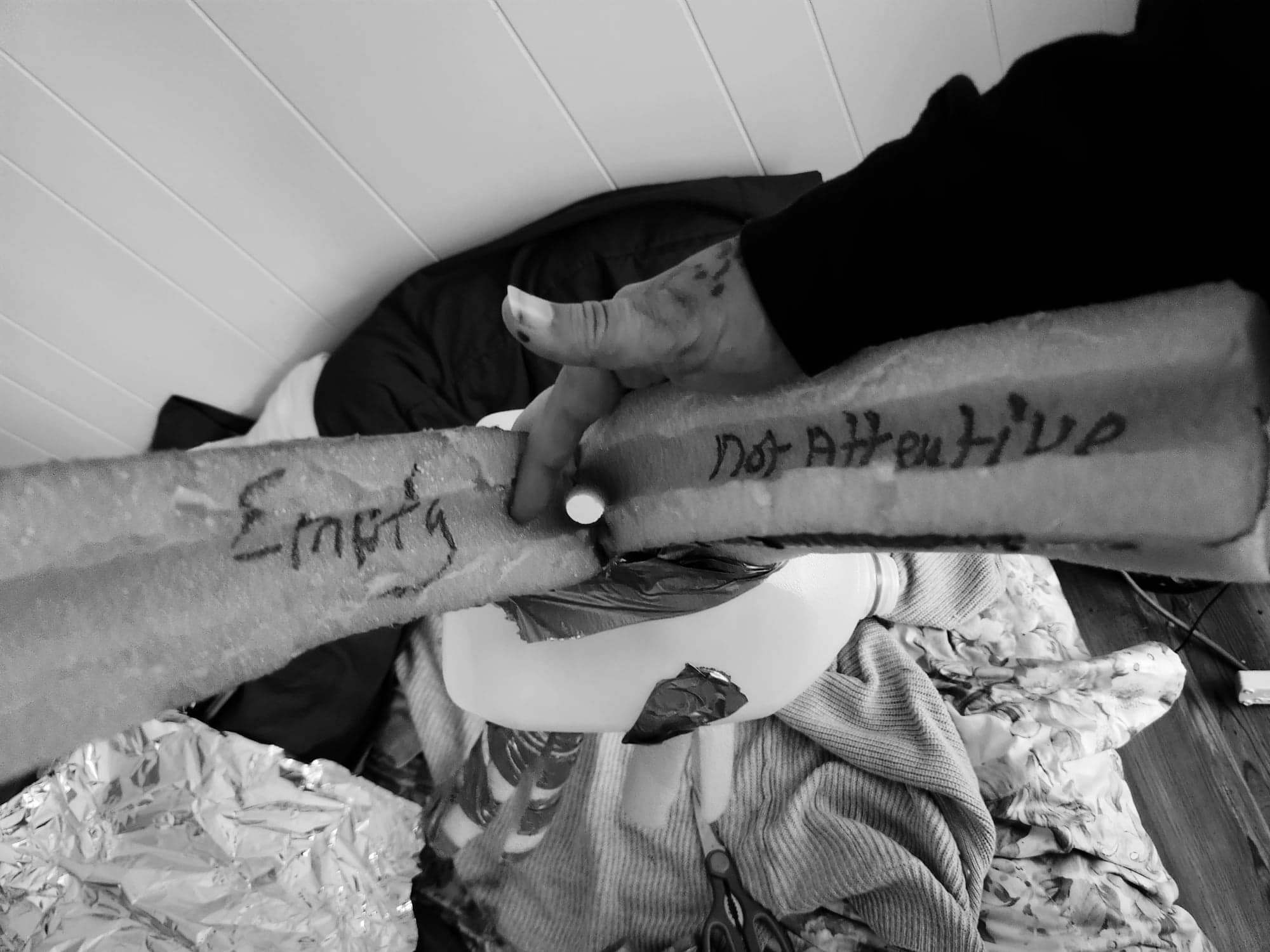
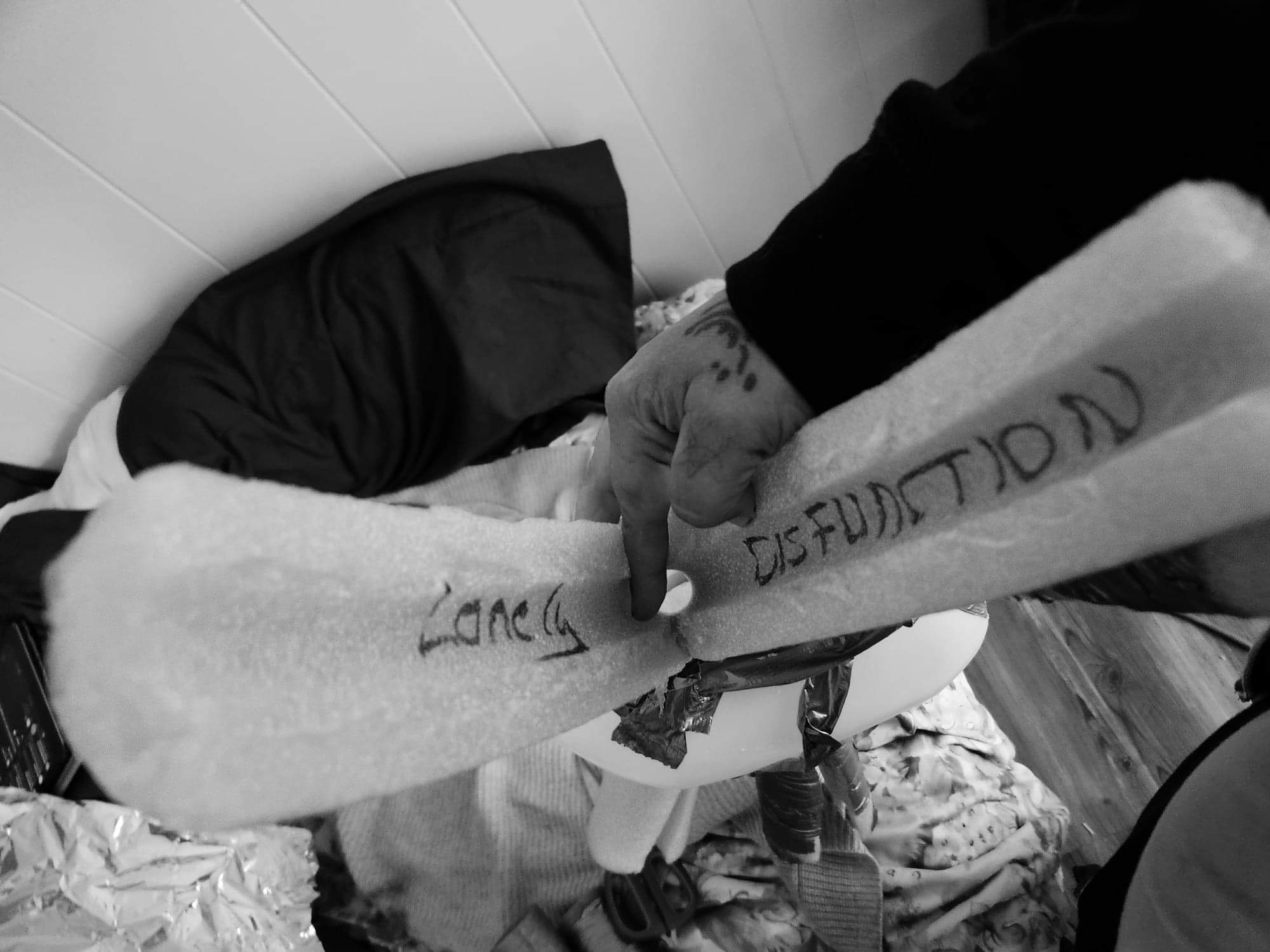
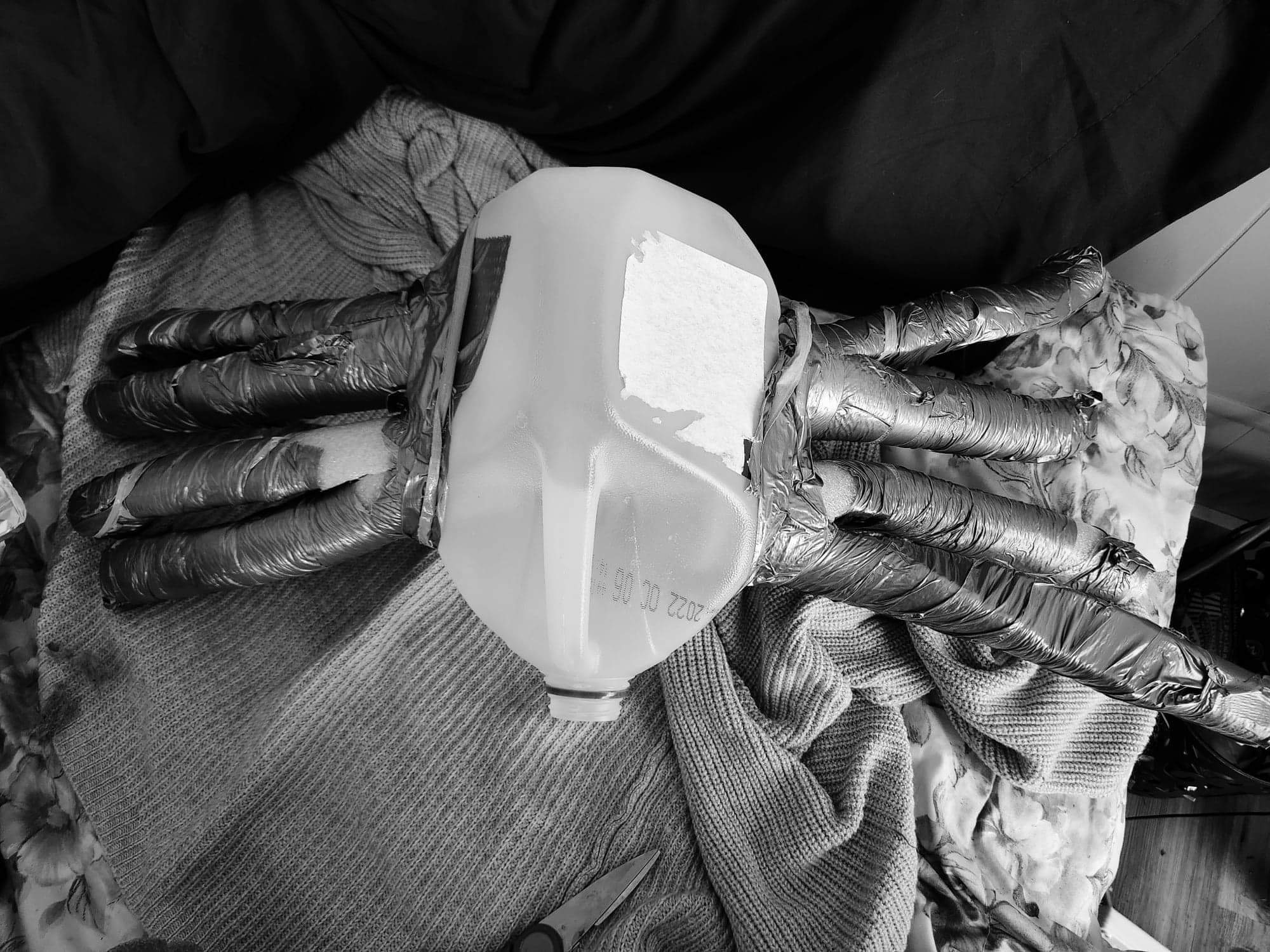
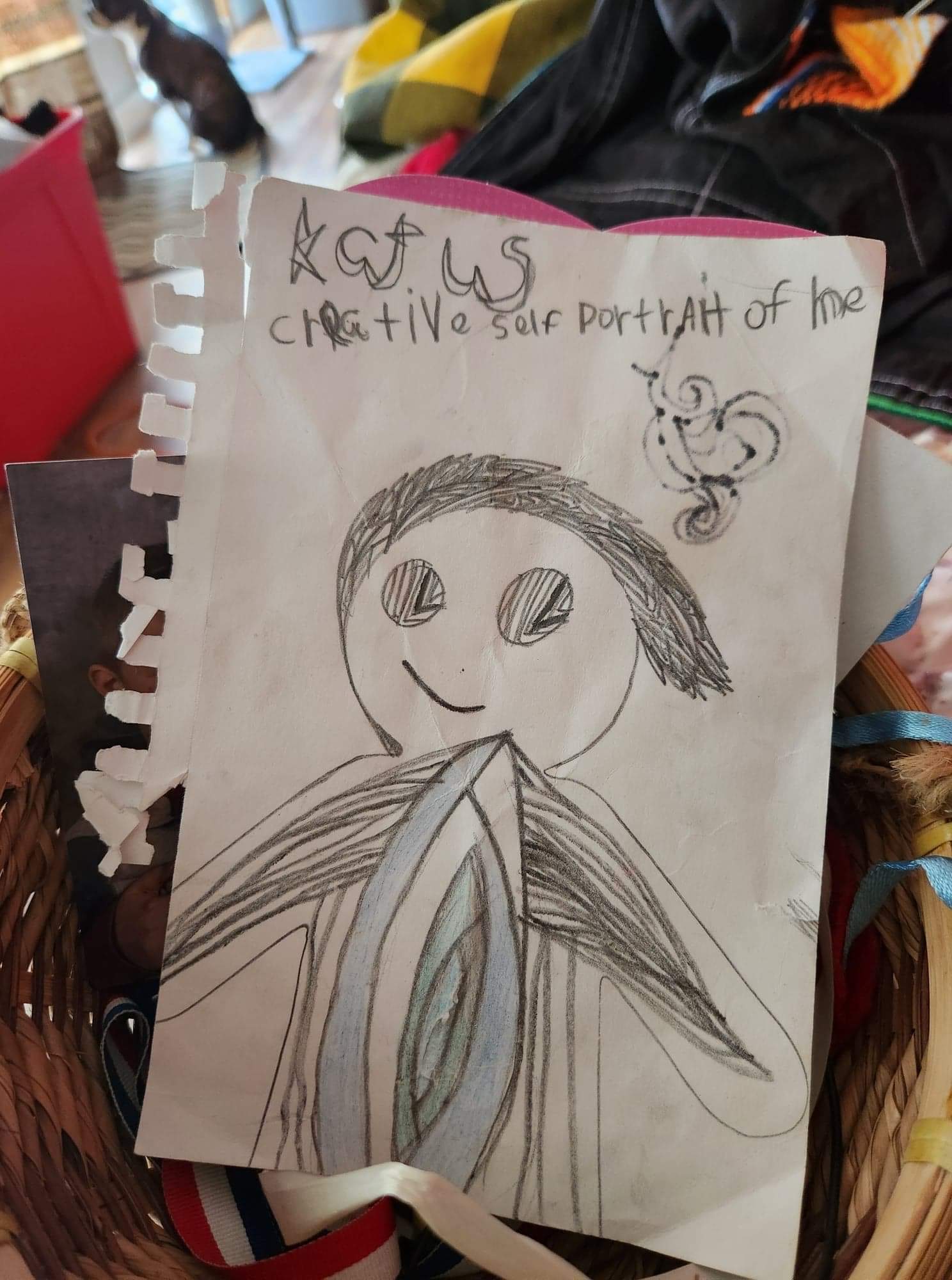
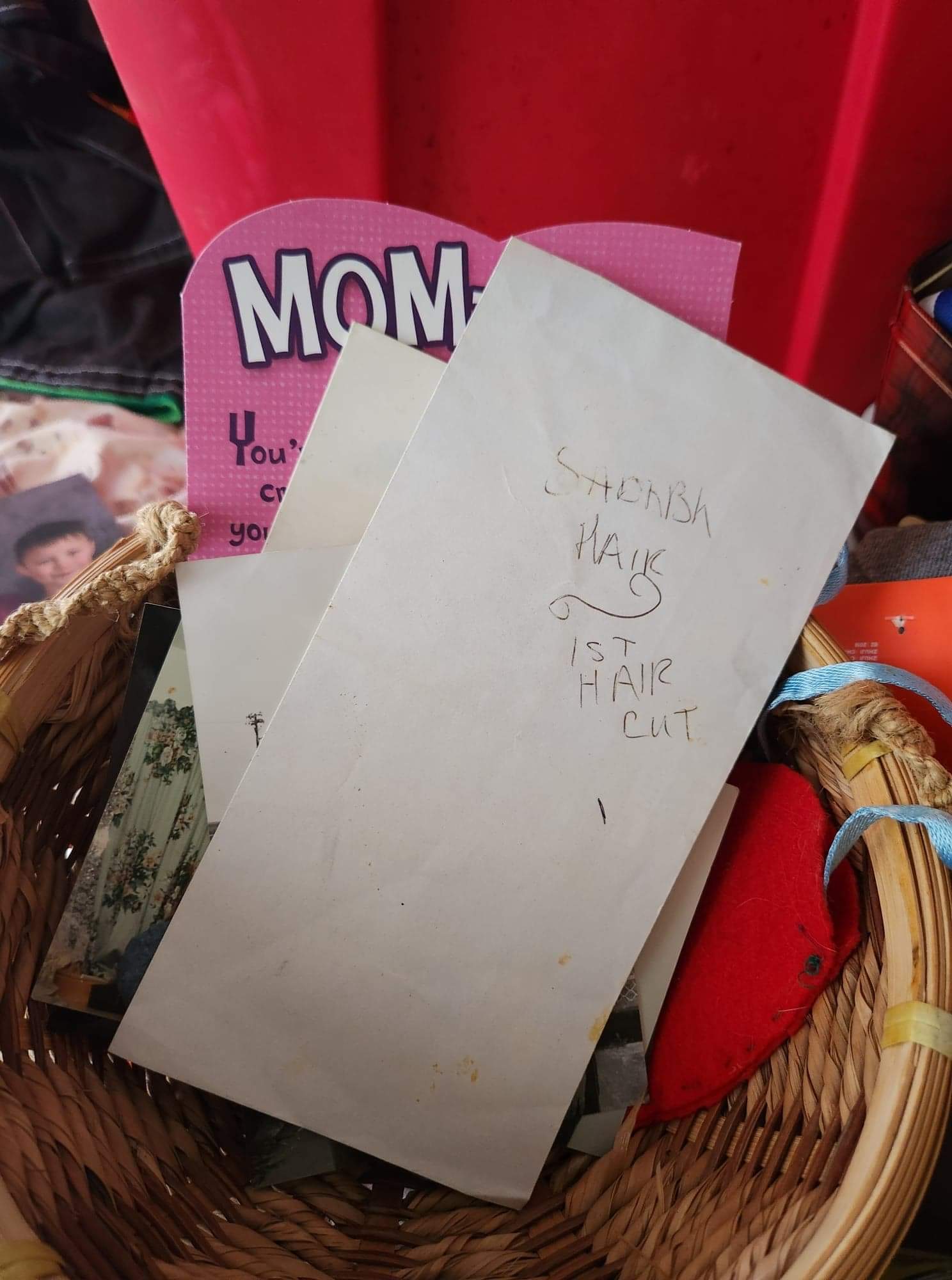
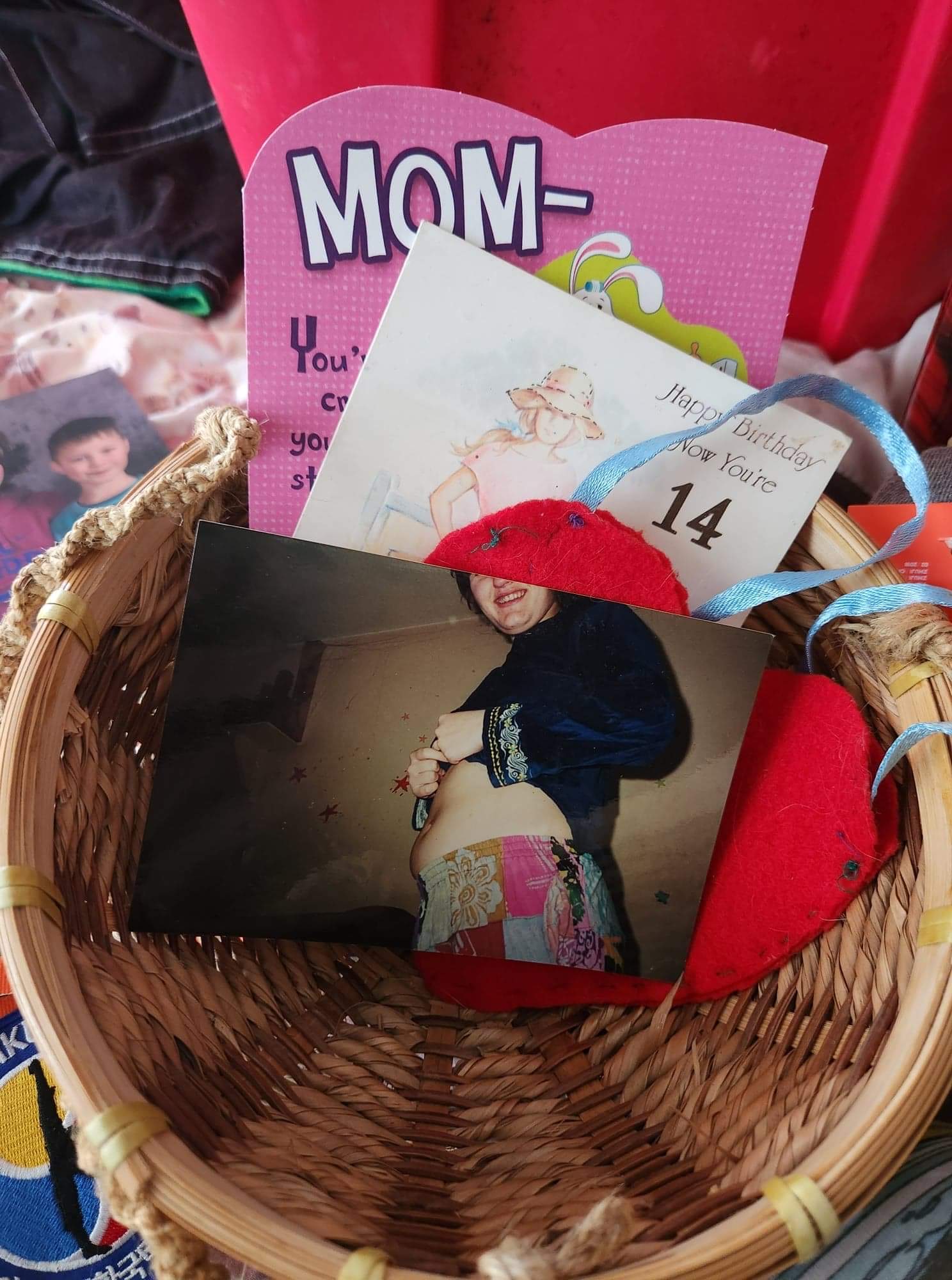
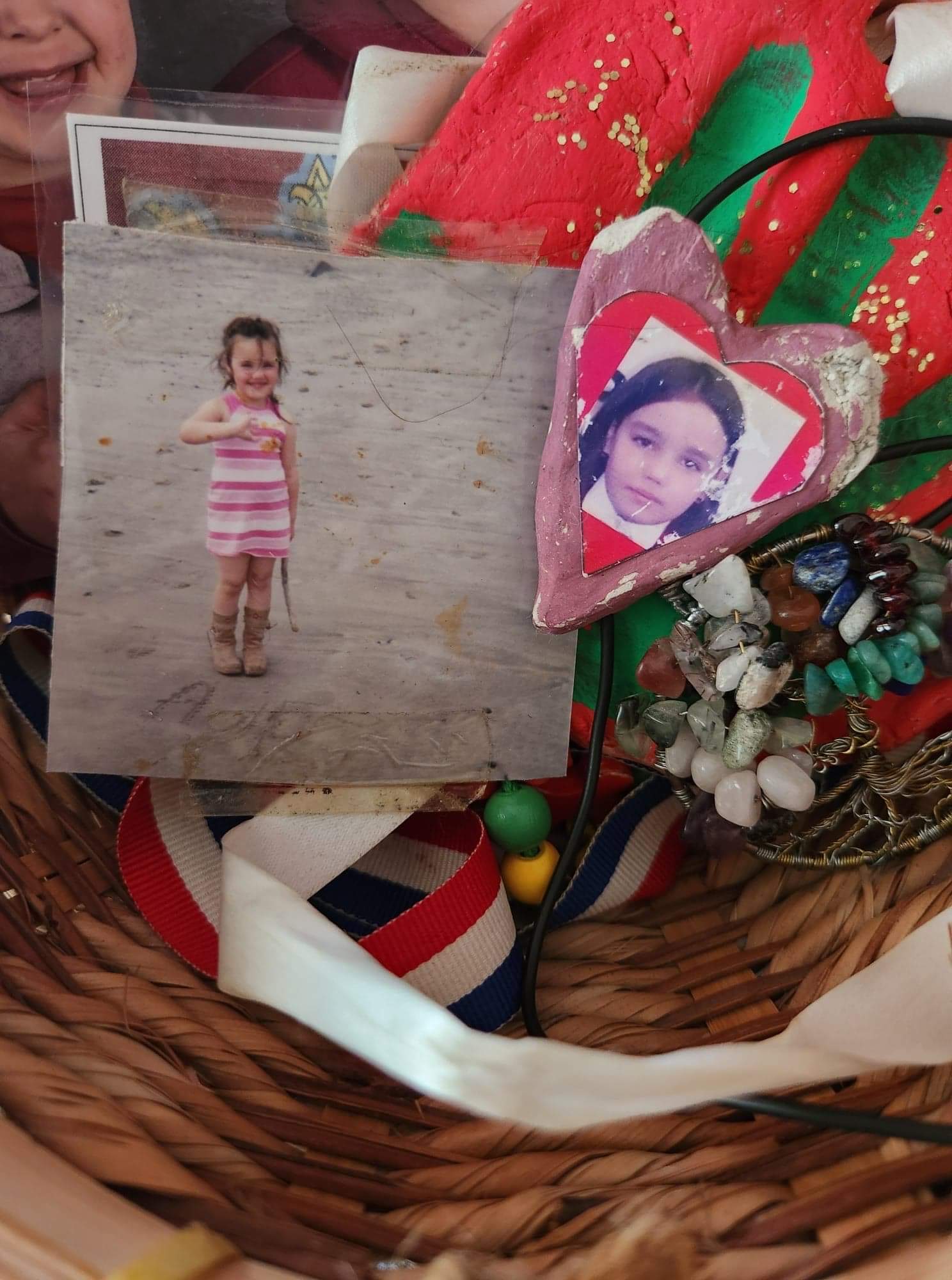
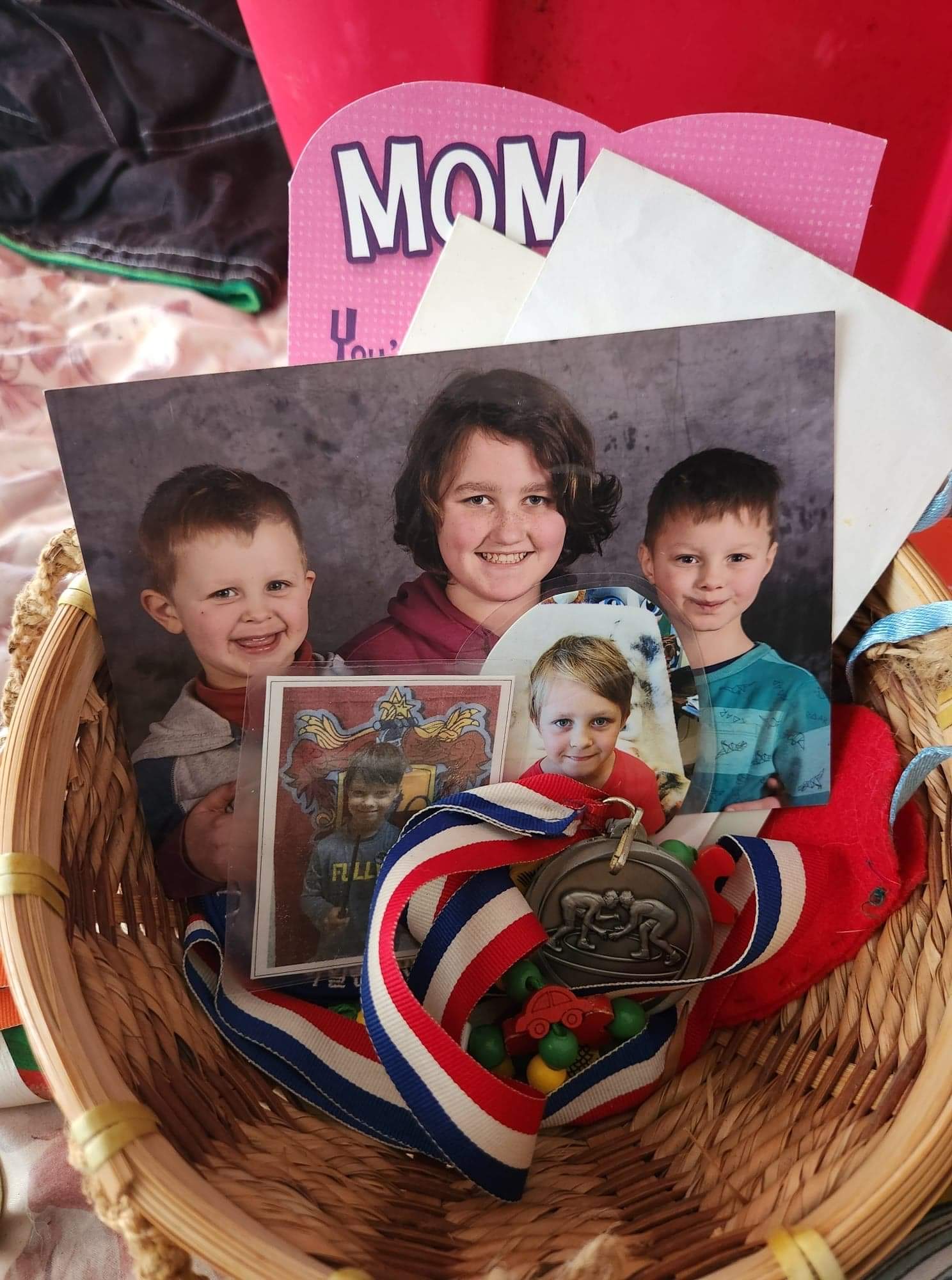
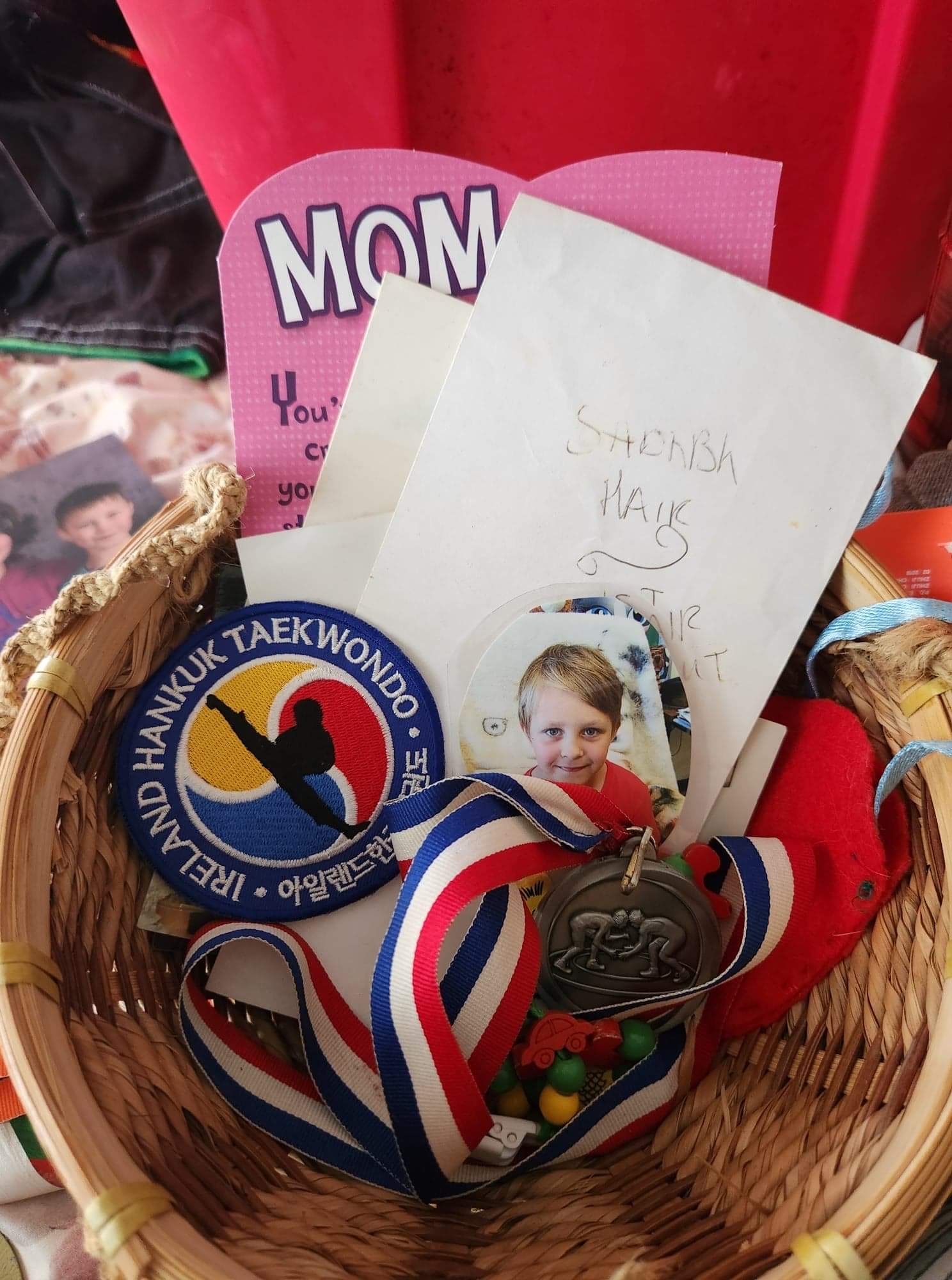
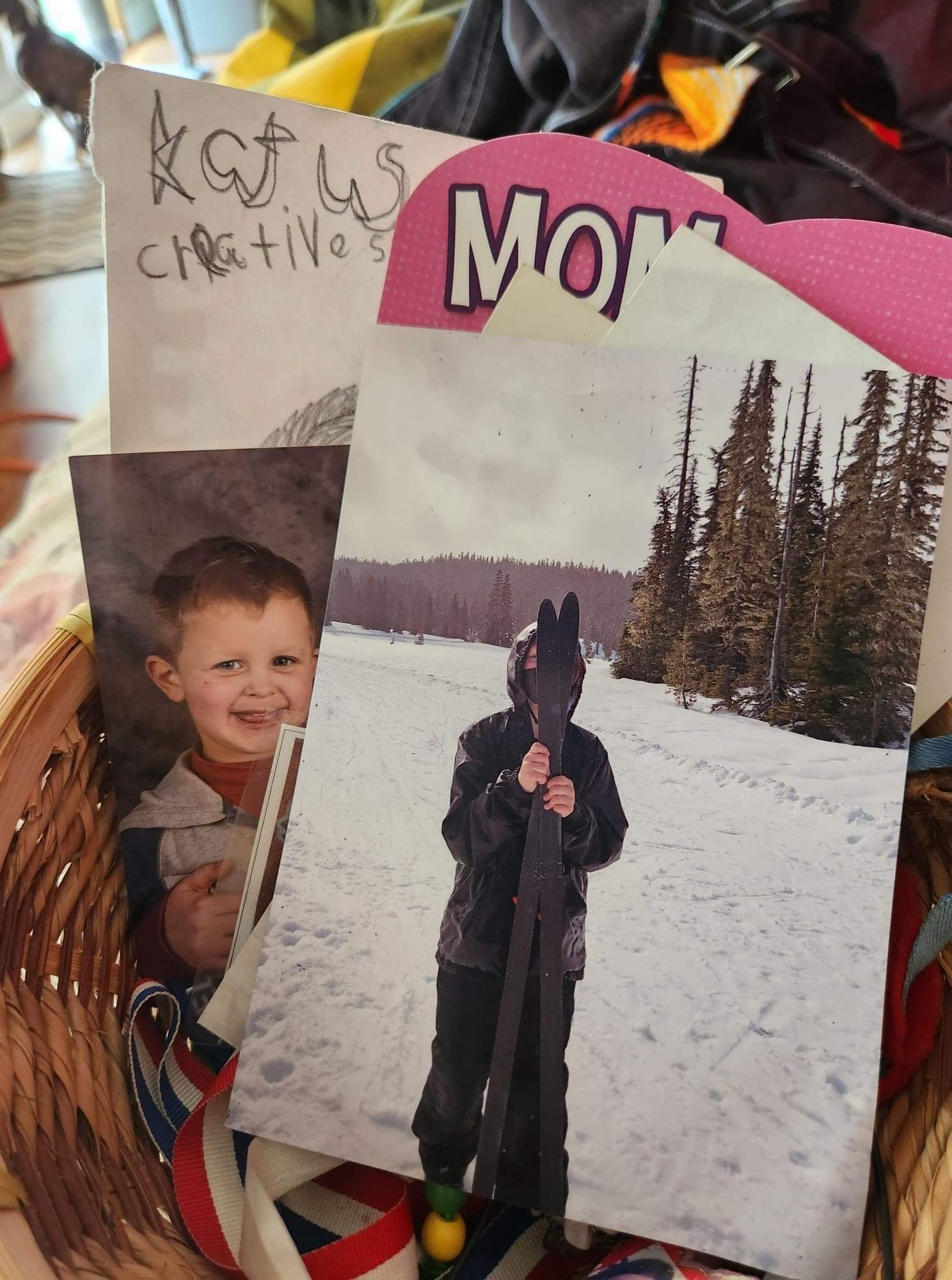
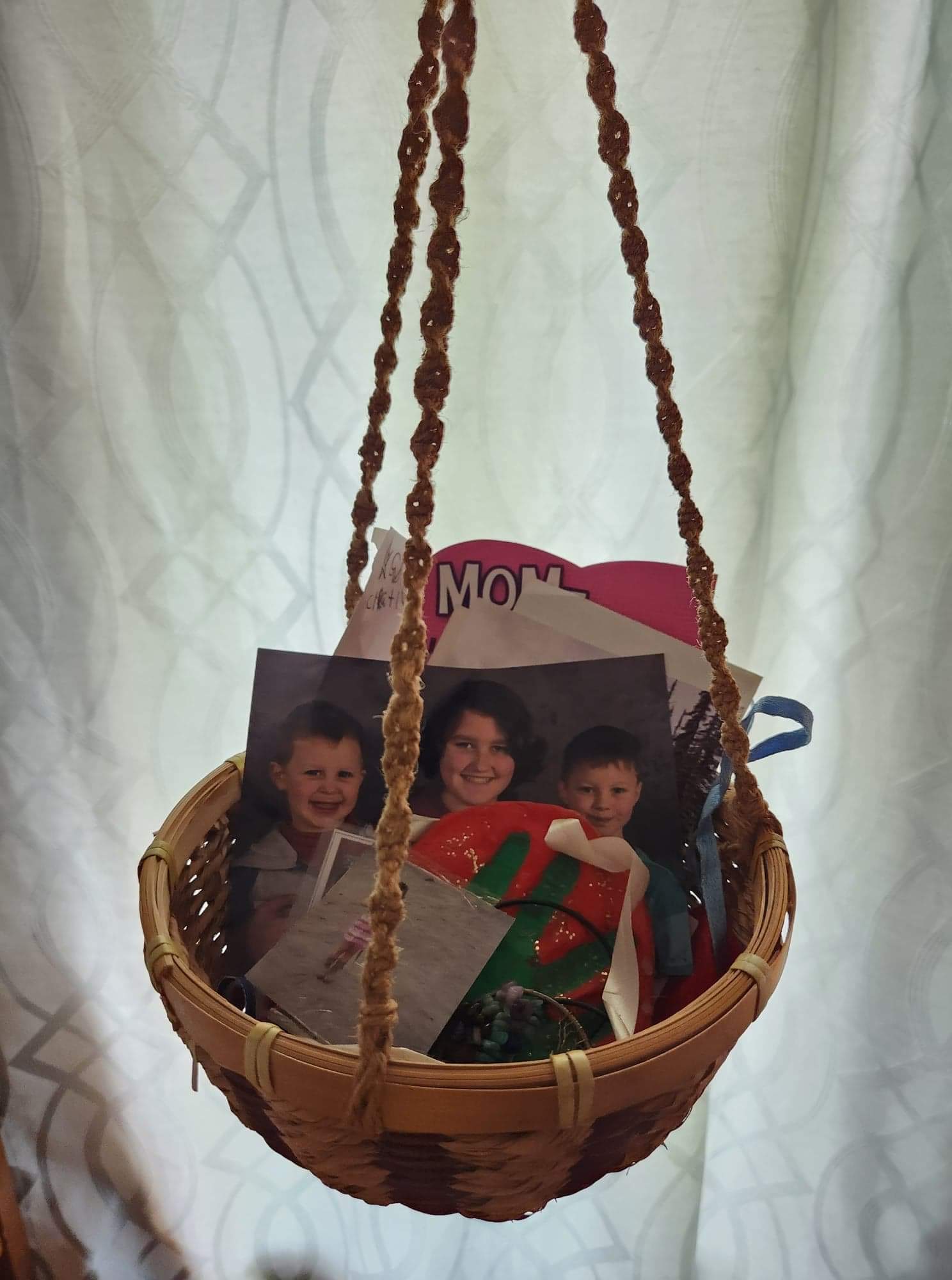
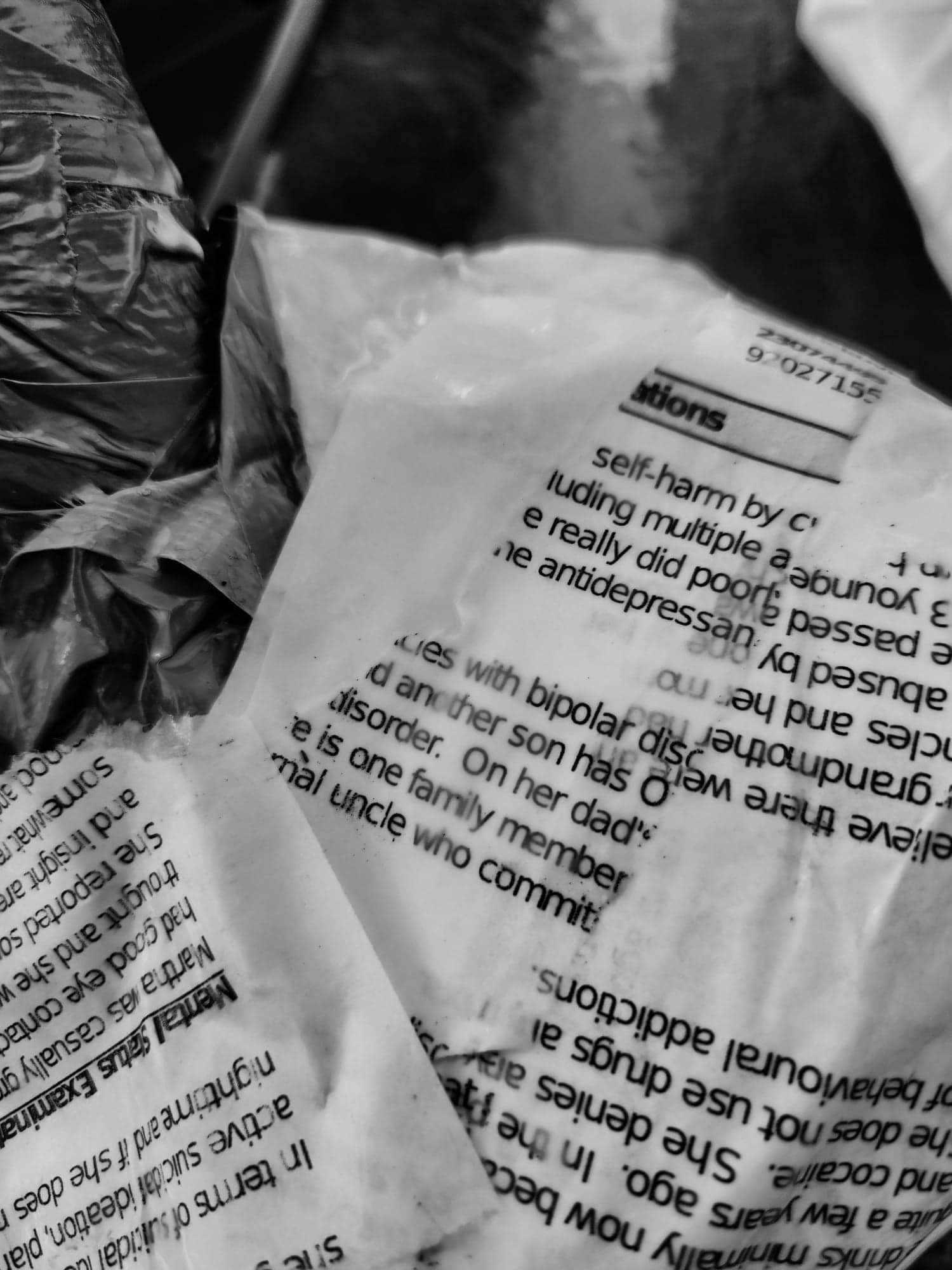
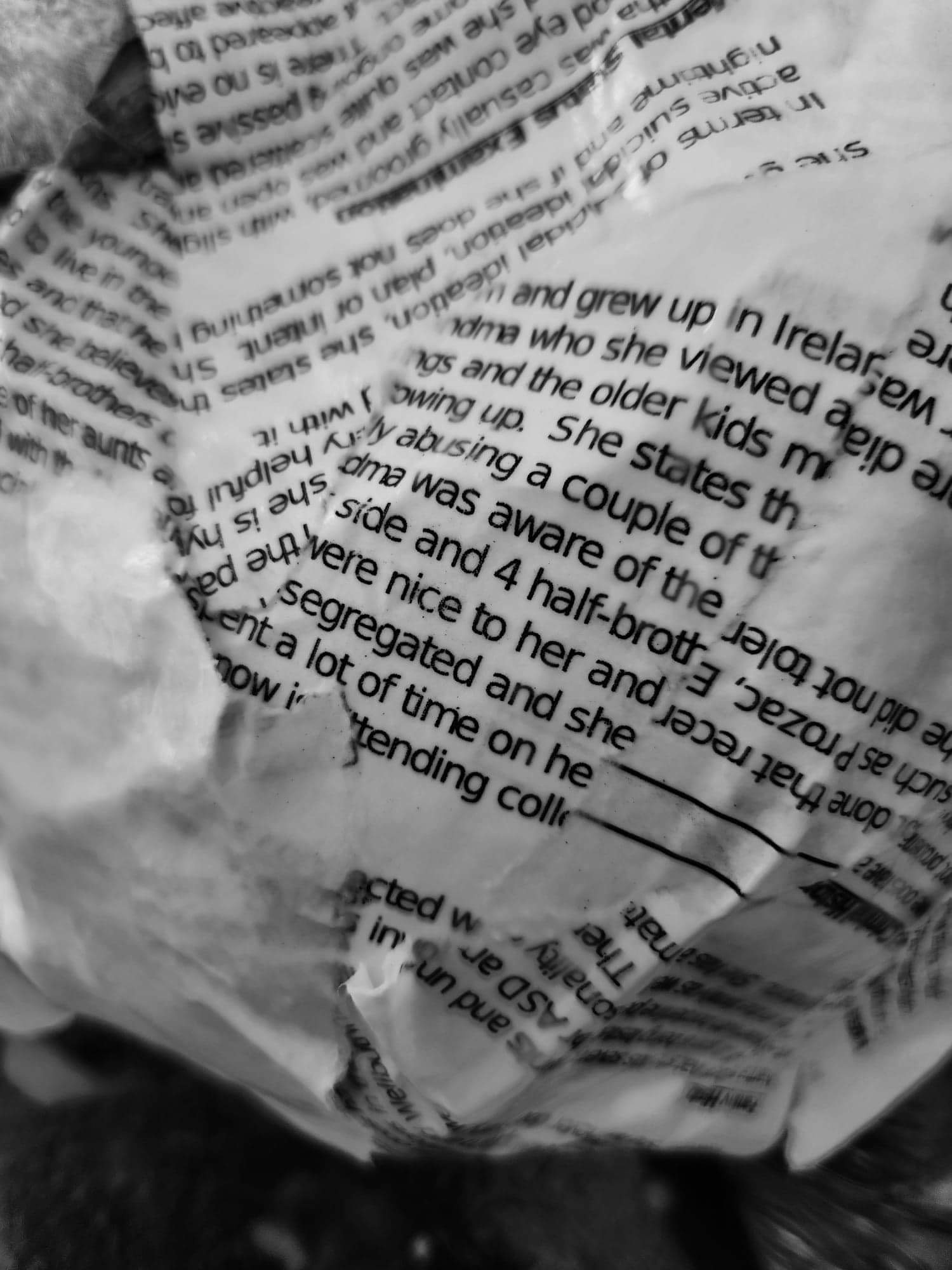
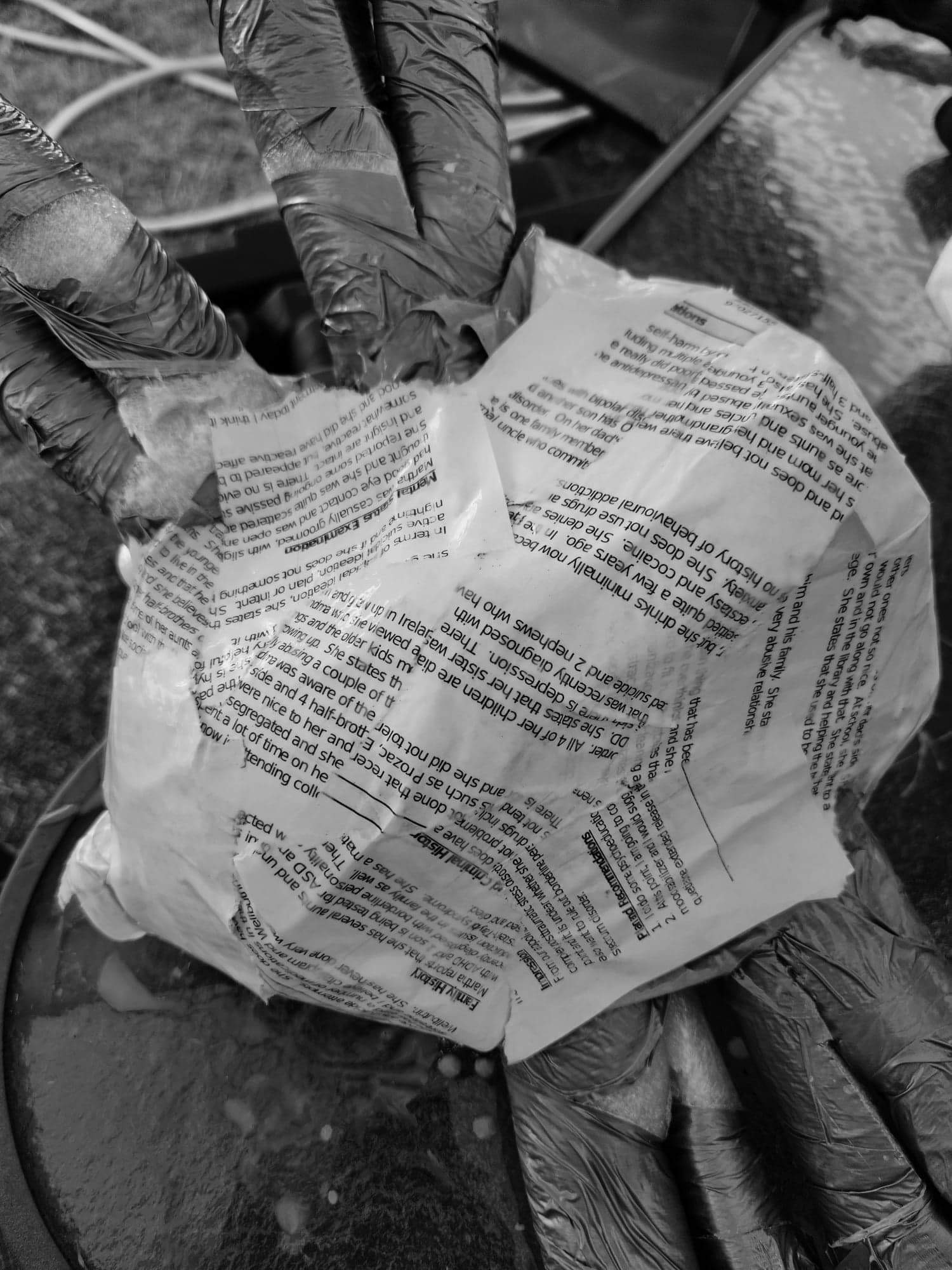
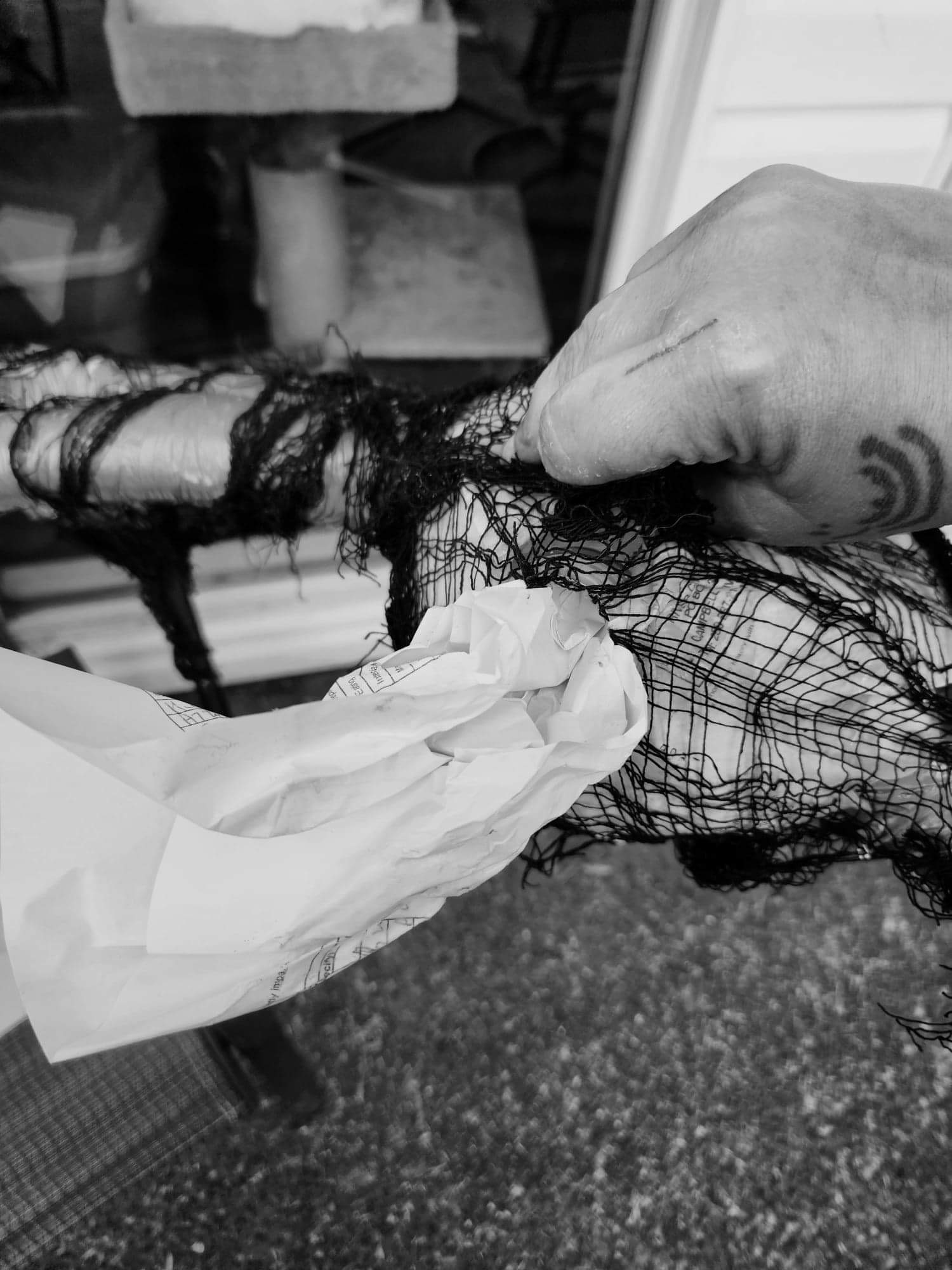
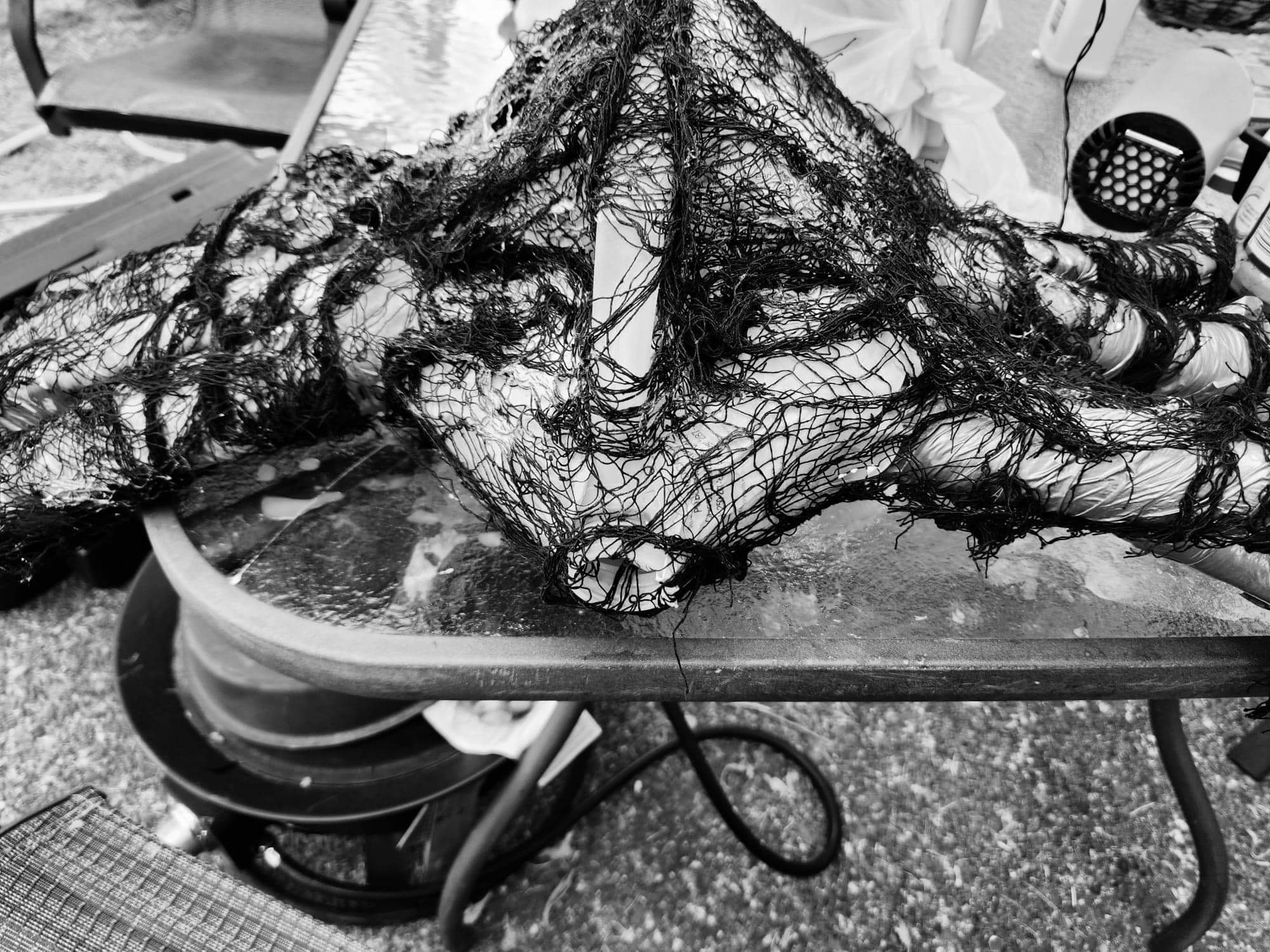
Finished piece – “yes Danzig”
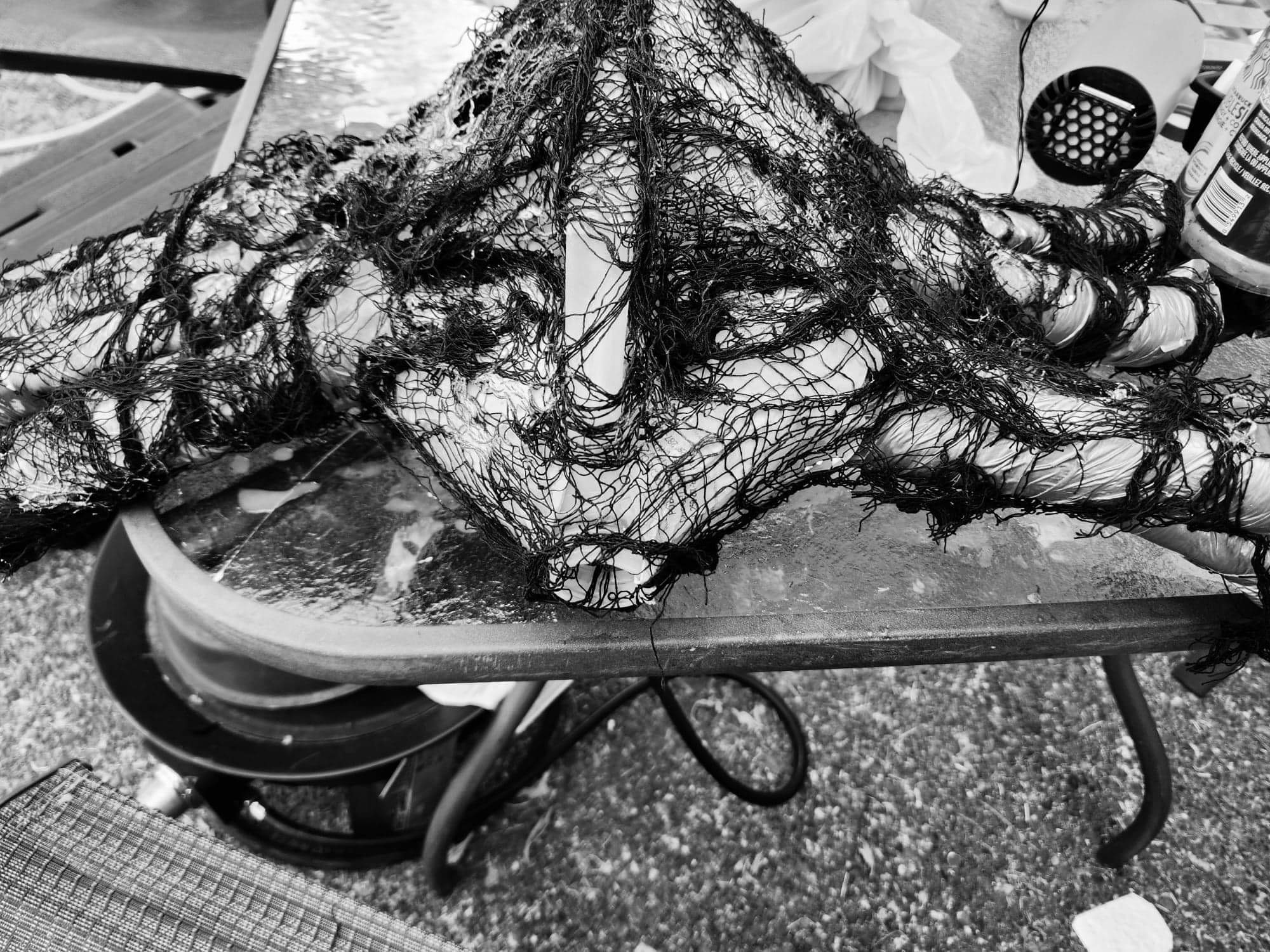
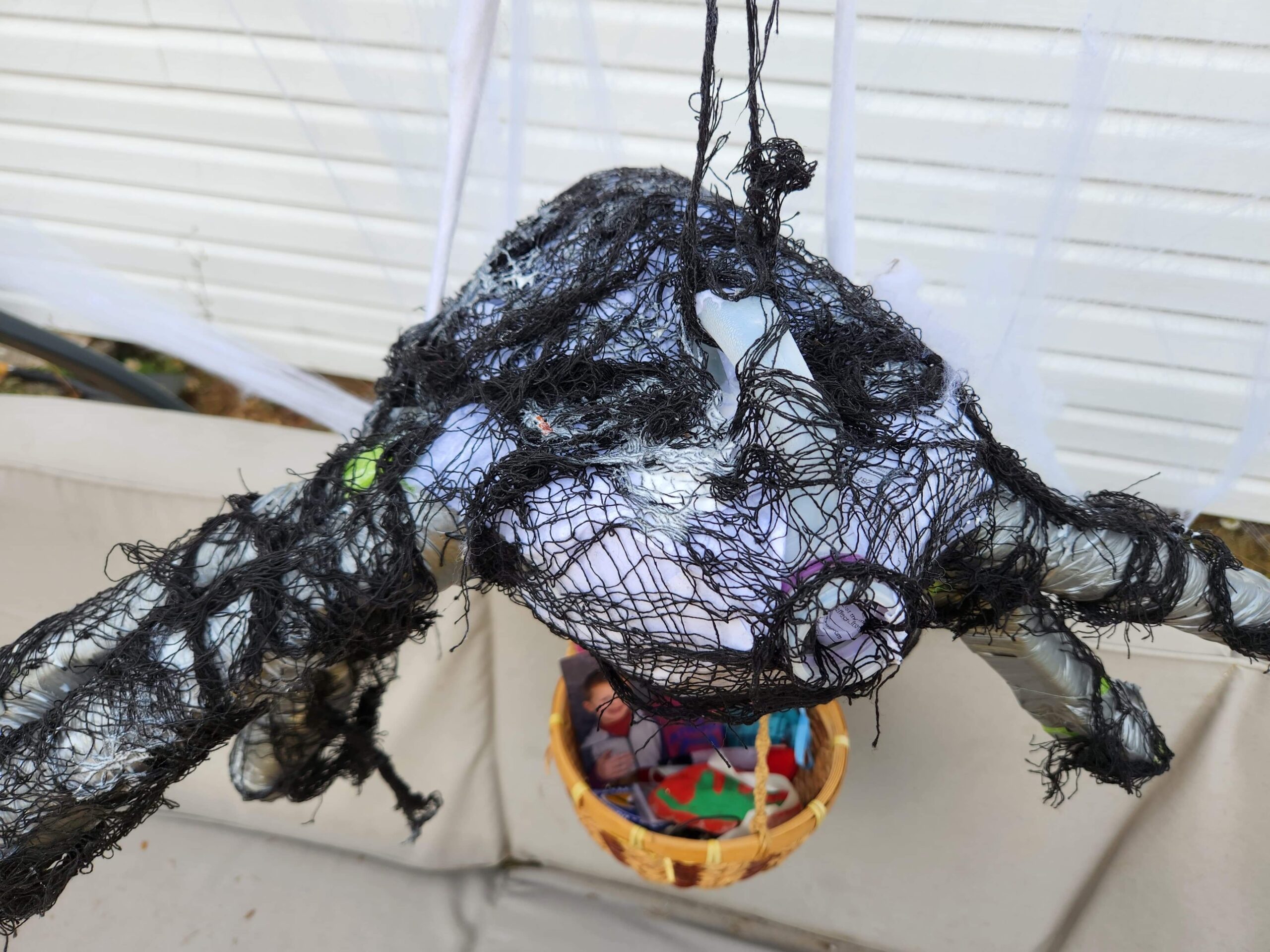
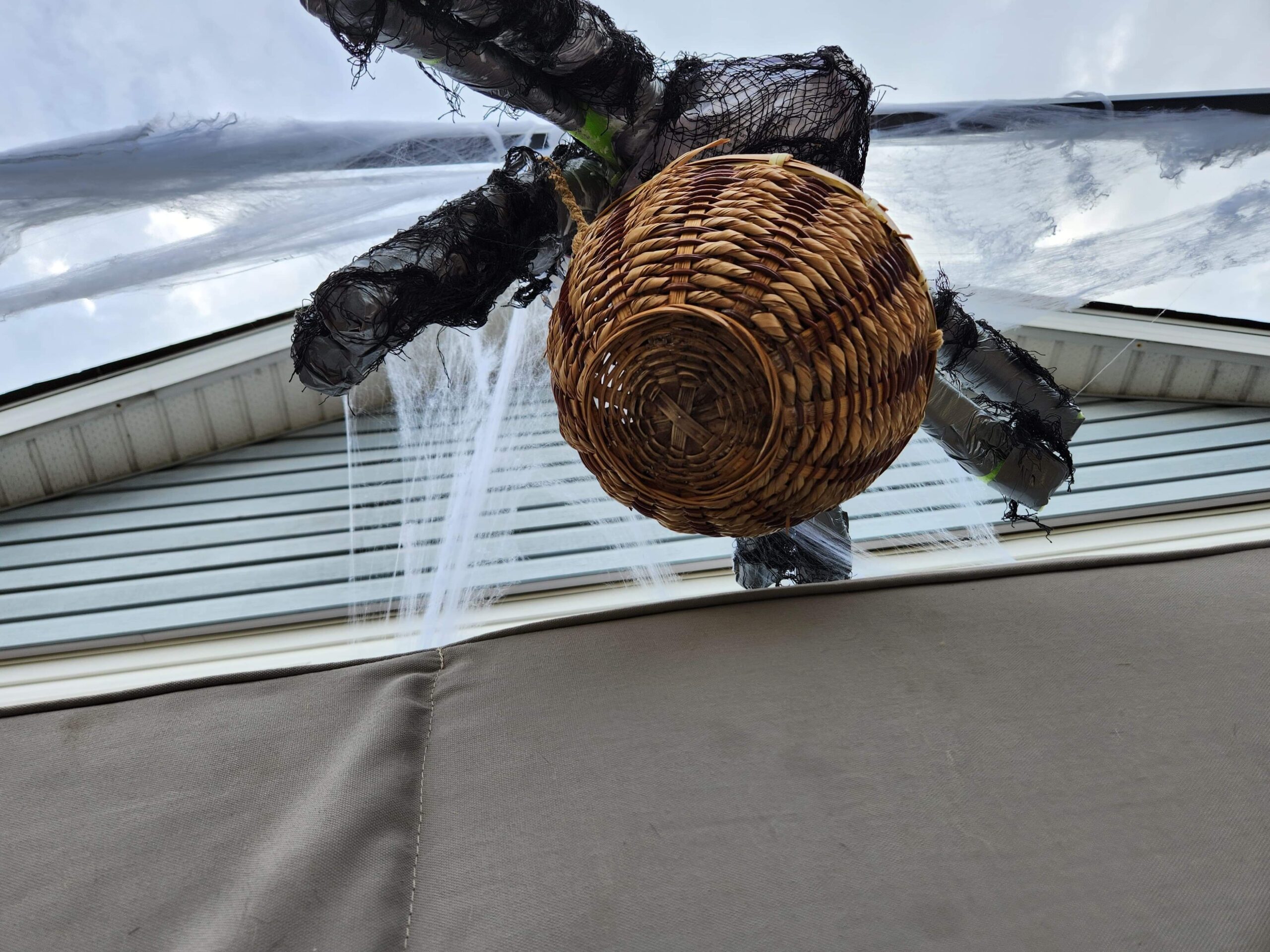
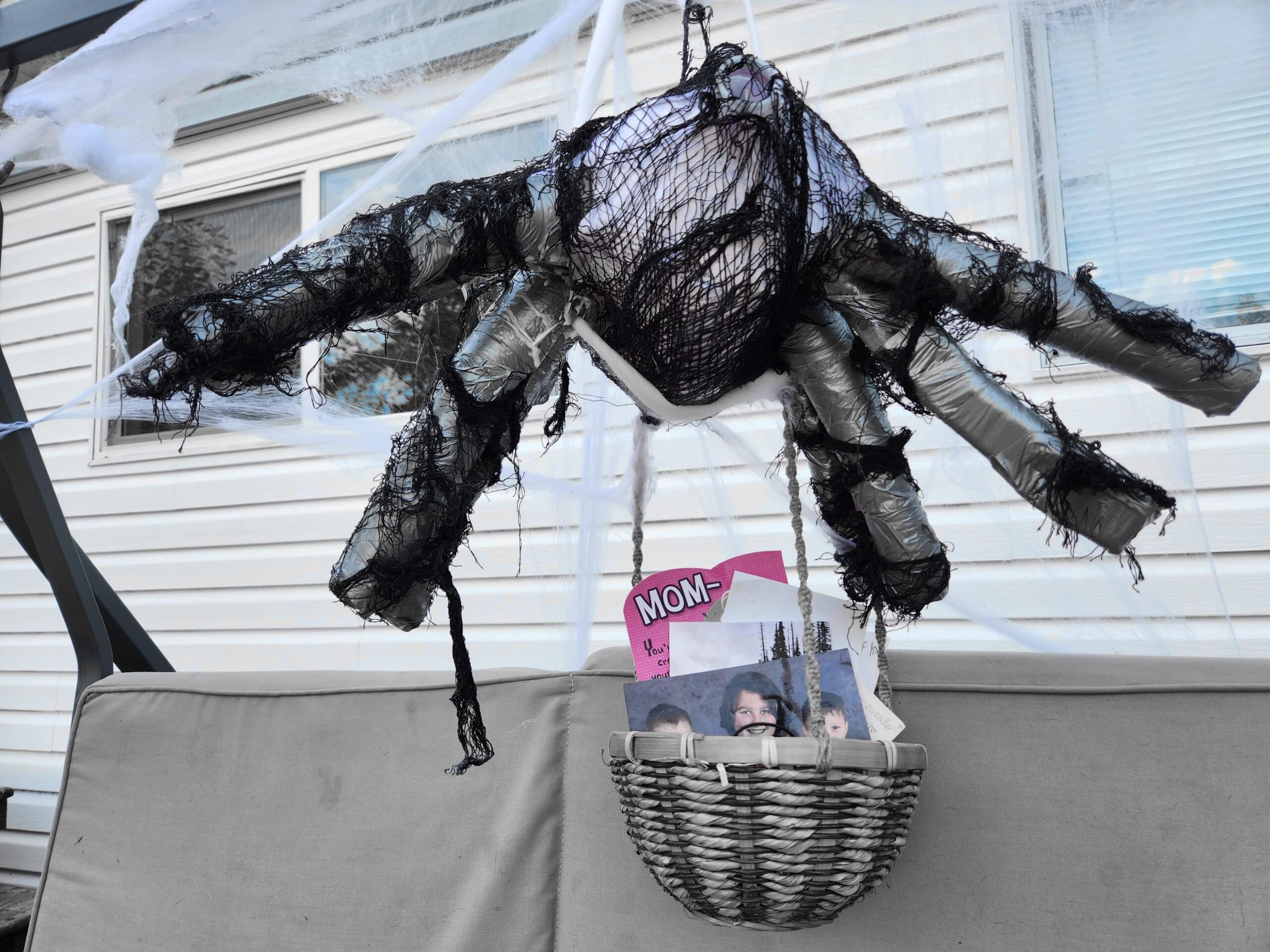
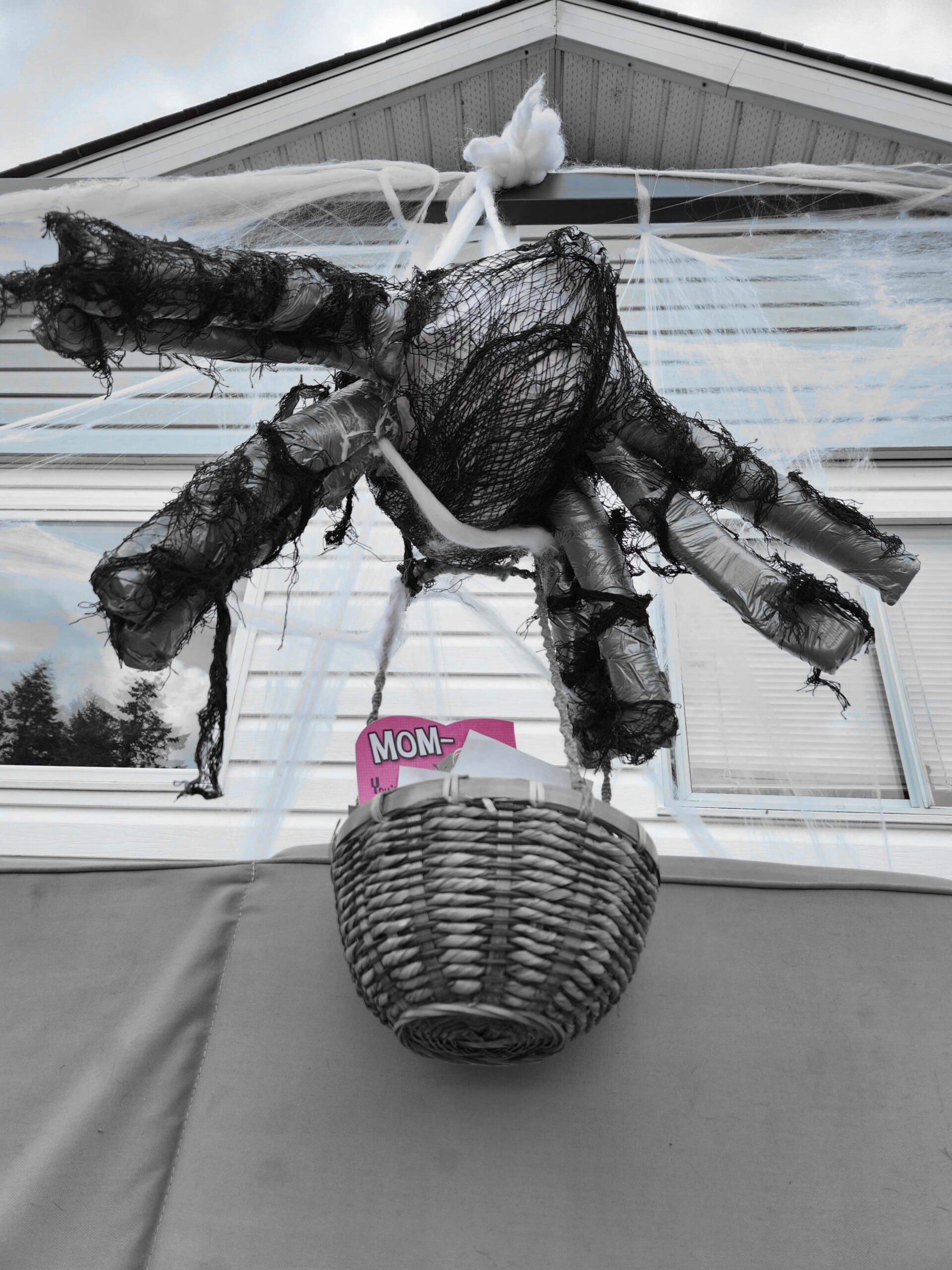
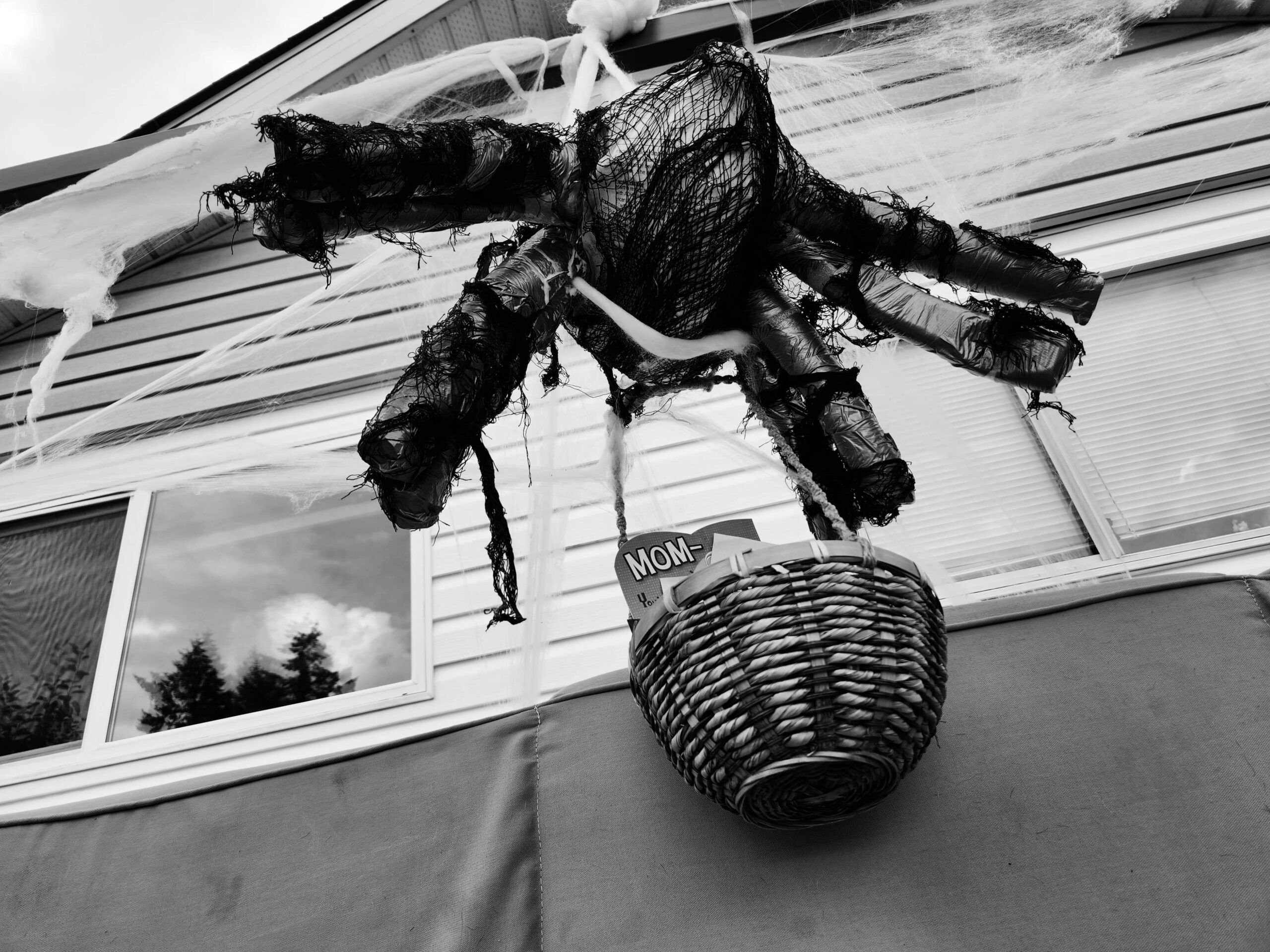
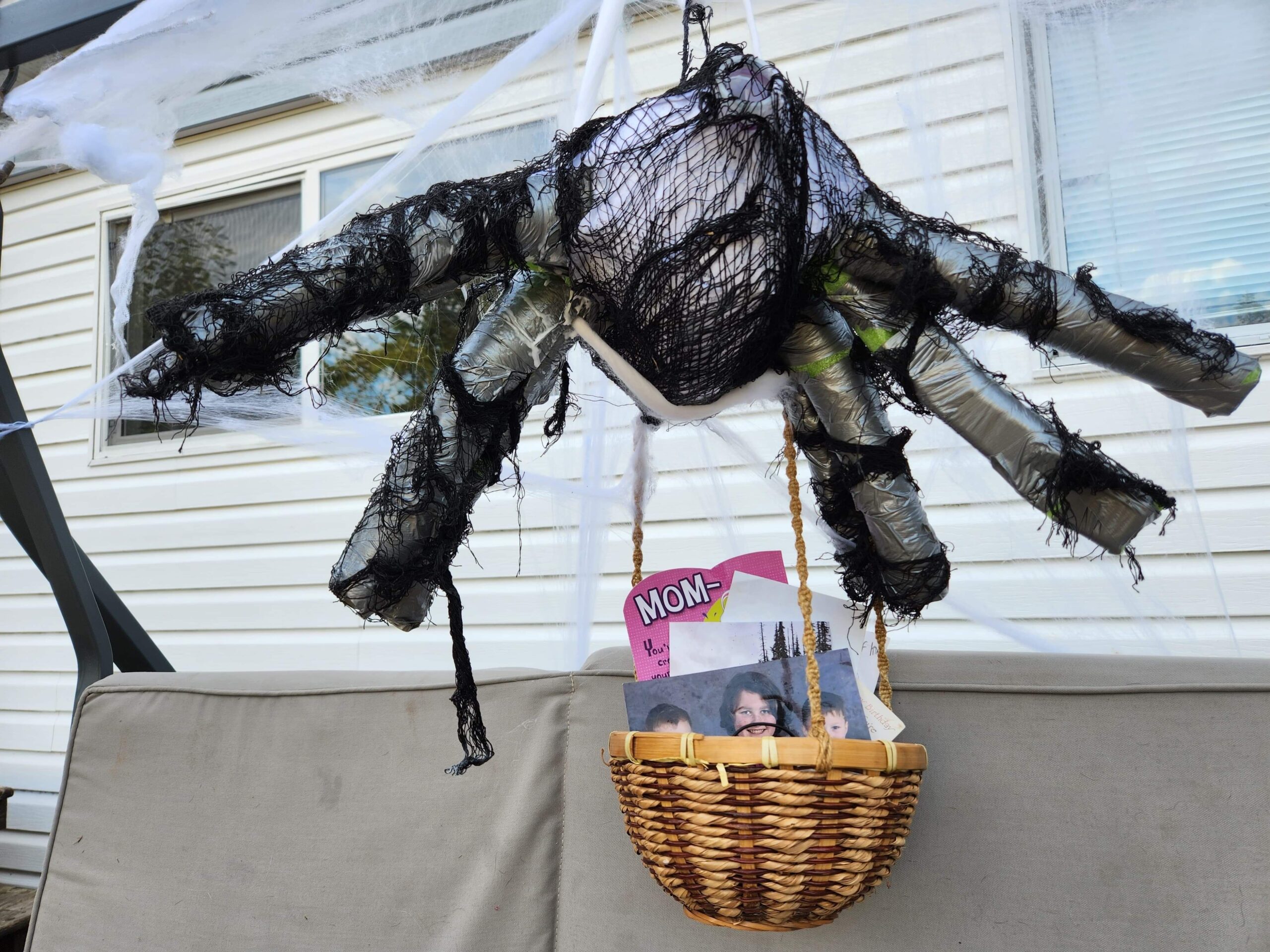
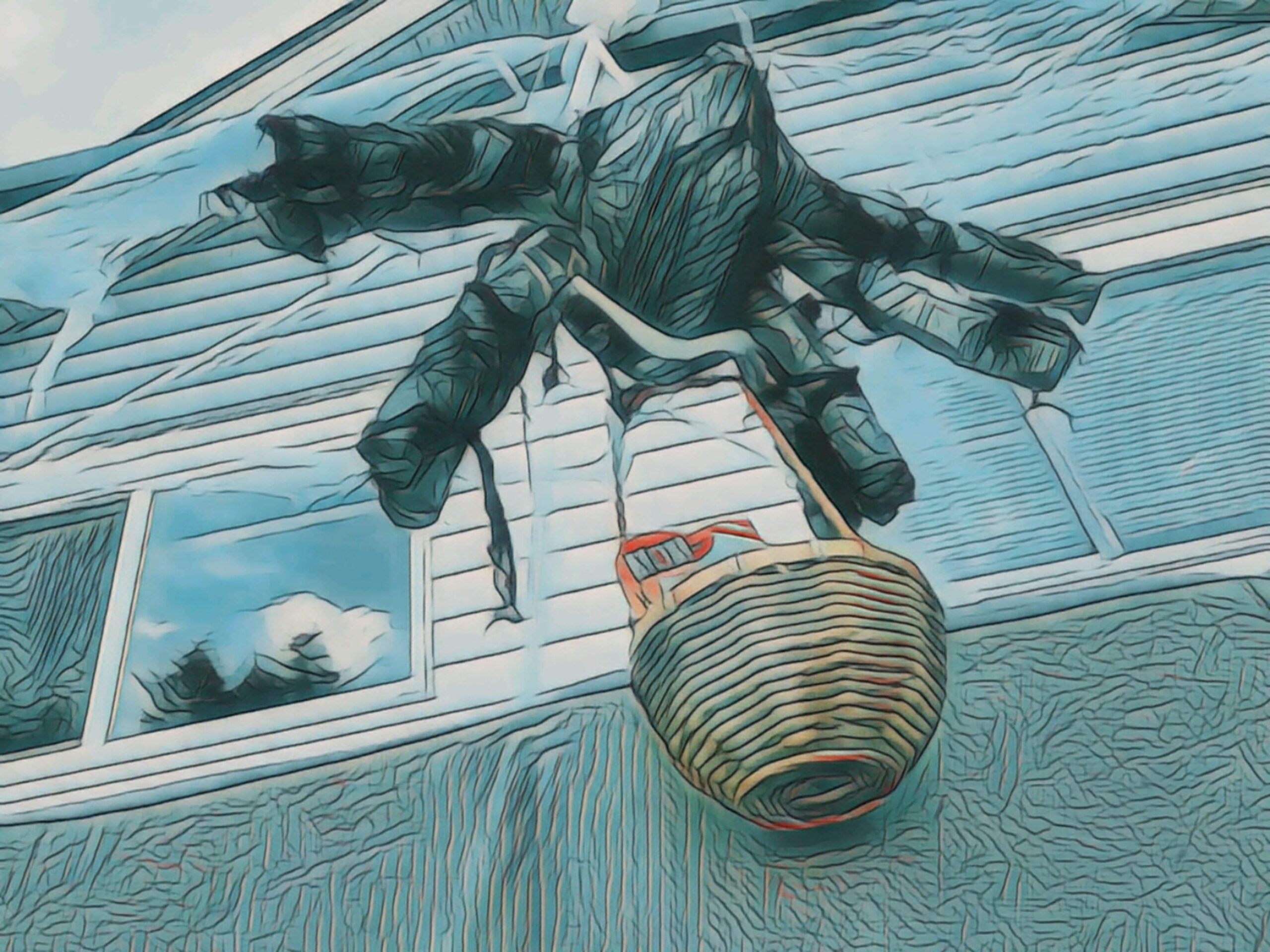
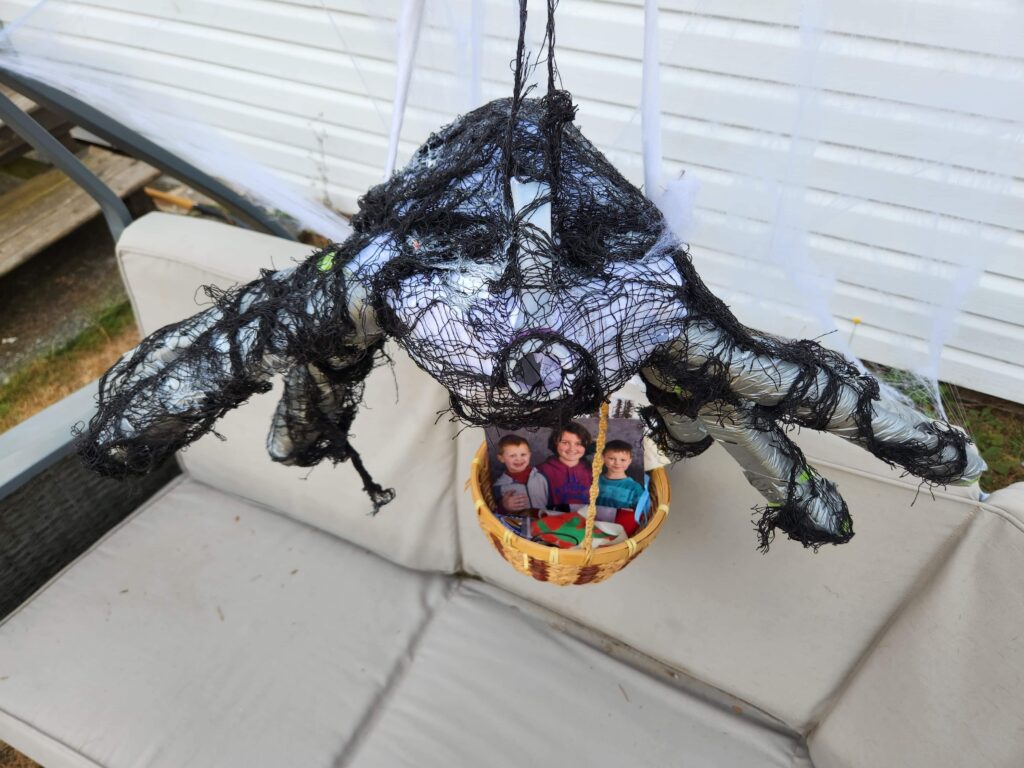
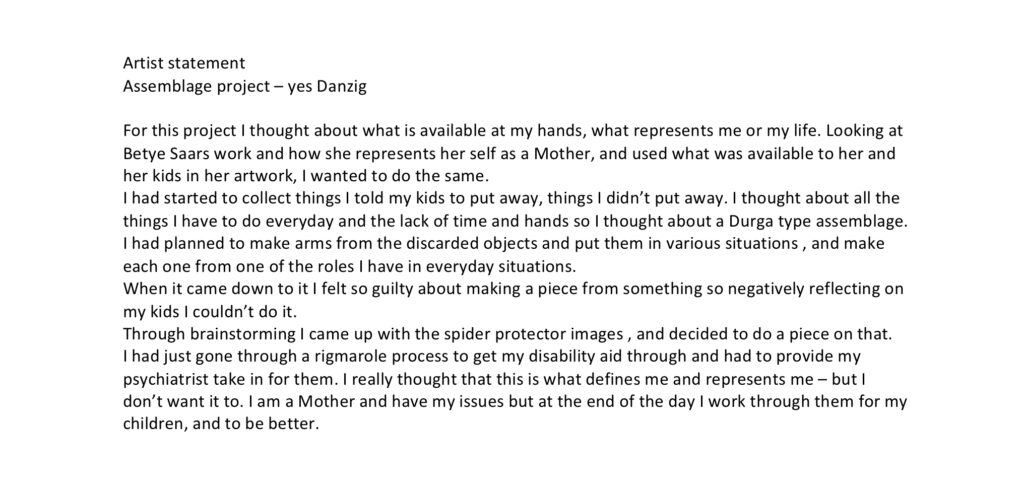
Artist Talk -Amber Morrison Fox
Guest Artist Reflection
While at the artist talk this week take notes particular artworks and concepts that stood out for you. This reflection can be written in a causal blog style, as if you are having a conversation over a favourite bevy with a friend. The intent is for you to practice engaged reflective listening. The written reflection should be 10-15 sentences.
- Who is the speaker, what type of artwork do they make.
Amber Morrison Fox. She is mainly a digital creator but makes watercolour images also. She is the creator and senior editor for “sad girl review” – and online Art and literary review magazine.
- How did the artist speak about their work and their creative process.
Amber presented her work by going through her webpage and discussing her various projects and how they came about.
- What artwork, concepts or ideas did you connect with, or if you did not connect with any why?
I don’t get a lot of the digital media work or gaming references as I don’t game lol, so a lot of it went over my head. I was really interested in her ideas behind sad girl review and her connection with the various contributors she had made. It was interesting to see how she developed her projects and worked with the areas history or knowledge to create her pieces.
- Did you learn of any new ways of working, collaborating and/or researching.
I really liked the video work she did, the gaming is not something I understand or connect with. But her watercolour pieces are a really nice direction and something tangible that could be used for brainstorming for instance.
- Did you learn of any new technical studio applications?
As I said, the gaming went totally over my head lol , but the process and visual thoughts she represented really made me think about side art produced from it.
- Did you learn of creative opportunities that the artist utilize – grants, residencies and/or exhibitions.
She spoke about different projects and grants she had accessed and showed some of her work she has in for instillations , and who she has applied for .
https://sadgirlreview.com/sgr-issue8.pdf
Collab questions
question sheet from Amber Morrison Fox lecture
NIC campus Comox
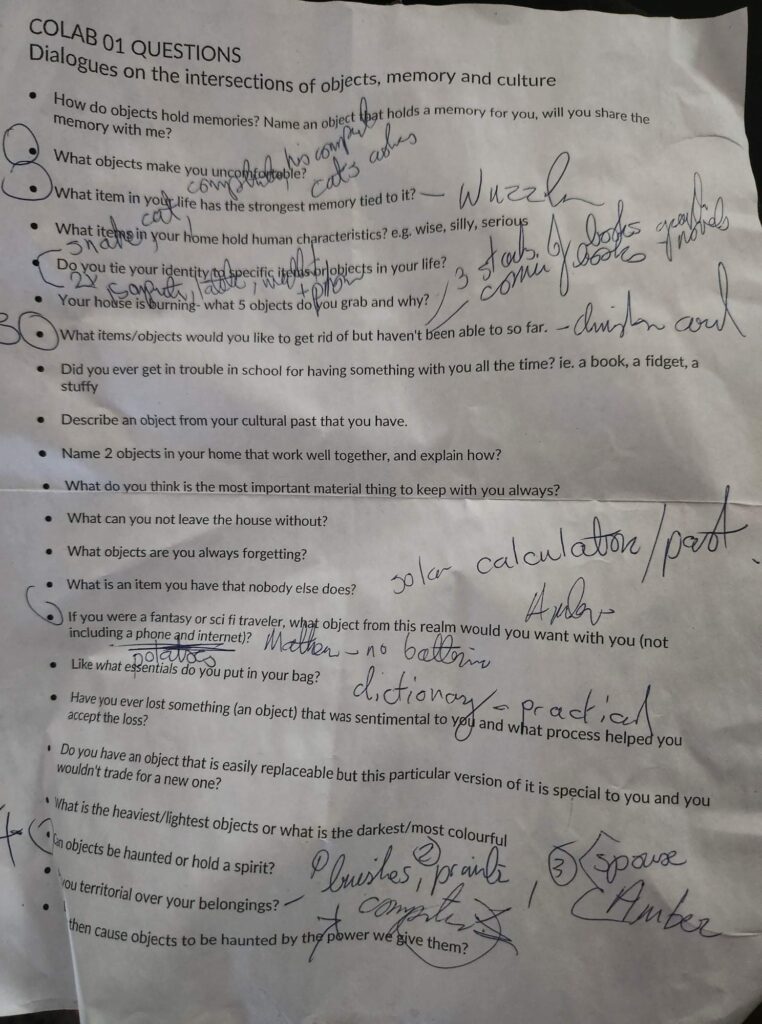
Are you territorial over your belongings?
Answer 1: over my spouse lol
Answer 2: my printer and my computer
Question 2- what object from this realm would you want with you if you were a scifi traveller?
Answer 1: potatoes/dictionary lol
Answer 2: solar calculator
LAB 03 THE WALK
LAB 03 The Walk
The intent of this LAB is to take your senses for a walk. The questions below are intended as prompts to bring you closer to a particular sense.
CREATIVE PROMPT
Take a walk and follow these Creative Prompts
Be sure to take your time at each stop contemplating how you interact with your surroundings.
- PLACE: Situate to the place that you want to explore for this walking lab. Record the following items:
- Where is the location, (country, city, street, can you not the latitude and longitude?
50th parallel, beach front
- What is the place, (describe: a bustling shopping mall, a quite hiking trail by a stream)
It’s a point marked and observed to be the 50th parallel on the earth points. We are on the beachfront beside the sculpture.
- Why did you this place?
My sister is visiting from Merritt . This is where our Dads ashes were scattered and his bench is here.
- UP + DOWN perspective:
Take time to look downward (Take 2 interesting photos – change angles and perspectives).
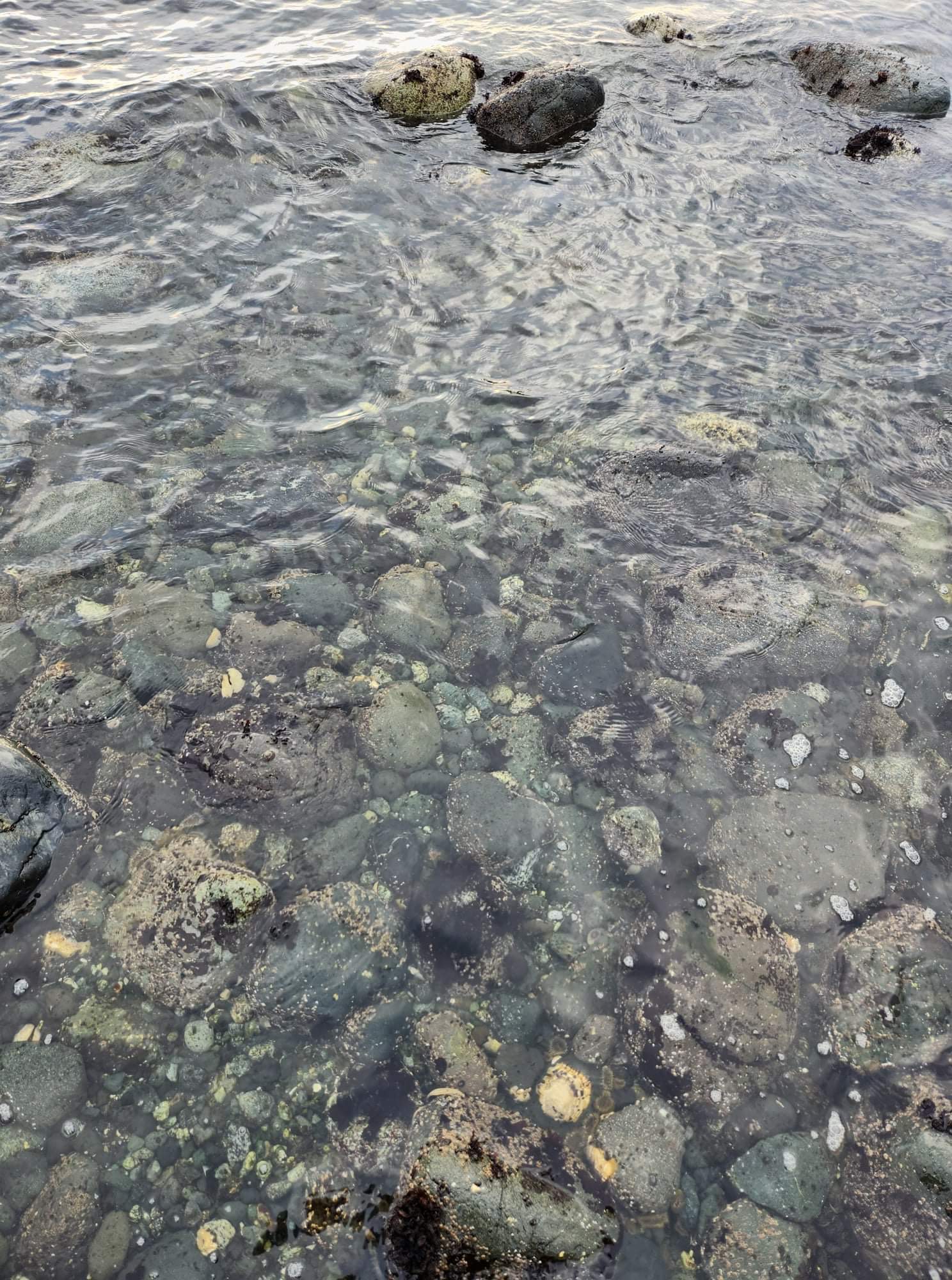
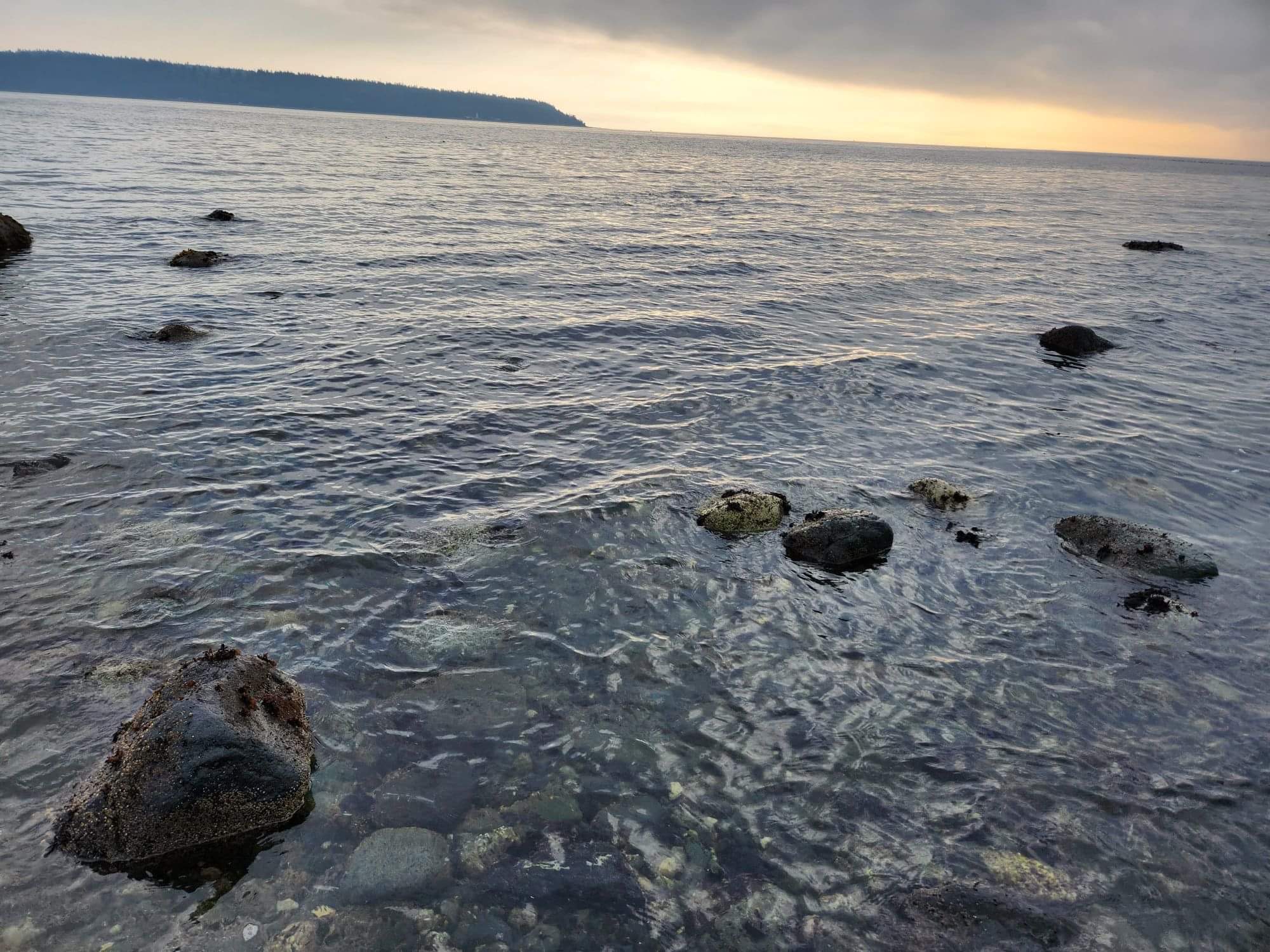
Take time to look upward (Take 2 interesting photos – change angles and perspectives).
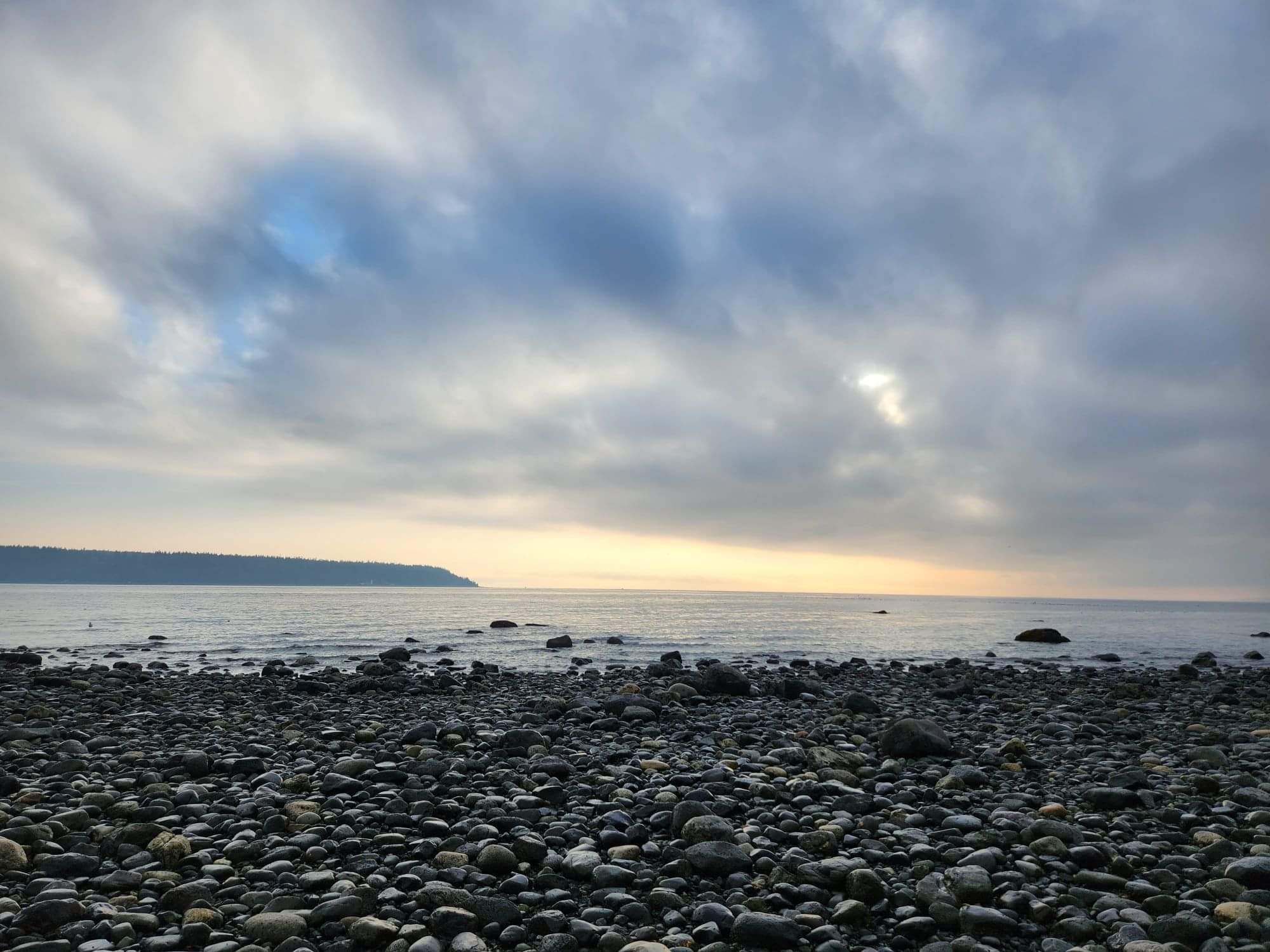

Take a photo of you that serves as a portrait but does not include your face.
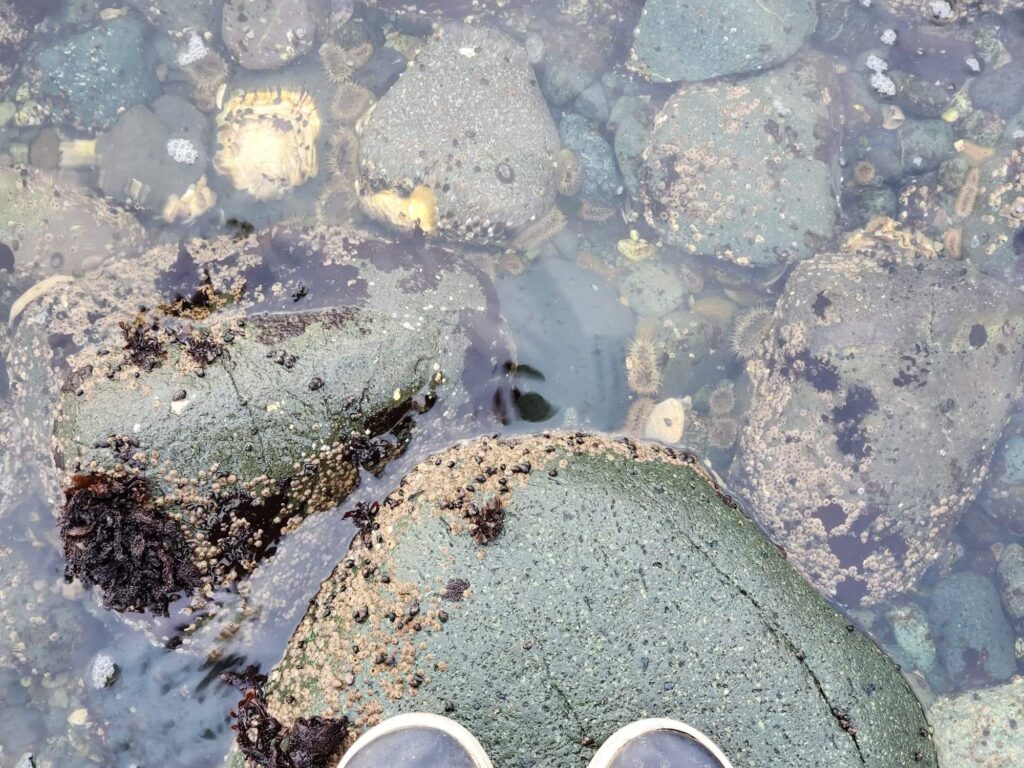
ACTION: Take 10-20 steps (or more steps), stop.
3. TOUCH: be as descriptive as possible
- Feel a surface and write down 1 sentence to describe it.
Cold and wet, suns rays warming it
- Feel a second surface and write down 1 sentence to describe it.
Slimey and watery, seaweed
- Write a sensation felt within the body and write down 1 sentence to describe it.
There’s heat in the sun and despite the noise it’s peaceful. I feel sadness and loss as every time we are here we are reminded of my dads passing and our loss.
4. SEE: be as descriptive as possible
- Describe a colour and texture of an object – do this for 2 objects
Seaweed- , round, volumous, sparkly, like glass .
Feather – soft, wet, slimy, rough
- Describe the texture or colour of an object surface and cross it with another sense – do this for 2 objects
- (ie. the wetness of brown)
All the red rocks are smooth , they are mute and matte. They feel like worry stones. Red is soft and comforting.
Take a detailed photo of one element you wrote about for this section.
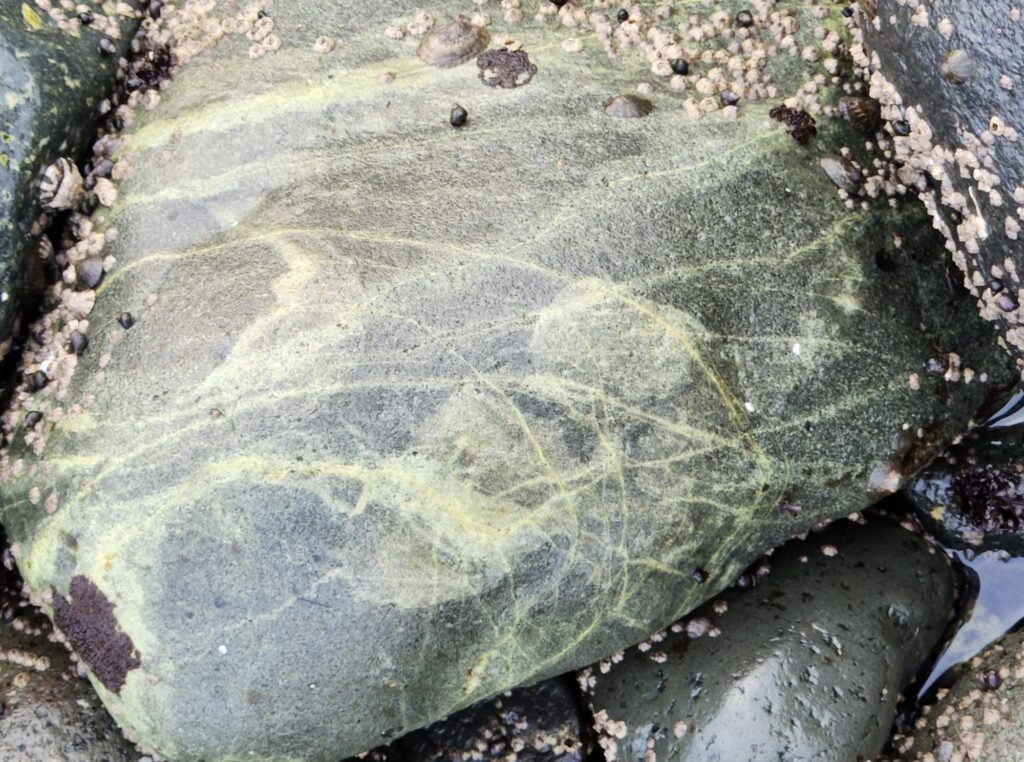
ACTION: Take 10-20 steps (or more steps), stop.
5. HEAR: take 3 minutes in stillness, with your eyes closed and listen.
- List the various sounds you hear, a minimum of 8 sounds
Birds, waves, cars, rocks , seashells cracking, porpoises splashing, building machines, people talking.
- Pair each sound with 1-2 descriptive words
Birds – squawk , dictating . Waves- momentum, consuming.
- Doodle on a piece of paper (lines, marks, dots) in reaction to a sound – label the sound(s) you focused on. Note how long you doodle for 20 sec, 2 minutes.
I can’t do this part, my brain just doesn’t process sounds to paper I can’t separate each sound individually or try to recreate it .
- Take time Listen to your breath. Write words to describe it.
Hot, deep, holding in, heavy, sad, nasal, repetitive.
ACTION: Take 10-20 steps (or more steps), stop.
- SMELL close your eyes and take a deep breath.
- Write 2-3 descriptive words to explain the smell of this place
Ocean, damp, cold
- Write 2-3 descriptive words to explain the scent of a specific object in that space.
Pungent, consuming, dampness
ACTION: Take 10-20 steps (or more steps), stop.
- TASTE be as descriptive as possible (this one will be explored in your imagination:)
- Write 1-2 sentences that if you could taste this sense of place, how would you describe it?
It tastes like if you left a can of tuna out in the sun for too long, then put it in a freezer and made someone close their eyes and lick the inside of the can till it melted.
ARTIST RESEARCH 02
Pipilotti Rist
Pipilotti Rist was born in 1962 in Rheintal Switzerland, and remains in Zurich and in the mountains of Switzerland today.
She created her Artists name in 1982 from her childhood nickname of Lotti with the first name of a Swedish children’s character- Pippi Longstockings.
She studied Art in “Hochshule fur Angewandte Kunst” in Vienna from 1982 to 1986, then the “Schule fur Gestaltung Basel” from 1986 to 1988.
She’s a multimedia Artist who works with video and installations.
Ever is Over All , Pipilotti Rist
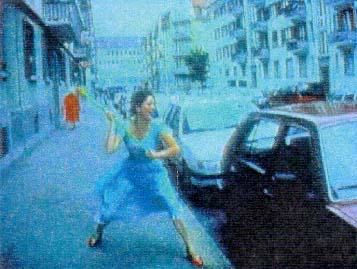
Pipilotti Rist, «Ever is Over All», 1997
Videostill | © Pipilotti Rist
Ever is Over All is an 8 minute audio video installation.
It consists of two large projections overlapping each other. On the left side there’s a woman walking down a street . She is wearing a light turquoise dress with red shoes. In her hand appears to be a bright tropical flower with a large stem.
She is cheerful in appearance and happily skips swinging the flower. Without skipping a beat with the same motion and momentum she swings the flower at a car to her left (our right), smashing the window. She then proceeds to do the same to the cars she passes. While on the other screen we see lush countryside and tropical flowers. Walking behind her and then passing her is a female cop, who salutes and smiles as she passes her. A man passes her staring in confusion.
It seems to denote feminist anarchy, with the Artist(the woman in the video) happily swinging the phallic like flower into the car windows. Her relaxed and carefree attitude makes us the viewer eager participants in the destruction. She is living out our secret fantasies and we’re here for it.
It reminds me of Bjorks music video for “it’s oh, so quiet” with her skipping happily through the streets. It definitely sits in the realms of pop culture.
She talked about her relationship with this aspect in an interview with Hans Ulrich Obrist;
“In my village in Switzerland I had a small window on the art world through the mass media; through John Lennon/Yoko Ono I moved from pop music to contemporary art.”
The audio and visual unification yet juxtaposition in this piece is hypnotic. I could watch it again and again and would love to see it in person as I’m sure the video does it no justice compared to being emmerced in it.
There is an obvious homage to this video in Beyoncé’s music video for “hold up” , which I’m sure the Artist enjoyed.
To her it seems conceptual art and pop culture/ music videos go hand in hand. In an interview with Christian Lund she states her purpose is to “make the viewer identify movements and space, to mark out trajectories of social cultural forces that string us up like puppets, and to carve out possibilities of alternative movements” .
I chose this Artist as when I googled her name he most vivid incredible images sprung up all over the page, bright neons , shapes and images.
What I have taken from this is to be a part of my Art, envoke my experiences and channel them through my eyes outwards instead of trying to represent what – I think people want, and what I think I want to show.
https://theconversation.com/heres-looking-at-pipilotti-rist-ever-is-over-all-87077
https://whitehotmagazine.com/articles/pipilotti-rist-at-new-museum/3559
PROJECT 02 BRAINSTORMING SESSION
Task 1
BRAINSTORM AN IDEA USING SUBJECT MATTER as the starting point. Choose a subject matter the excites your creativity, such as identity, portraiture, gender, story telling, cartography, ocean tides, video games … there are no limits.
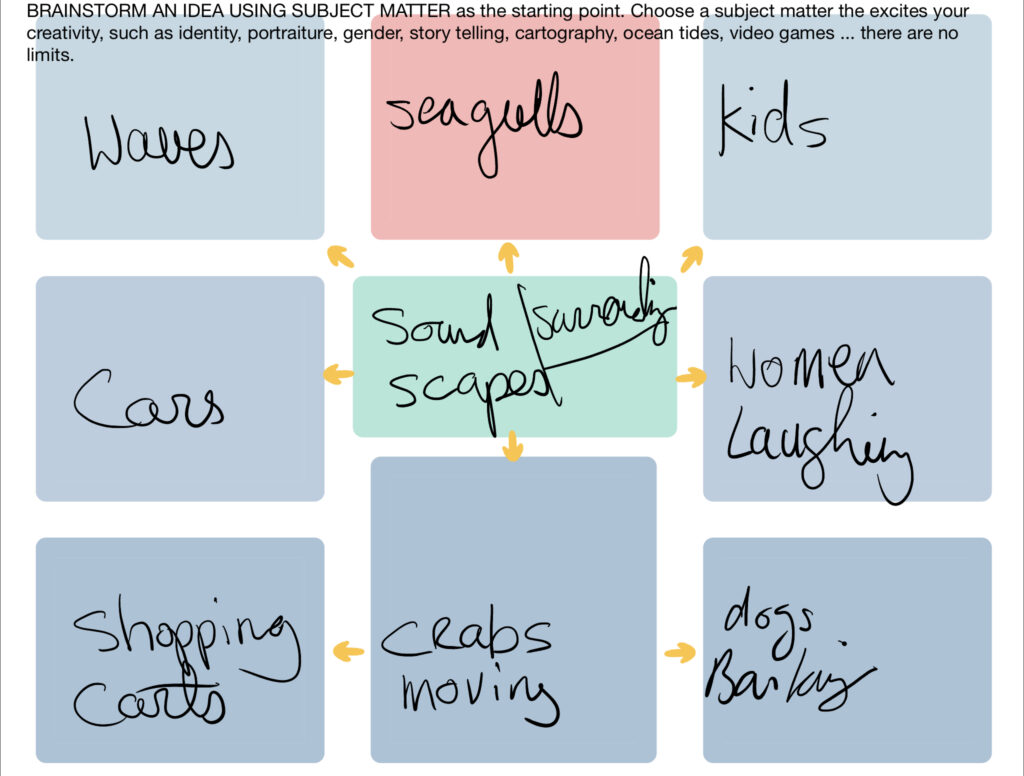
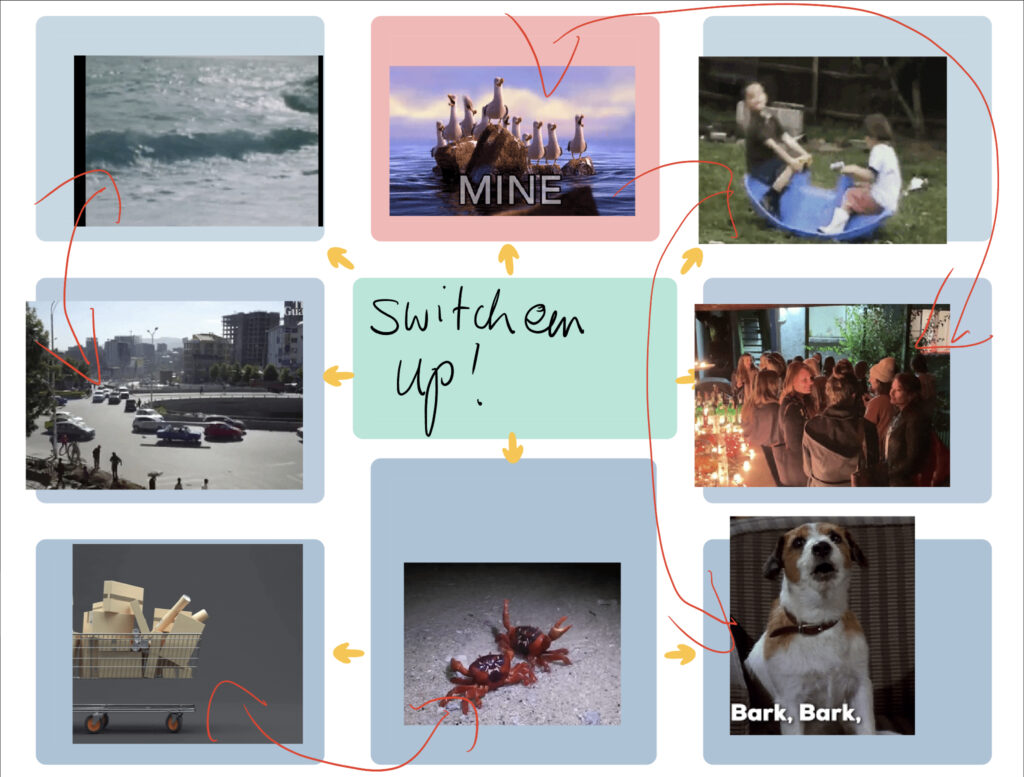
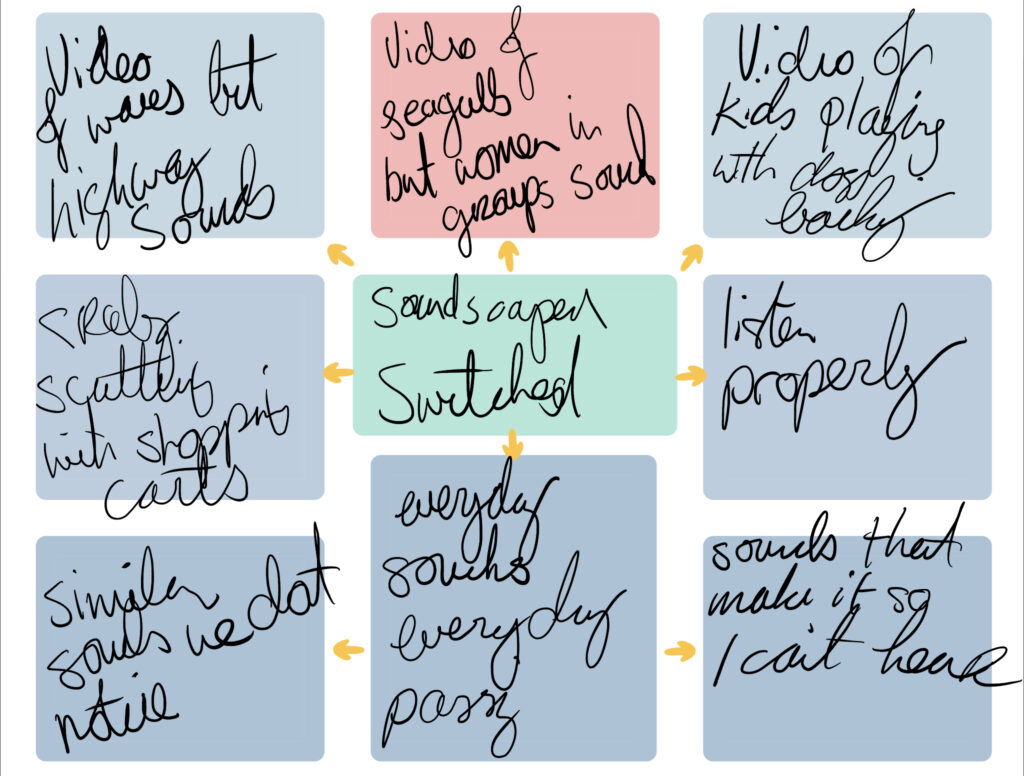
Task 2
BRAINSTORM AN IDEA USING ART MEDIUM or art technique as the starting point. This could be a technique that has always intrigued you and wanted to learn, or a technique you think conceptually works well with the project parameters, or a technique that you relish and want to attain more experience in. It can be anything like stop motion video, or installation, or working with food as an art, or performance art. Now brainstorm 2-3 different projects with that medium.
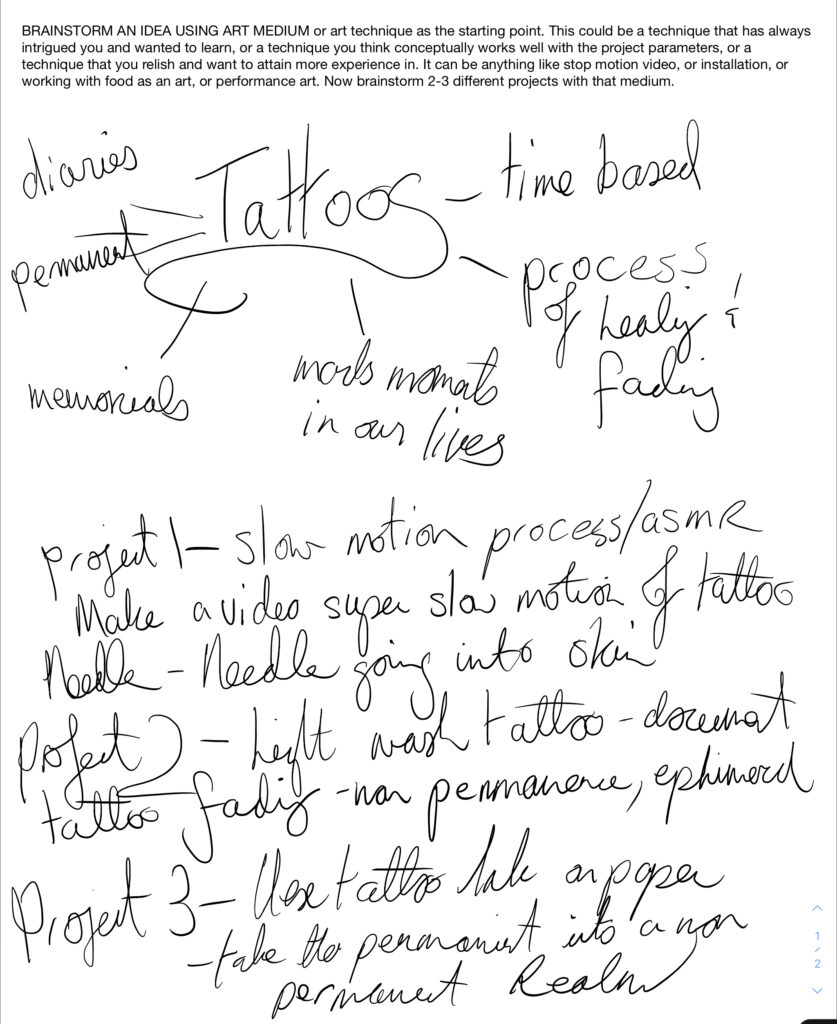
Task 3
BRAINSTORM AN IDEA WITHOUT LIMITS! For this brainstorming task you have no limits in what you can create, it could cost millions (or billions) and you have access to studio assistants that can help you realize your project technical feats.
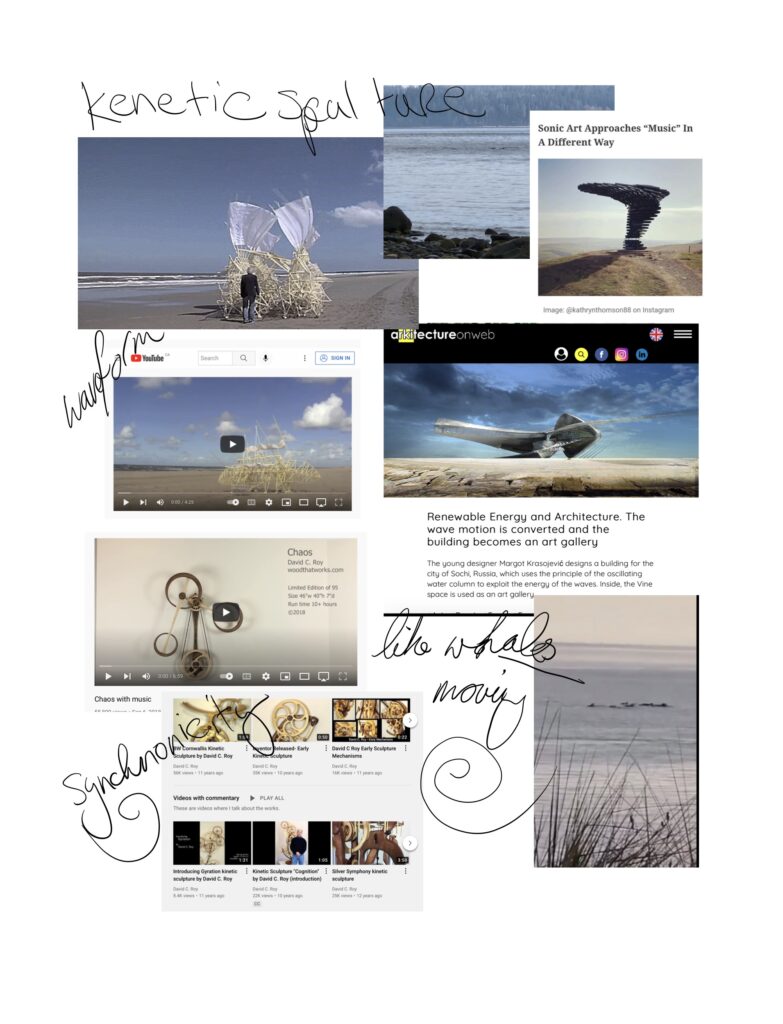
Time based project parameters
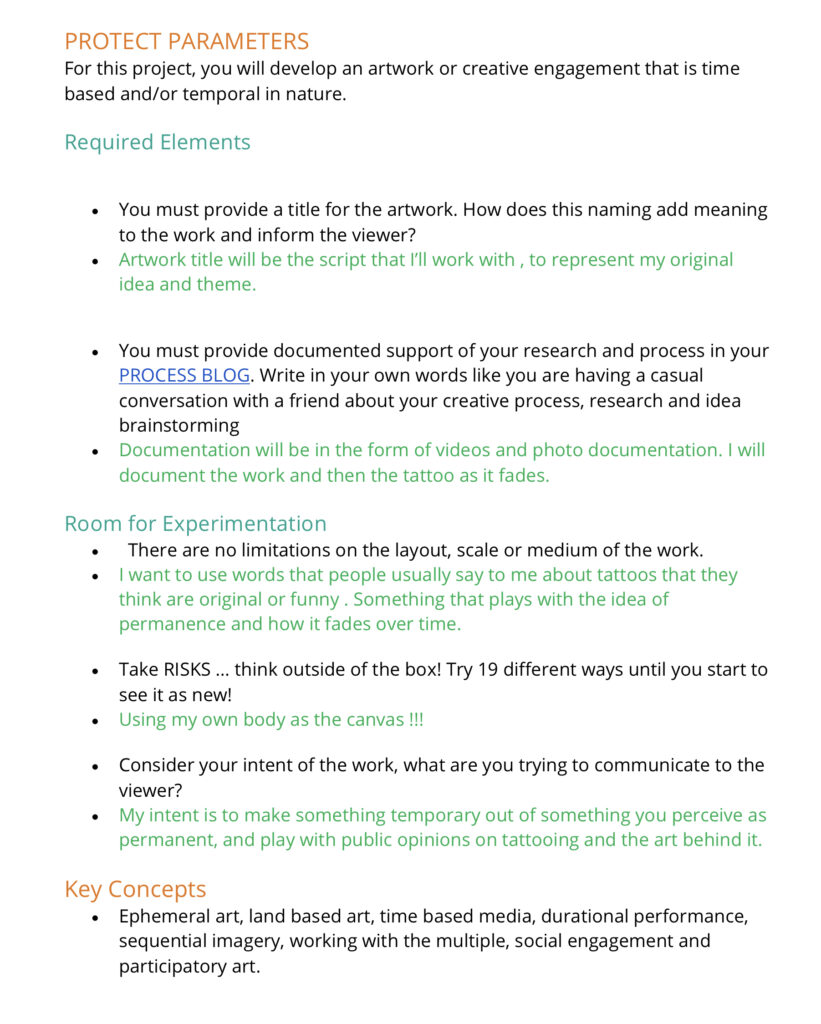
Guest Artist reflections – Aimèe Henny Brown
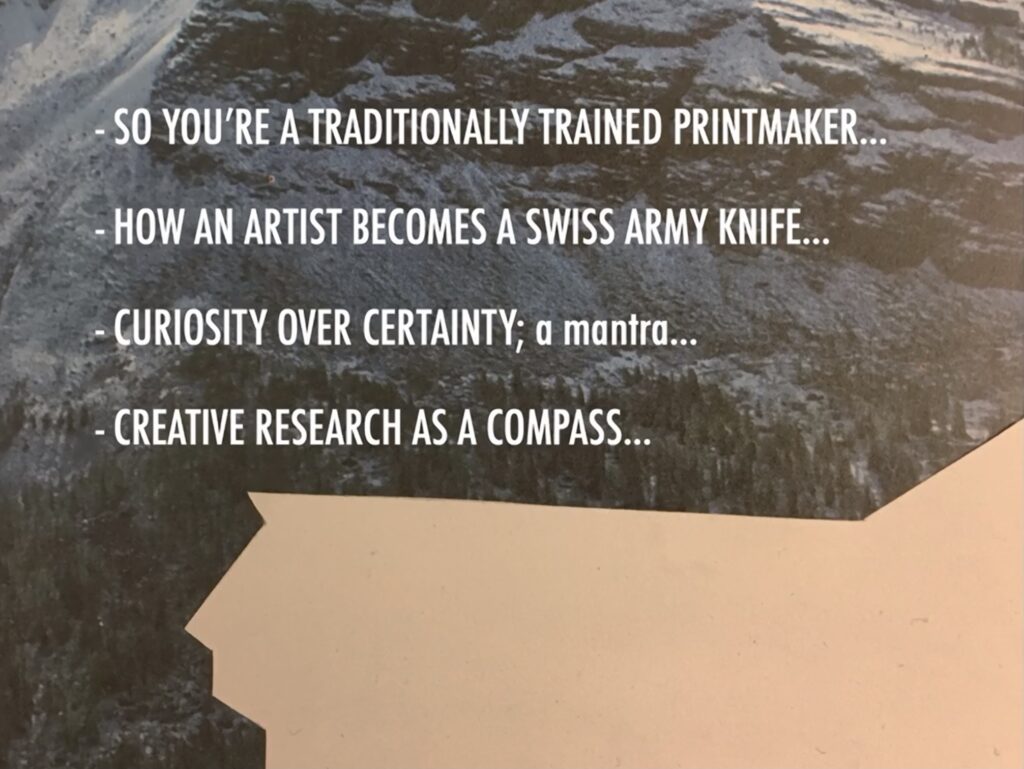
Guest Artist Reflection
- Who is the speaker, what type of artwork do they make.
The Artist is Aimée Henny Brown, she produces multimedia works which include collage and audio visual work.
- How did the artist speak about their work and their creative process.
She immerses herself in her surroundings and concepts and brings her physical body through the places and to the people. She shows where she starts from and how she develops her process. Her webpage is laid out and created incredibly – with her research development and process added to her work which is to me is integral to this course learnings.
- What artwork, concepts or ideas did you connect with, or if you did not connect with any why?
I absolutely love her work and how she connects with places and people. Her shelter work is so incredible, how she takes the concept and blends her ideas and images.” Futur Cache IV “ is such amazing artworks. Using the two collections of juxtaposed brochures – the Cold War era bomb shelter and Survey of significant home Architecture in the West Coast style , she unifies the two perfectly into one piece.
- Did you learn of any new ways of working, collaborating and/or researching.
I had no idea what analogue collage work was. Looking at the work that was made so beautifully in the 50s it’s seamlessness is incredible. Her site specific research is insightful. Using non traditional methods of archival research and exploration of her themes really works and is something I will definitely use in the future.
- Did you learn of any new technical studio applications?
I would love to work with the collage styles she produces more, and her negative space uses are something I really want to create. She mentioned using padlet so I looked it up and am currently using it for the next project
- Did you learn of creative opportunities that the artist utilize – grants, residencies and/or exhibitions.
- She really went in-depth how she works with local groups and areas and utilises grants and funding available.
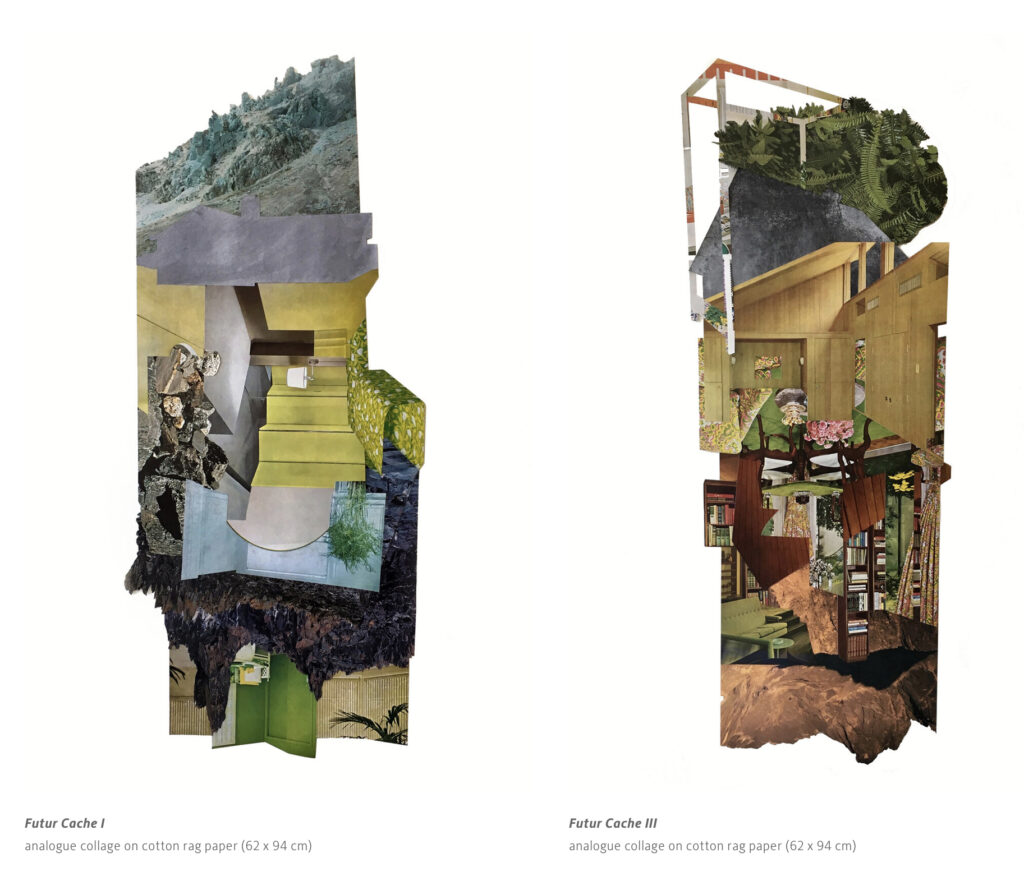
Project 02 Time based project
You know those are permanent right?
Artist statement
As a tattoo Artist I work with time and it’s concepts, permanence , memory etc all the time. I wanted to play with the idea of permanence, and what tattoos should represent. How they are viewed and what we get tattooed and it’s importance in our lives- documenting moments such as births and deaths, marking moments in friendships and life events etc.
I used tools I would use in my everyday- google for the meme image, dafont.com for the font choices to pick from , photoshop to create and blend my images.
I executed the tattoo by using a stencil machine to create my stencil. Using stencil stuff I applied the stencil onto the skin. I diluted down my black ink with distilled water until I got the desired tone. I had to use a couple of different ones as the first was too dilute.
I was inspired by the Artists that use their own bodies for their pieces to explore concepts and ideas.
Tattoos are seen as something permanent, in which we mark moments in our lives , or represent who we are and our journey through life.
I’ve tattooed memorial pieces on clients, who have died, and then used their ashes to tattoo family members with memorial tattoos for them. The passing of time and the fickleness and uncertainty of life is part of my everyday.
Choosing what you mark your body with permanently is so individual. Some chose a theme, some are sporadic and humourous.
I wanted to play with the common statement people make – “ you know those are permanent right?”
I found a common meme that everyone uses for sarcastic comments that show the stupidity behind the comments people make.
Putting it upside down on myself is an aspect of tattooing that we always work with, people wanting tattoos “for themselves” some artists won’t do it or people insist on it. Having it upsidedown in the middle of my leg is a part of the humour involved in marking people permanently and how it’s perceived.
Documenting the healing and the fading is a big part of it. How to skin reacts, how it slowly fades in certain points. The permanence and how the skin covers and heals the fresh ink is always intriguing to me. How our bodies process the trauma and regenerates. Tattoo ink sits in limbo under our skin, it’s there but not really as at any time our bodies could see it as a foreign body and react to it.
Using the video to record the needle movement and speed, slow it down to where you can see it and hear it was super interesting. Watching how the skin bounces as it permeated and carved into brings it back to the process rather than the outcome, and the ritual and essence of what we are doing, and having done to our bodies.
Phase one , research and design
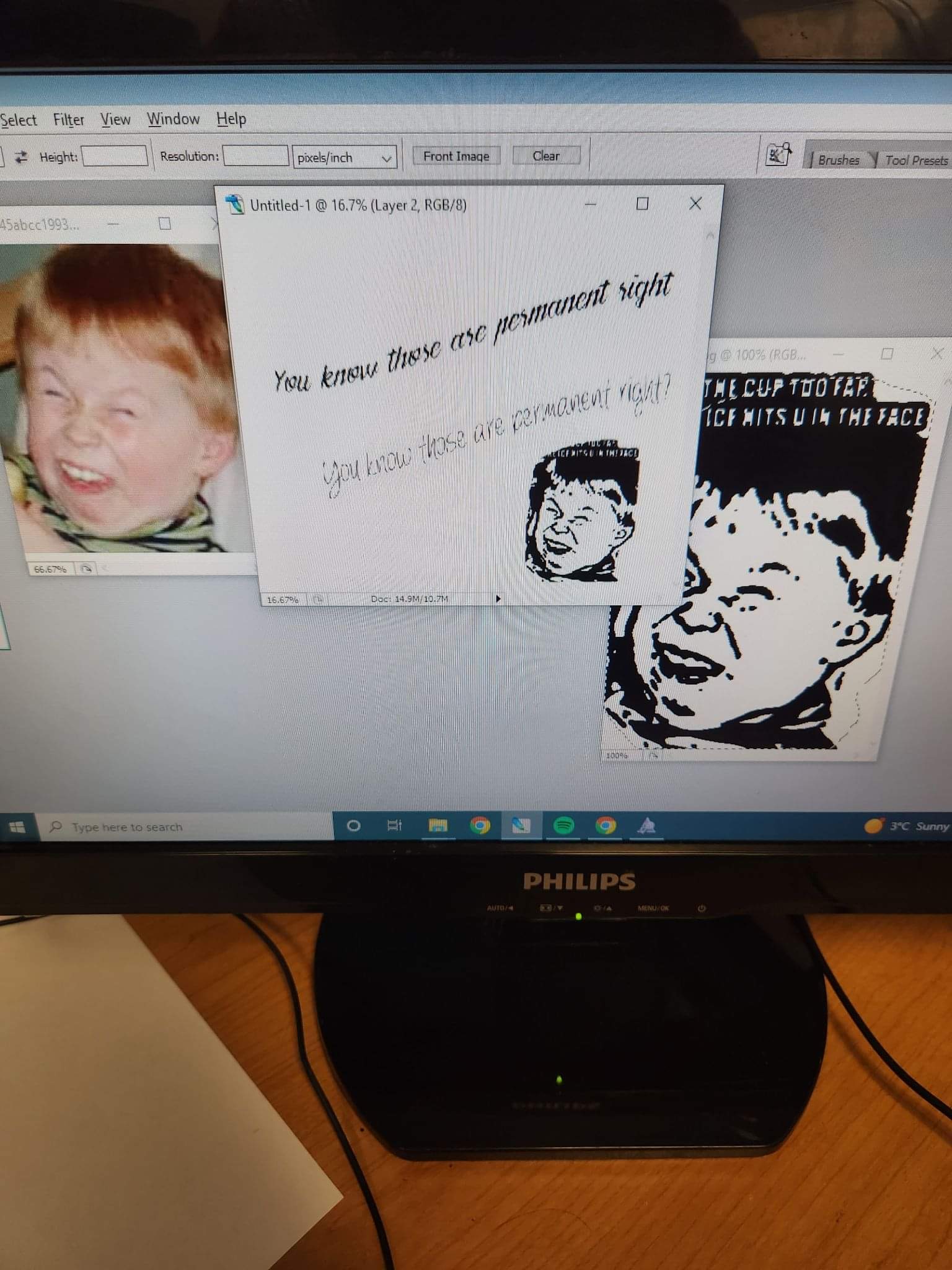
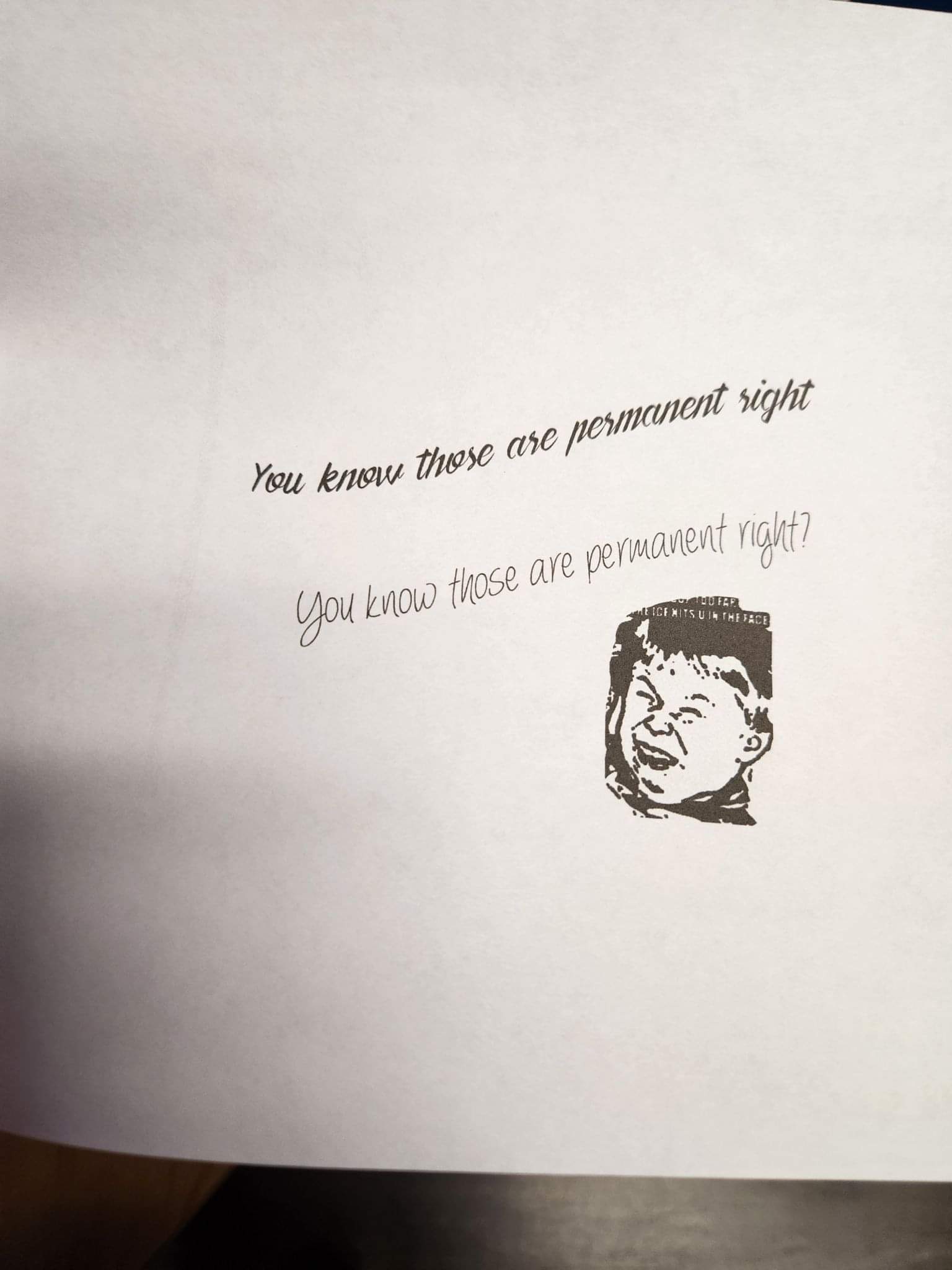
Phase 2- stencil making and execution
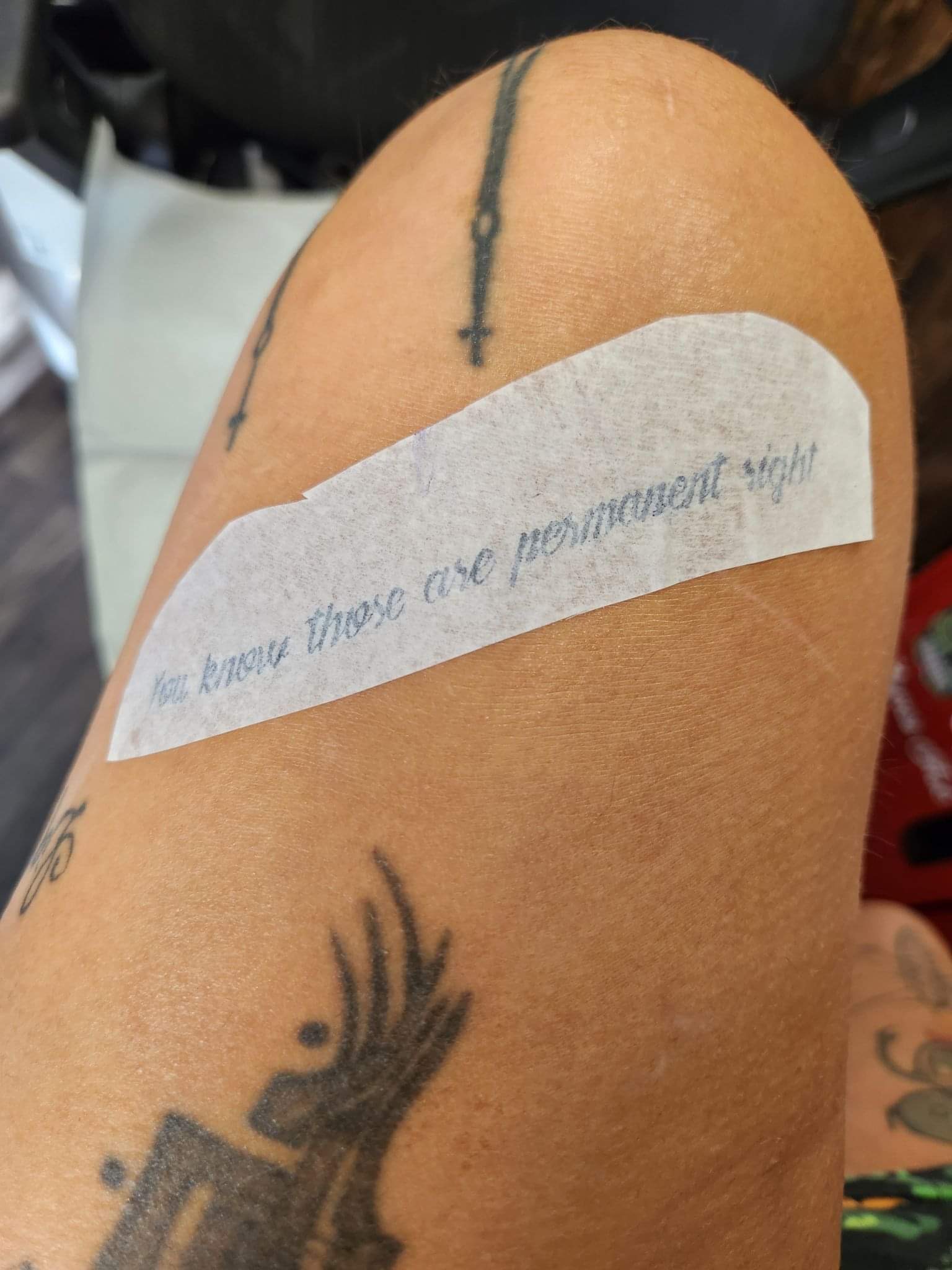
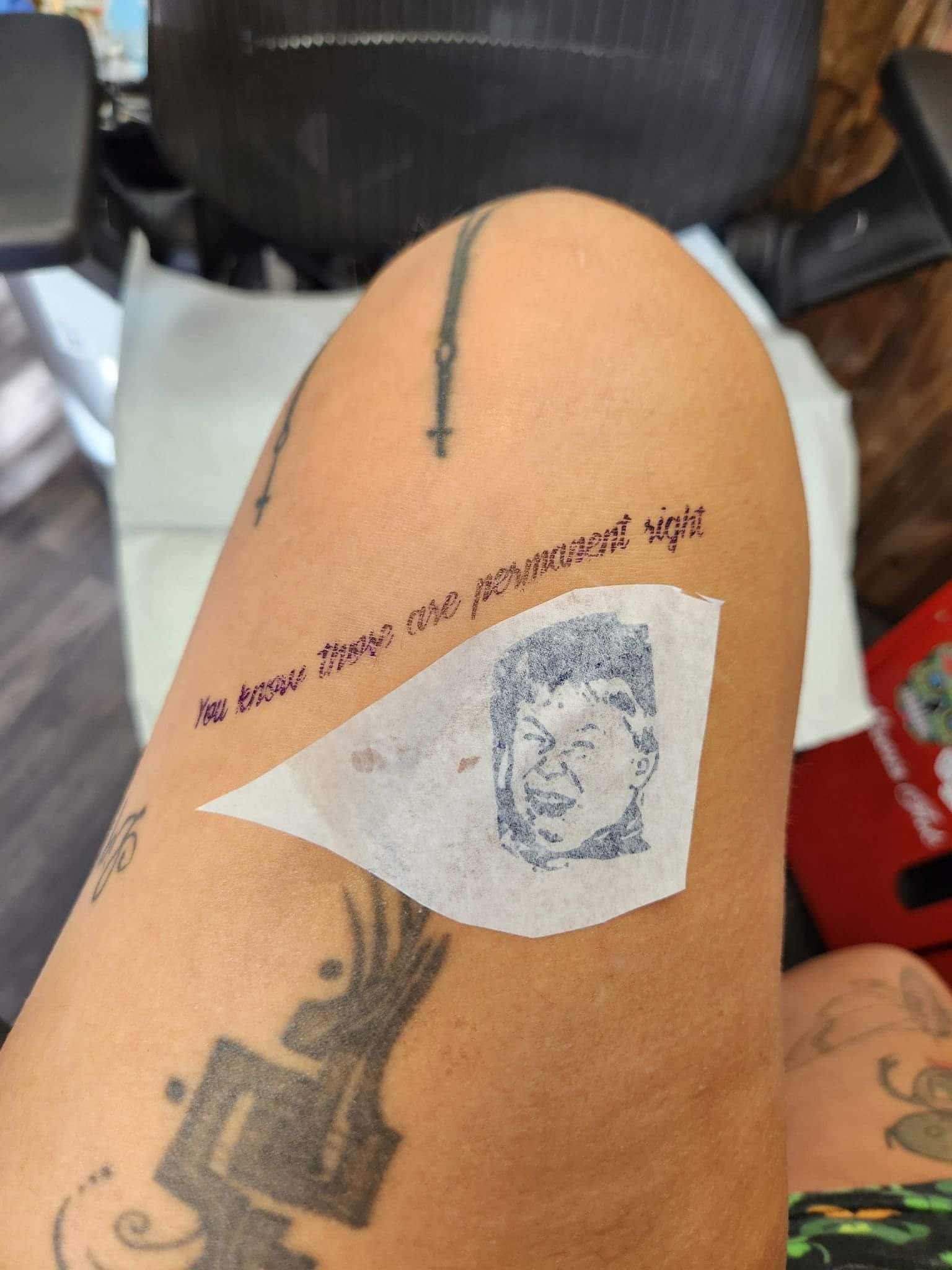

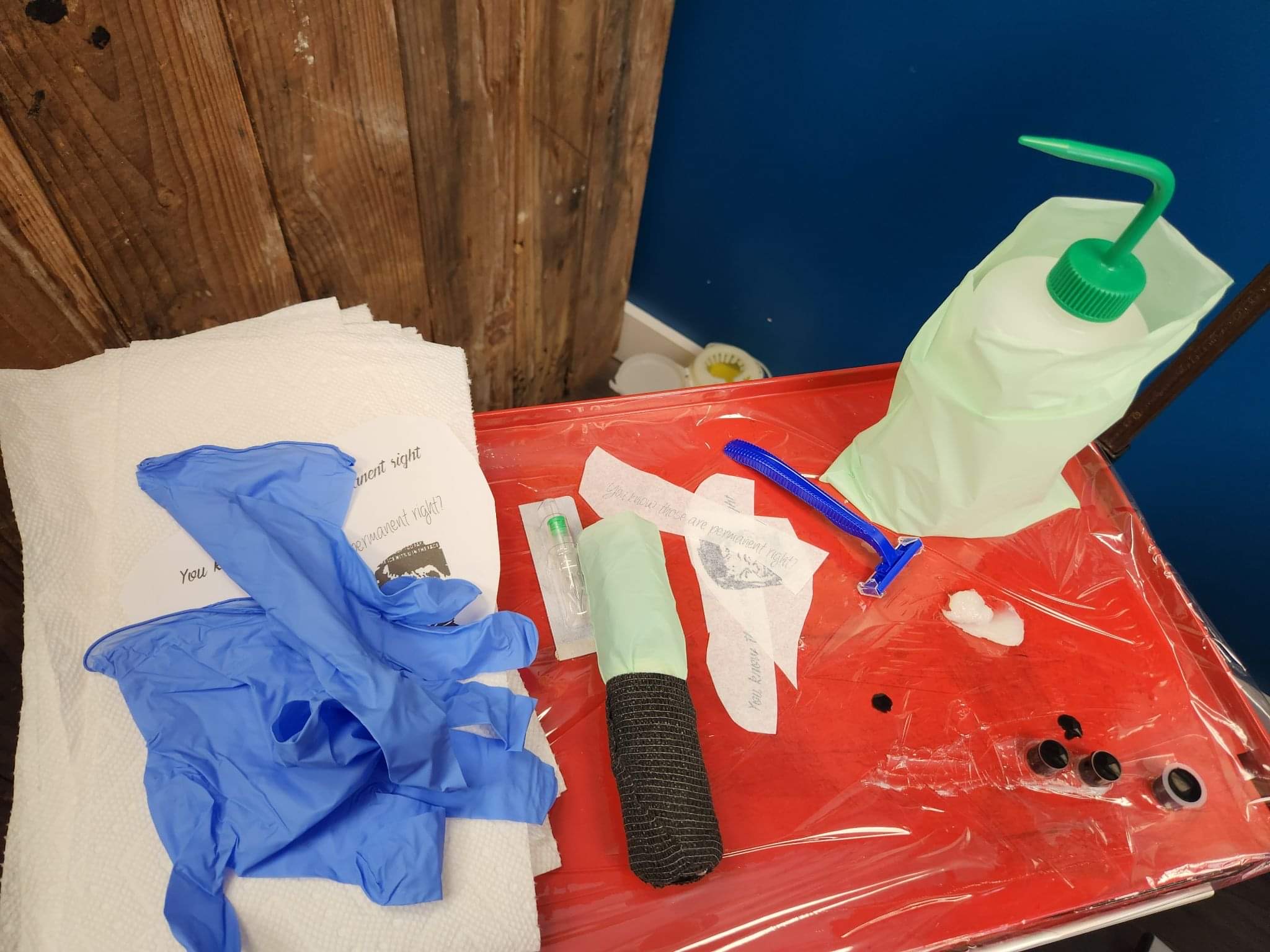
Slow motion video of tattoo process – with sound !!!!
Phase 3 finished tattoo and healing documentation
Fresh tattoo into healing
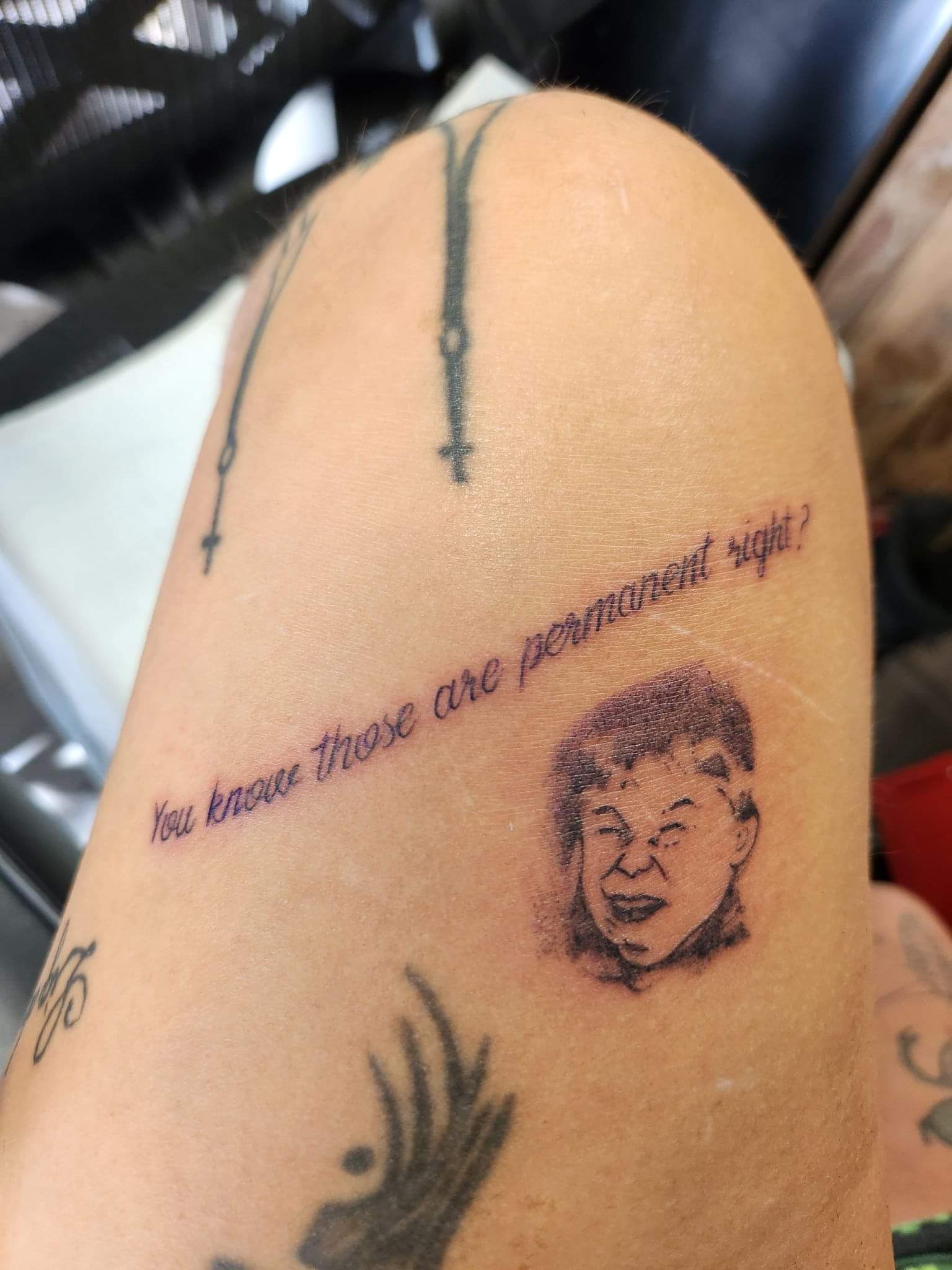
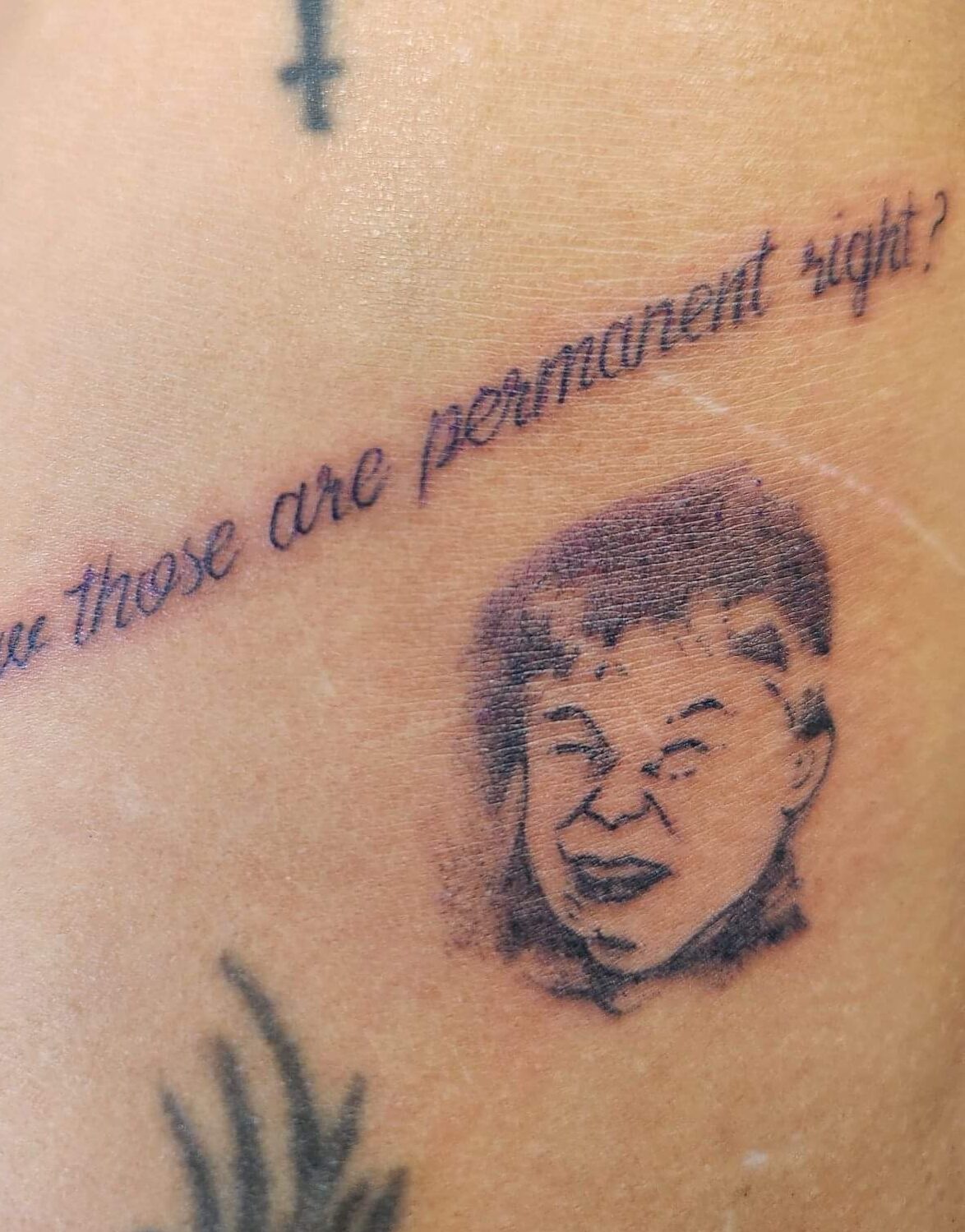
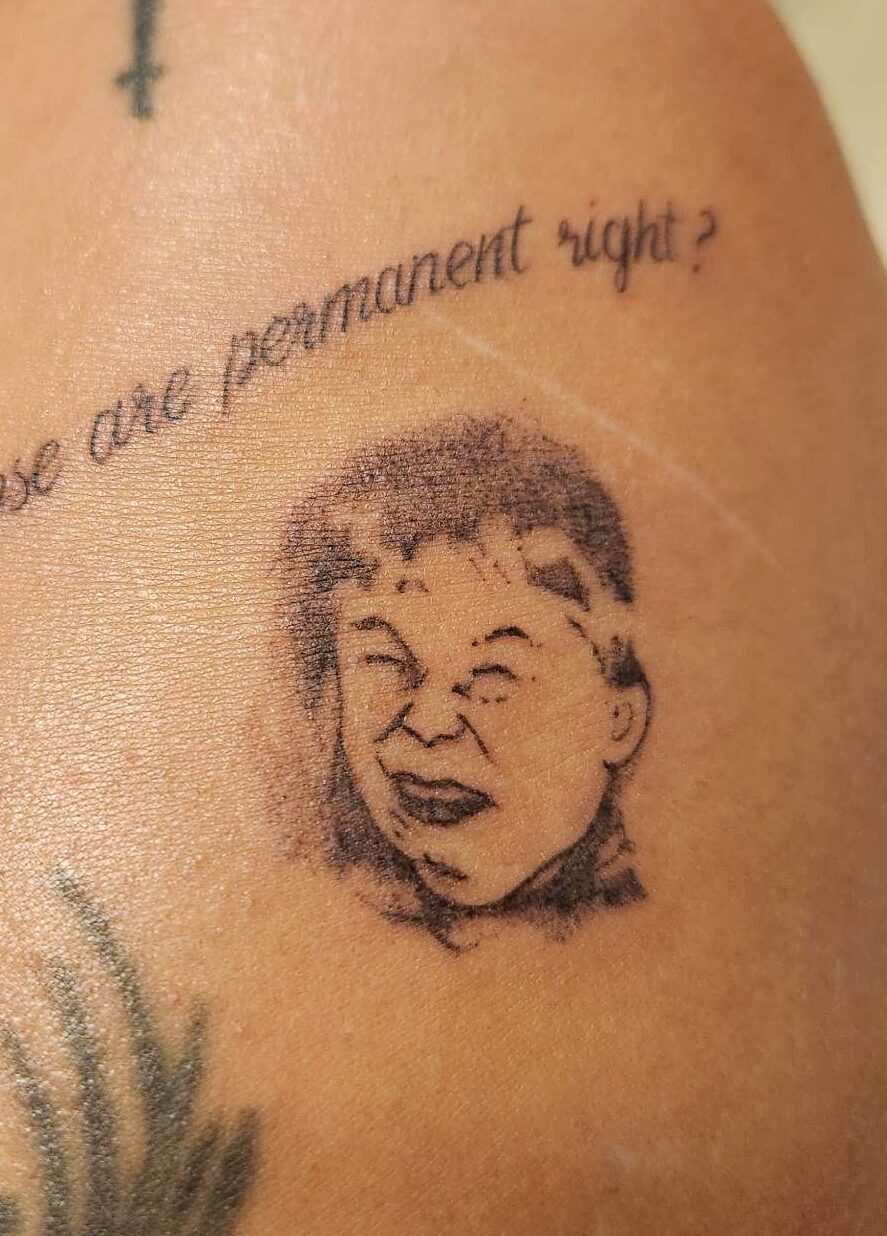
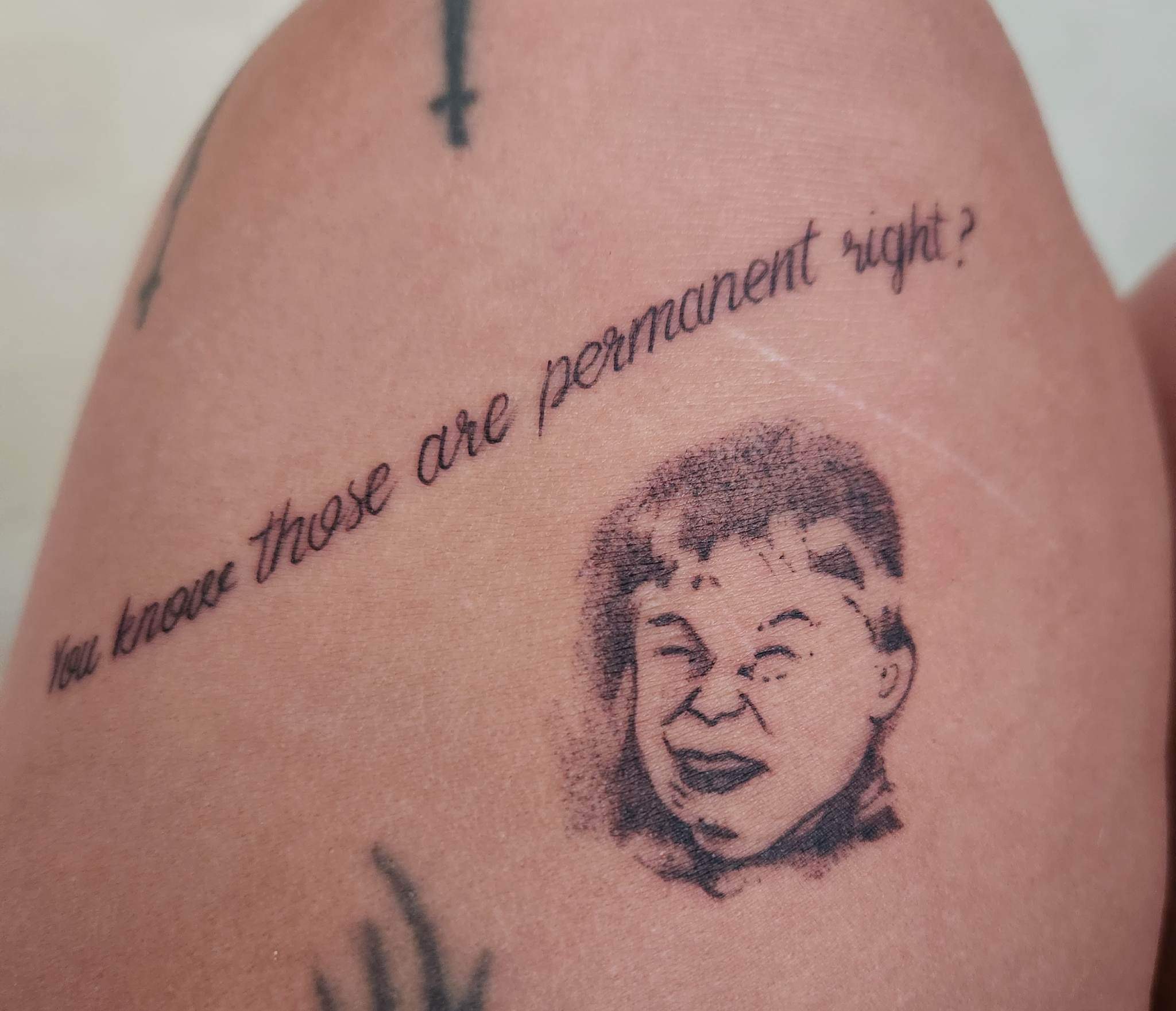
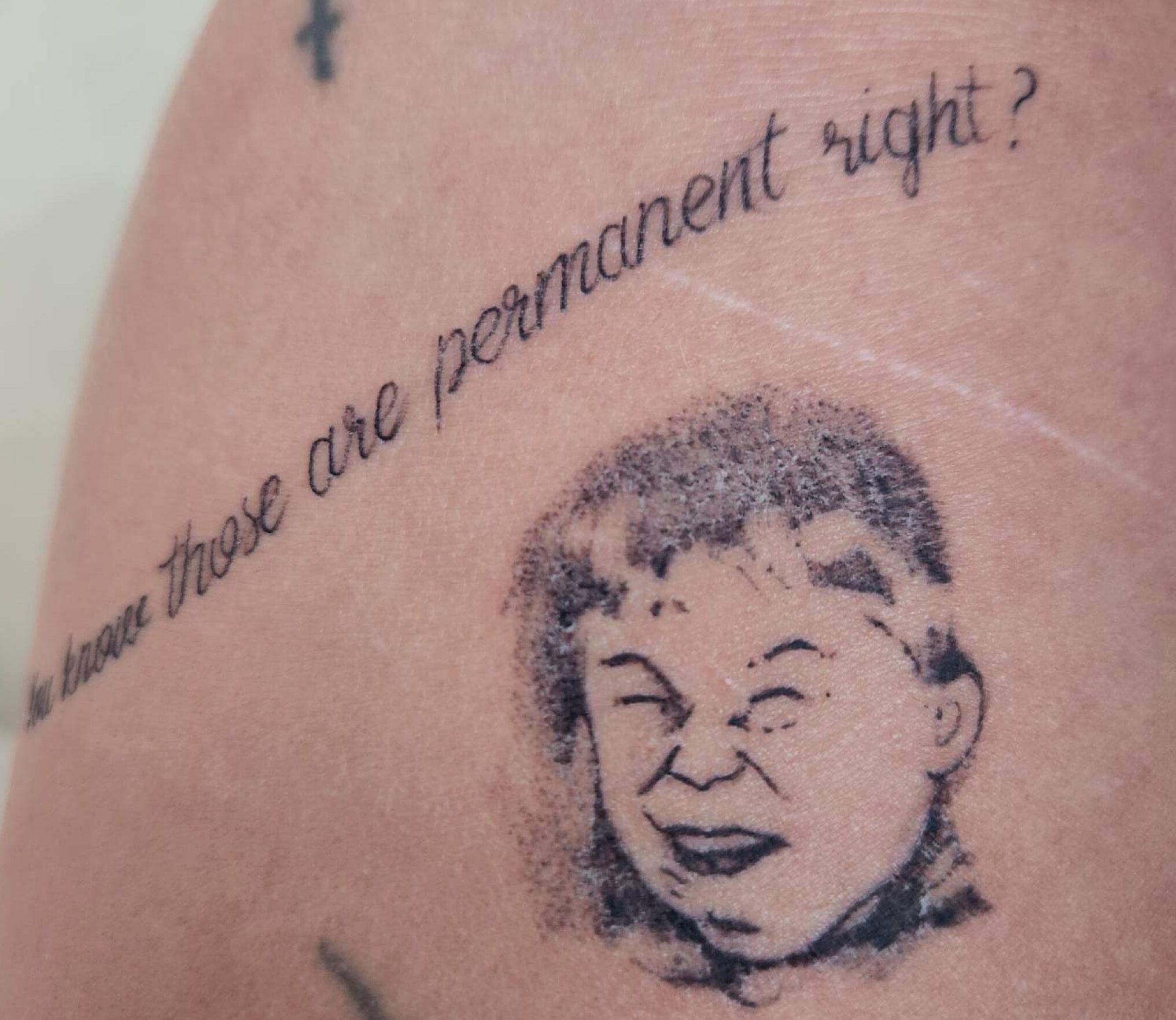
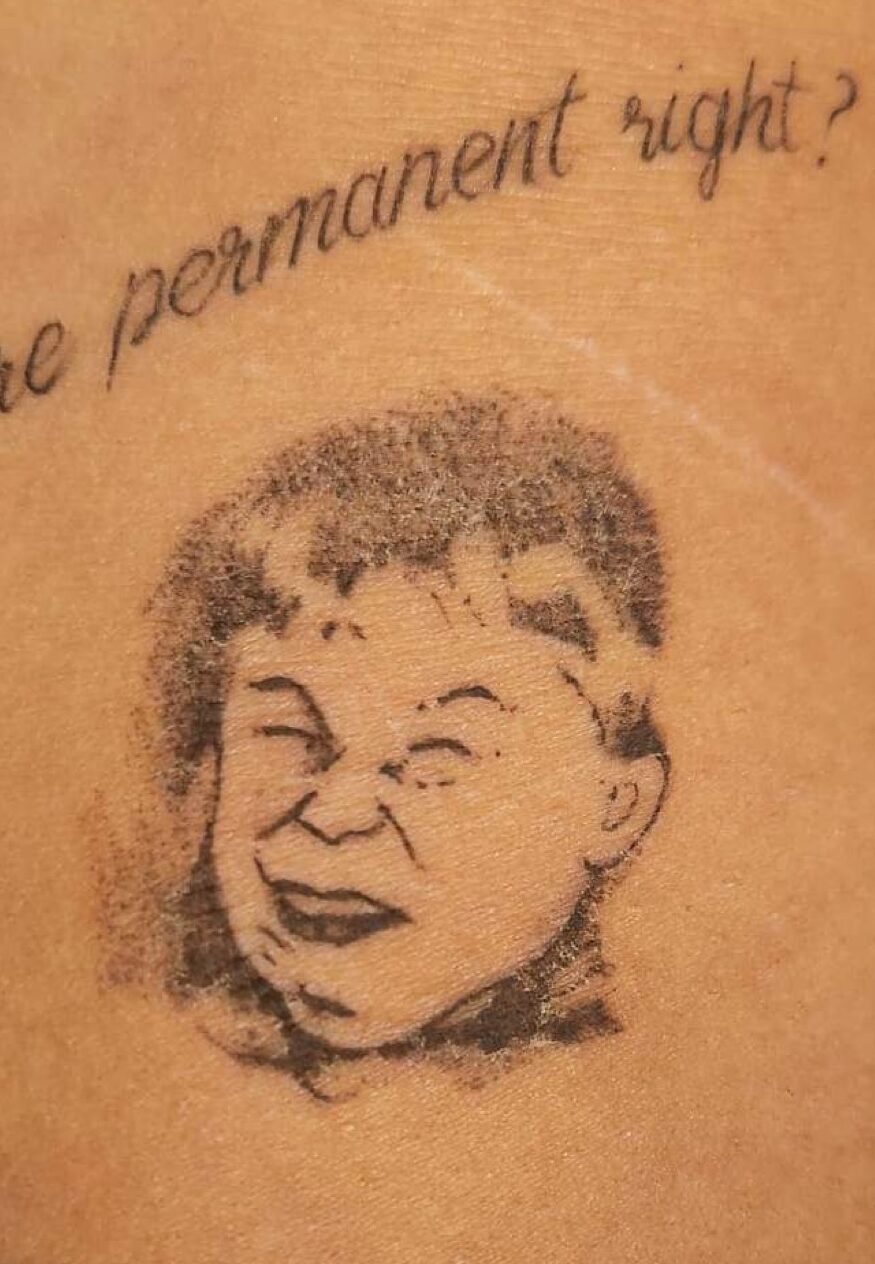

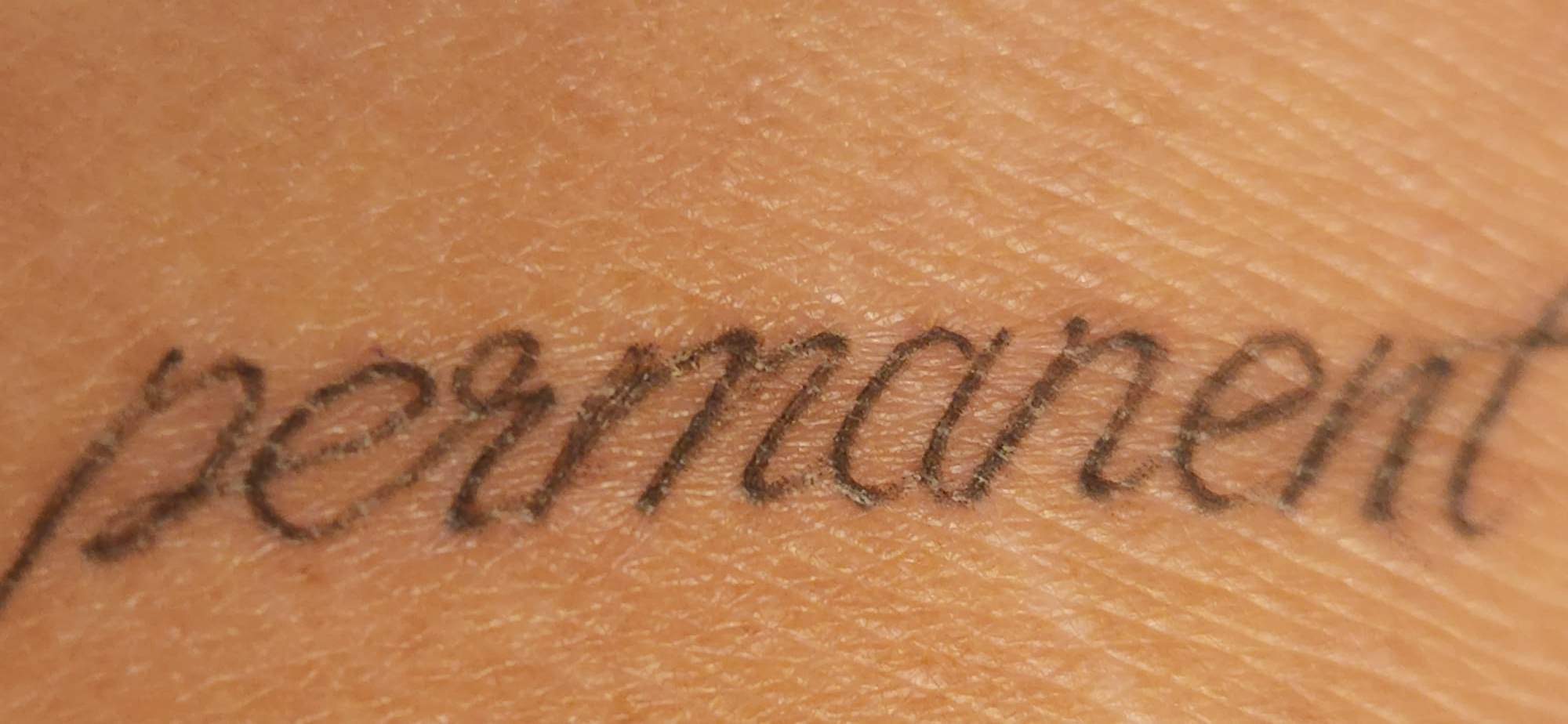
Healing progress detail shots collage
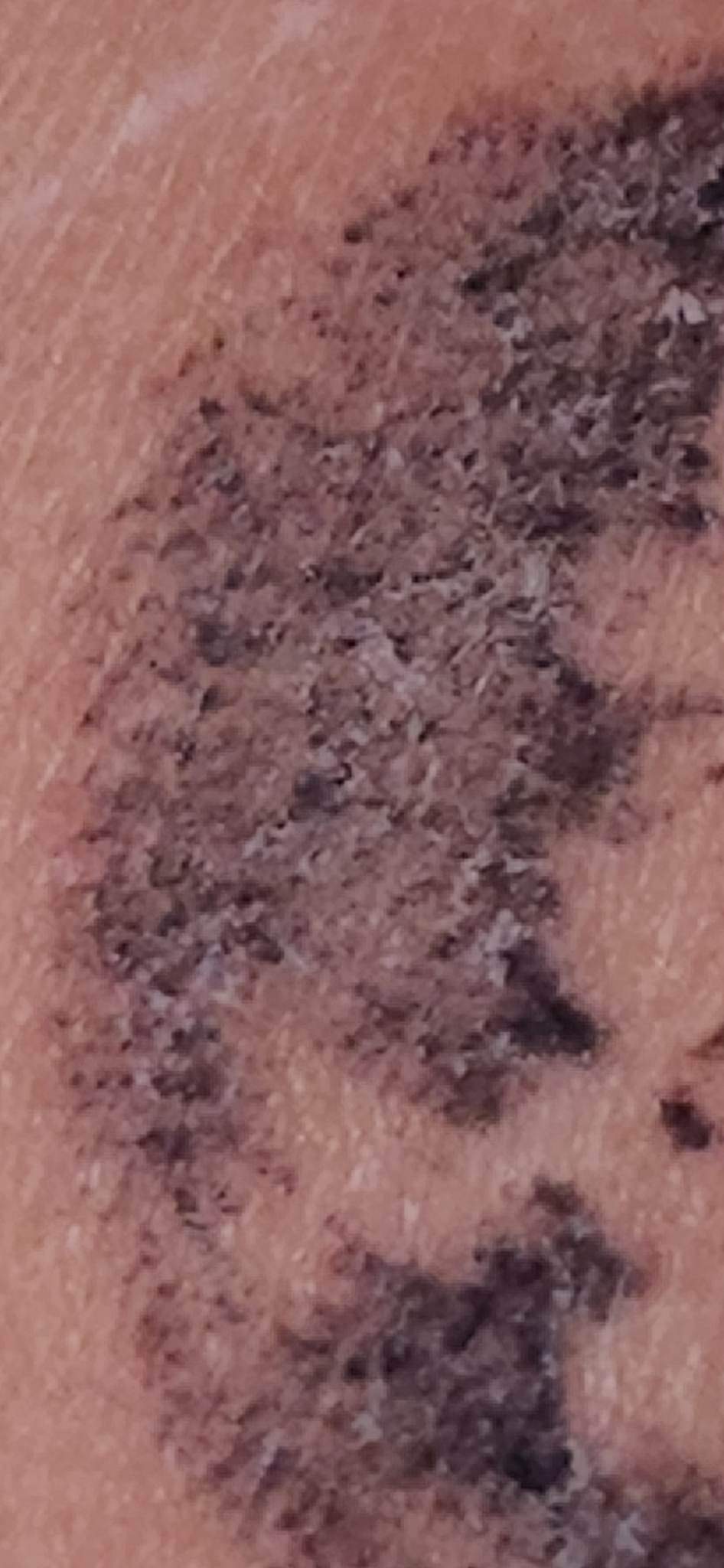
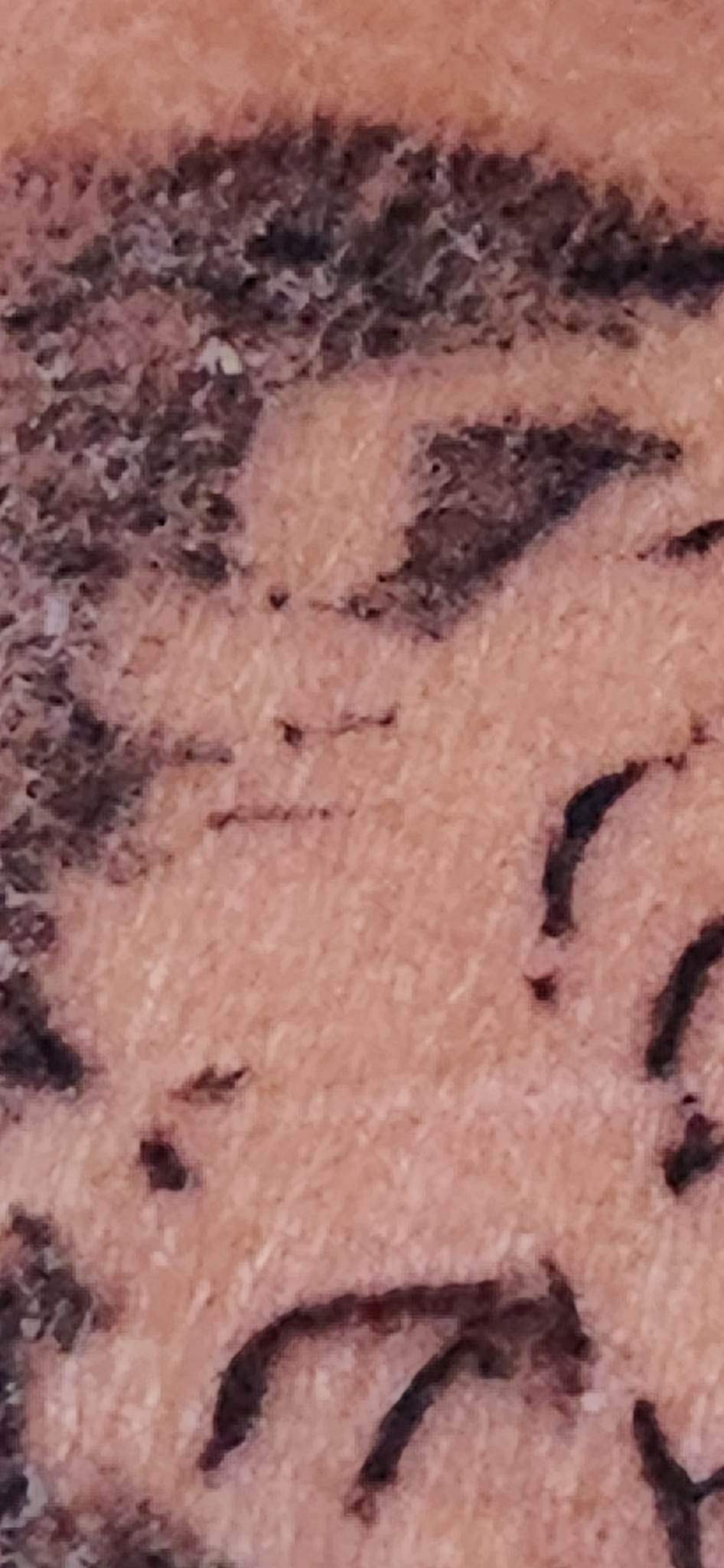
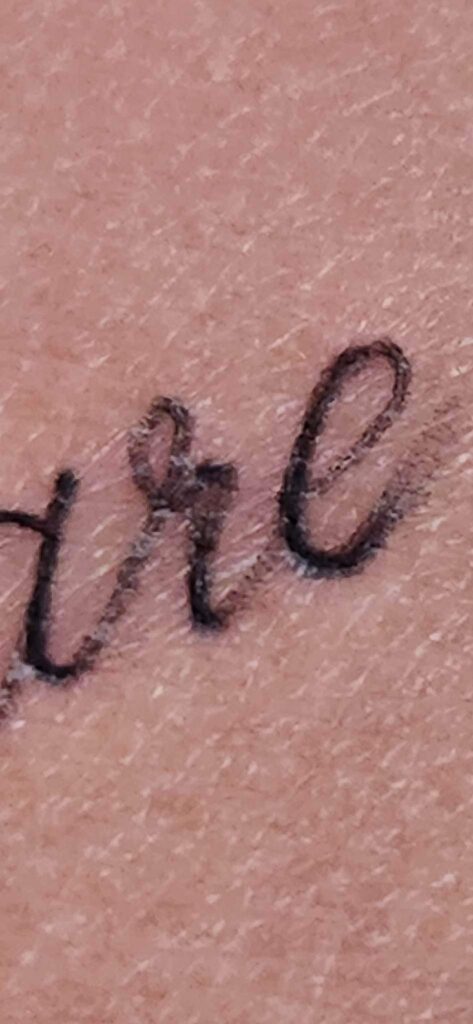
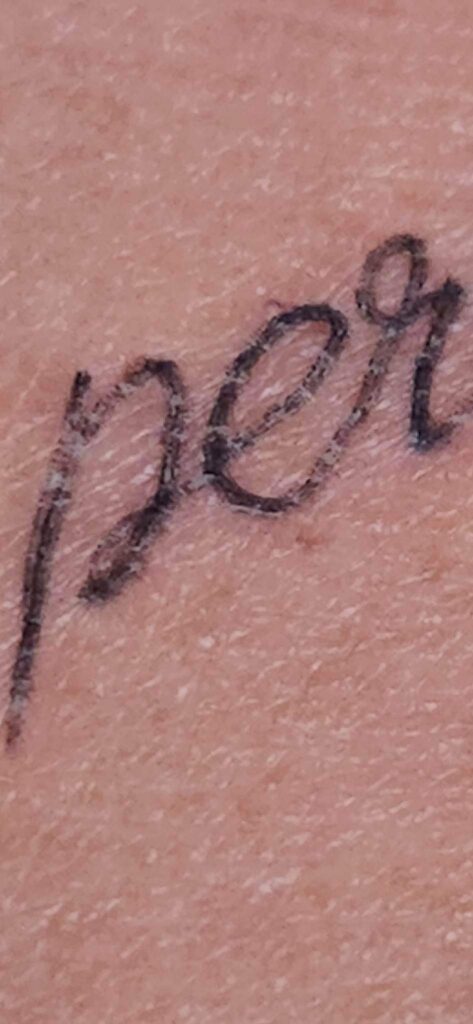
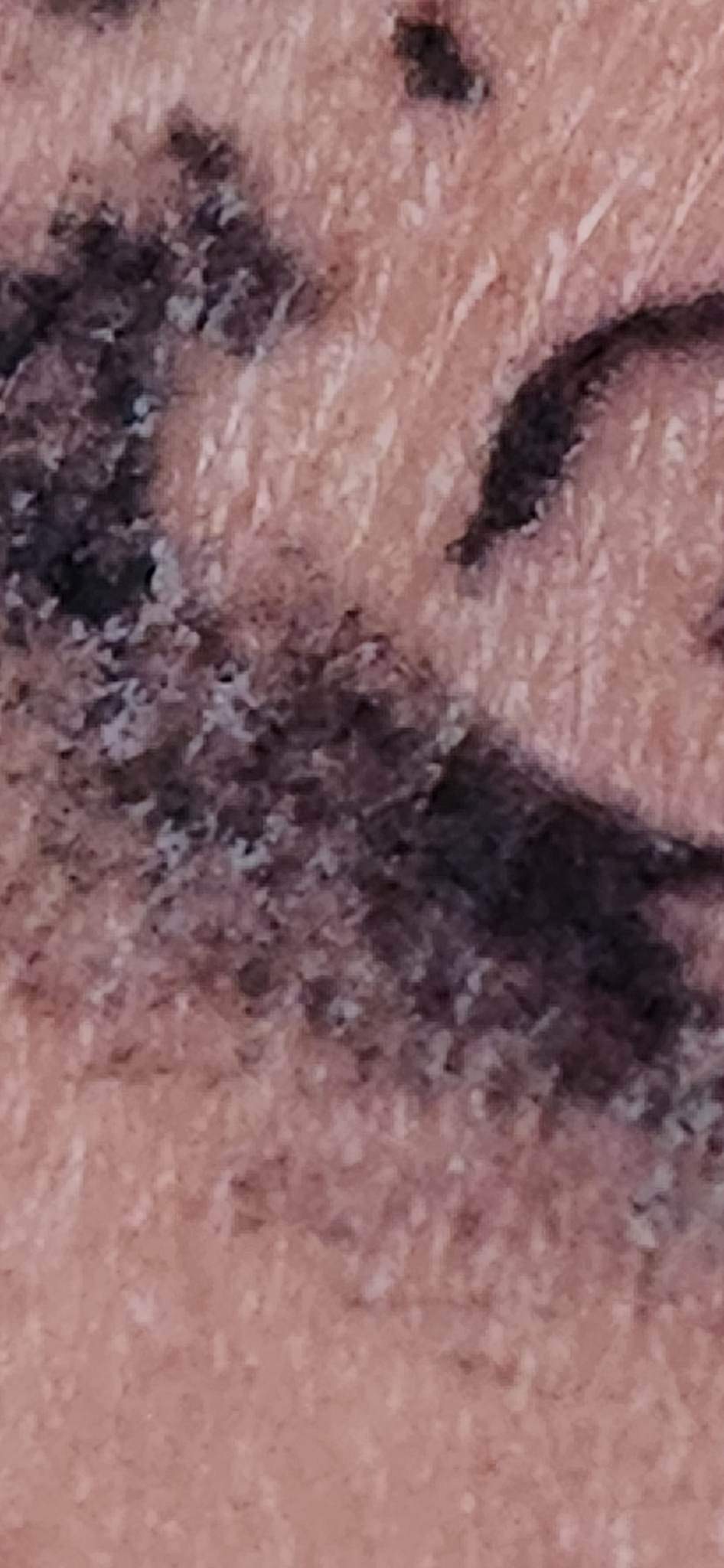
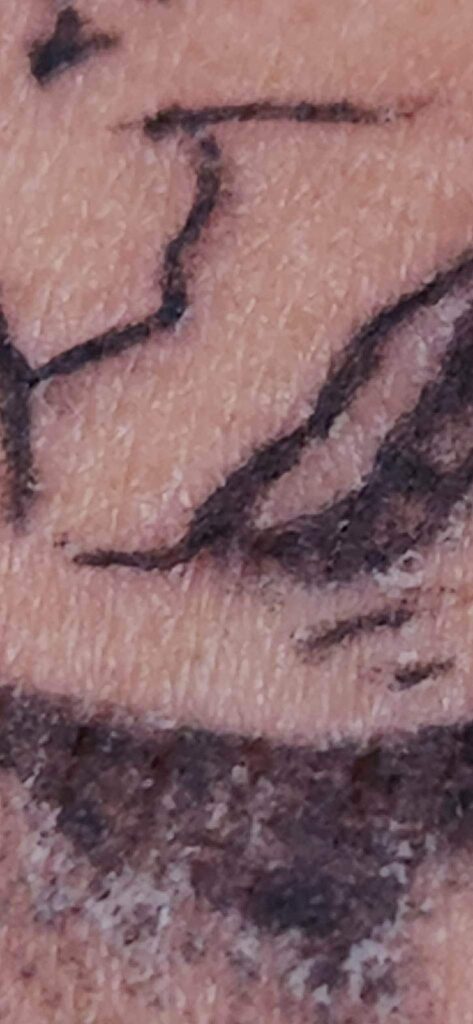
Tattooing is a process of going over the same thing over and over agsin in layers, so I made an abstract video with sound by repeating the same editing layer over and over on itself , and slowing the speed down each time, as with shading you slow right down to apply thin layers to build up depth, so i did the same thing with the video
Sol LeWitt prompts
- error
- incompleteness
- infinity
- completeness
- stupidness
- subversive
- not original
